The british east india company tea Stock Photos and Images
(127)See the british east india company tea stock video clipsQuick filters:
The british east india company tea Stock Photos and Images
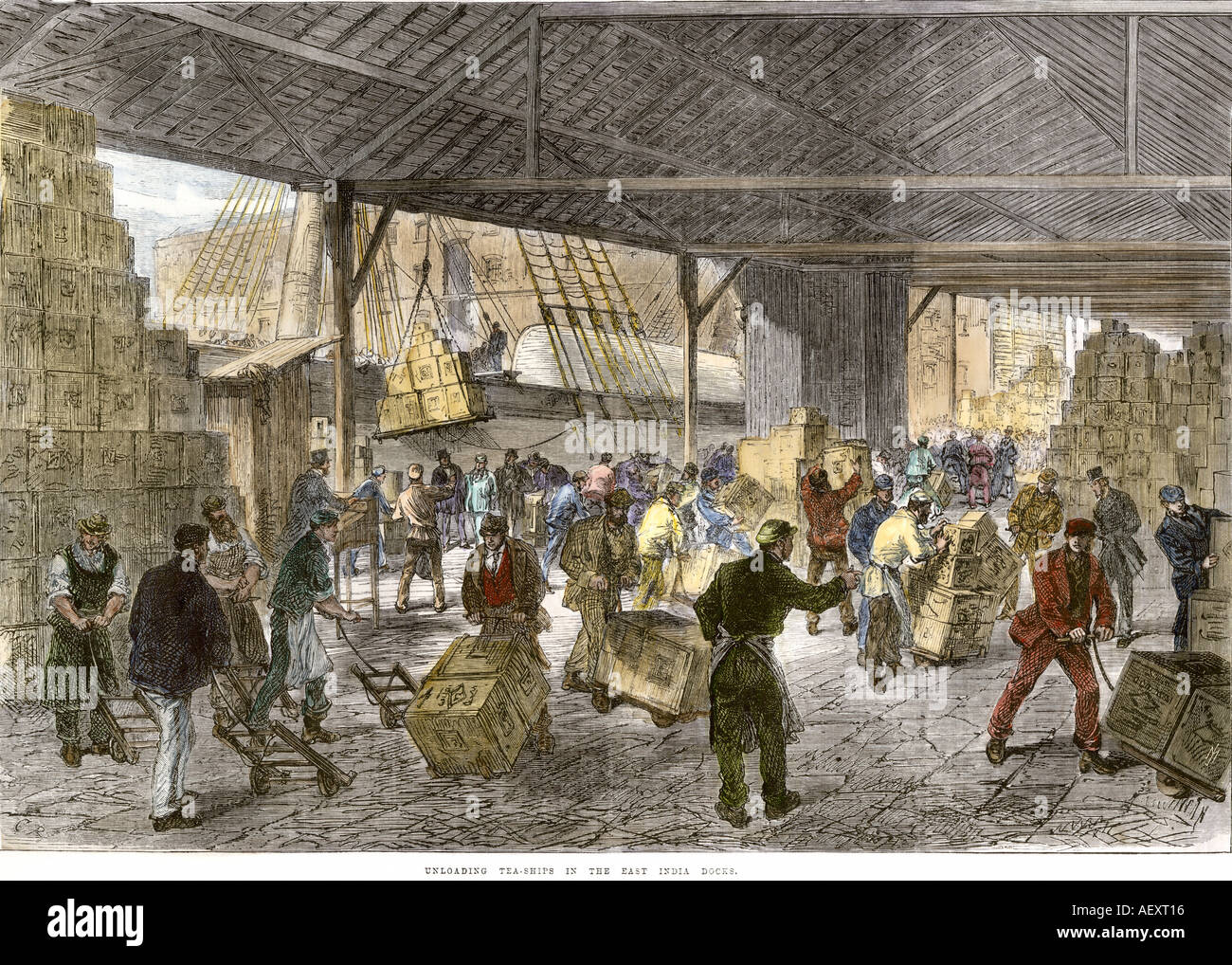 Unloading tea ships in the British East India Company docks in London 1860s. Hand-colored woodcut Stock Photohttps://www.alamy.com/image-license-details/?v=1https://www.alamy.com/unloading-tea-ships-in-the-british-east-india-company-docks-in-london-image4497429.html
Unloading tea ships in the British East India Company docks in London 1860s. Hand-colored woodcut Stock Photohttps://www.alamy.com/image-license-details/?v=1https://www.alamy.com/unloading-tea-ships-in-the-british-east-india-company-docks-in-london-image4497429.htmlRMAEXT16–Unloading tea ships in the British East India Company docks in London 1860s. Hand-colored woodcut
 A old document containing the oath of fidelity to the East India Company also known as EIC), the Honourable East India Company, HEIC, East India Trading Company, EITC, the British East India Company, or informally as the John Company, Company Bahadur, or simply The Company. It originally traded as Governor and Company of Merchants of London Trading into the East-Indies and traded cotton, silk, indigo dye, salt, spices, saltpetre, tea, and opium. It began trading circa 1600 and was absorbed by the British Indian government in 1858. Stock Photohttps://www.alamy.com/image-license-details/?v=1https://www.alamy.com/a-old-document-containing-the-oath-of-fidelity-to-the-east-india-company-also-known-as-eic-the-honourable-east-india-company-heic-east-india-trading-company-eitc-the-british-east-india-company-or-informally-as-the-john-company-company-bahadur-or-simply-the-company-it-originally-traded-as-governor-and-company-of-merchants-of-london-trading-into-the-east-indies-and-traded-cotton-silk-indigo-dye-salt-spices-saltpetre-tea-and-opium-it-began-trading-circa-1600-and-was-absorbed-by-the-british-indian-government-in-1858-image351454087.html
A old document containing the oath of fidelity to the East India Company also known as EIC), the Honourable East India Company, HEIC, East India Trading Company, EITC, the British East India Company, or informally as the John Company, Company Bahadur, or simply The Company. It originally traded as Governor and Company of Merchants of London Trading into the East-Indies and traded cotton, silk, indigo dye, salt, spices, saltpetre, tea, and opium. It began trading circa 1600 and was absorbed by the British Indian government in 1858. Stock Photohttps://www.alamy.com/image-license-details/?v=1https://www.alamy.com/a-old-document-containing-the-oath-of-fidelity-to-the-east-india-company-also-known-as-eic-the-honourable-east-india-company-heic-east-india-trading-company-eitc-the-british-east-india-company-or-informally-as-the-john-company-company-bahadur-or-simply-the-company-it-originally-traded-as-governor-and-company-of-merchants-of-london-trading-into-the-east-indies-and-traded-cotton-silk-indigo-dye-salt-spices-saltpetre-tea-and-opium-it-began-trading-circa-1600-and-was-absorbed-by-the-british-indian-government-in-1858-image351454087.htmlRM2BBP37K–A old document containing the oath of fidelity to the East India Company also known as EIC), the Honourable East India Company, HEIC, East India Trading Company, EITC, the British East India Company, or informally as the John Company, Company Bahadur, or simply The Company. It originally traded as Governor and Company of Merchants of London Trading into the East-Indies and traded cotton, silk, indigo dye, salt, spices, saltpetre, tea, and opium. It began trading circa 1600 and was absorbed by the British Indian government in 1858.
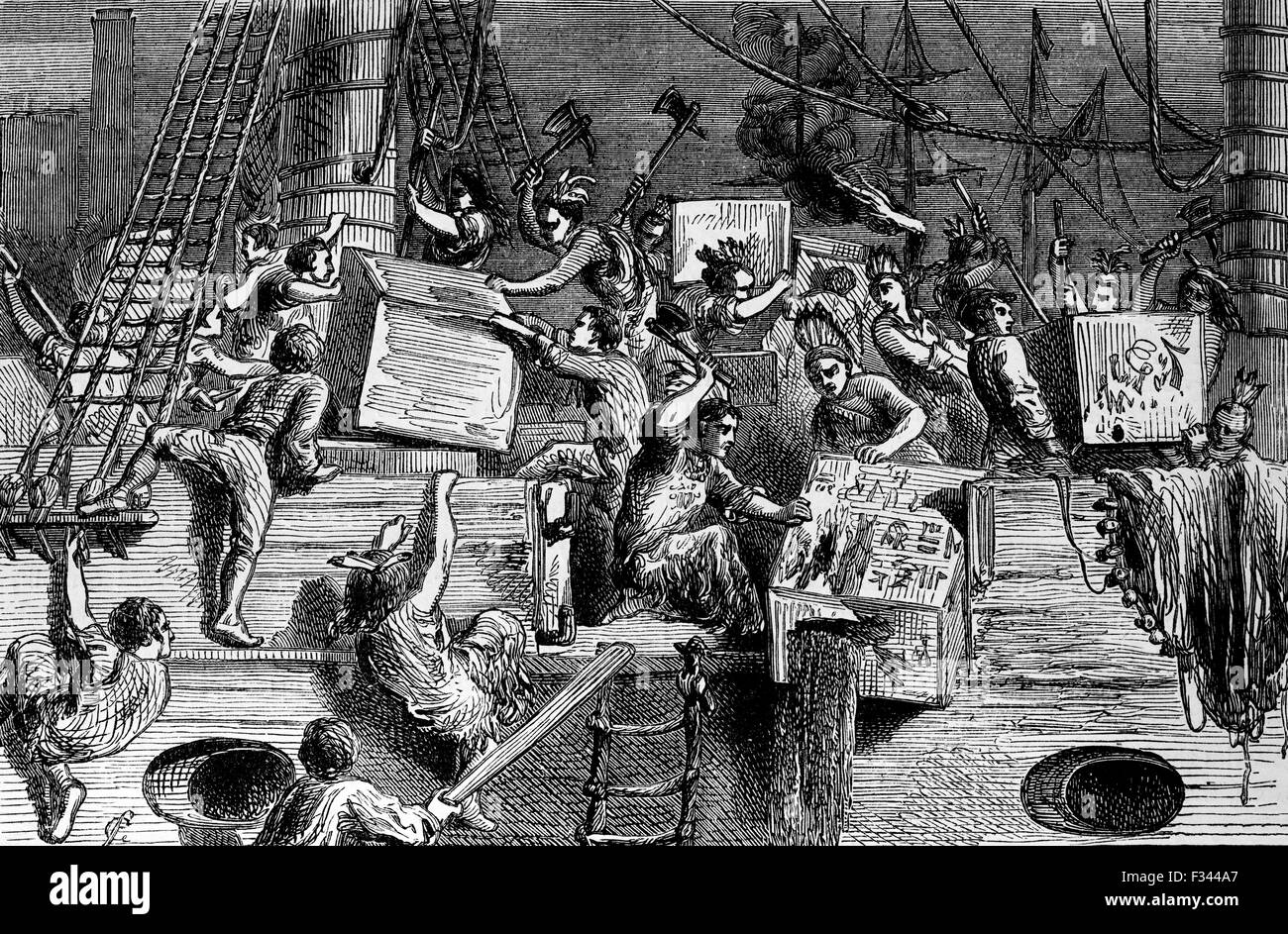 CONTROLLING EAST INDIA COMPANYThe Boston Tea Party was a political protest by the Sons of Liberty in Boston, in the British colony of Massachusetts, against the British government and the East India Company that controlled all the tea imported into the colonies. On December 16, 1773, after officials in Boston refused to return three shiploads of taxed tea to Britain, a group of colonists boarded the ships and destroyed the tea by throwing it into Boston Harbor. Stock Photohttps://www.alamy.com/image-license-details/?v=1https://www.alamy.com/stock-photo-controlling-east-india-companythe-boston-tea-party-was-a-political-87987039.html
CONTROLLING EAST INDIA COMPANYThe Boston Tea Party was a political protest by the Sons of Liberty in Boston, in the British colony of Massachusetts, against the British government and the East India Company that controlled all the tea imported into the colonies. On December 16, 1773, after officials in Boston refused to return three shiploads of taxed tea to Britain, a group of colonists boarded the ships and destroyed the tea by throwing it into Boston Harbor. Stock Photohttps://www.alamy.com/image-license-details/?v=1https://www.alamy.com/stock-photo-controlling-east-india-companythe-boston-tea-party-was-a-political-87987039.htmlRMF344A7–CONTROLLING EAST INDIA COMPANYThe Boston Tea Party was a political protest by the Sons of Liberty in Boston, in the British colony of Massachusetts, against the British government and the East India Company that controlled all the tea imported into the colonies. On December 16, 1773, after officials in Boston refused to return three shiploads of taxed tea to Britain, a group of colonists boarded the ships and destroyed the tea by throwing it into Boston Harbor.
 United Kingdom: Botanical drawing of different types of tea, 1915 According to oral tradition, tea has been grown in China for more than four millennia. The earliest written accounts of tea making, however, date from around 350 CE, when it first became a drink at the imperial court. Around 800 CE tea seeds were taken to Japan, where regular cultivation was soon established. Just over five centuries later, in 1517, tea was first shipped to Europe by the Portuguese soon after they began their trade with China. In 1667 the Honourable East India Company ordered the first British shipment of tea. Stock Photohttps://www.alamy.com/image-license-details/?v=1https://www.alamy.com/united-kingdom-botanical-drawing-of-different-types-of-tea-1915-according-to-oral-tradition-tea-has-been-grown-in-china-for-more-than-four-millennia-the-earliest-written-accounts-of-tea-making-however-date-from-around-350-ce-when-it-first-became-a-drink-at-the-imperial-court-around-800-ce-tea-seeds-were-taken-to-japan-where-regular-cultivation-was-soon-established-just-over-five-centuries-later-in-1517-tea-was-first-shipped-to-europe-by-the-portuguese-soon-after-they-began-their-trade-with-china-in-1667-the-honourable-east-india-company-ordered-the-first-british-shipment-of-tea-image344251193.html
United Kingdom: Botanical drawing of different types of tea, 1915 According to oral tradition, tea has been grown in China for more than four millennia. The earliest written accounts of tea making, however, date from around 350 CE, when it first became a drink at the imperial court. Around 800 CE tea seeds were taken to Japan, where regular cultivation was soon established. Just over five centuries later, in 1517, tea was first shipped to Europe by the Portuguese soon after they began their trade with China. In 1667 the Honourable East India Company ordered the first British shipment of tea. Stock Photohttps://www.alamy.com/image-license-details/?v=1https://www.alamy.com/united-kingdom-botanical-drawing-of-different-types-of-tea-1915-according-to-oral-tradition-tea-has-been-grown-in-china-for-more-than-four-millennia-the-earliest-written-accounts-of-tea-making-however-date-from-around-350-ce-when-it-first-became-a-drink-at-the-imperial-court-around-800-ce-tea-seeds-were-taken-to-japan-where-regular-cultivation-was-soon-established-just-over-five-centuries-later-in-1517-tea-was-first-shipped-to-europe-by-the-portuguese-soon-after-they-began-their-trade-with-china-in-1667-the-honourable-east-india-company-ordered-the-first-british-shipment-of-tea-image344251193.htmlRM2B01YWD–United Kingdom: Botanical drawing of different types of tea, 1915 According to oral tradition, tea has been grown in China for more than four millennia. The earliest written accounts of tea making, however, date from around 350 CE, when it first became a drink at the imperial court. Around 800 CE tea seeds were taken to Japan, where regular cultivation was soon established. Just over five centuries later, in 1517, tea was first shipped to Europe by the Portuguese soon after they began their trade with China. In 1667 the Honourable East India Company ordered the first British shipment of tea.
![The Boston Tea Party was an American political and mercantile protest on December 16, 1773, by the Sons of Liberty in Boston in colonial Massachusetts.[2] The target was the Tea Act of May 10, 1773, which allowed the East India Company to sell tea from China in American colonies without paying taxes apart from those imposed by the Townshend Acts. The Sons of Liberty, some disguised as Native Americans, destroyed an entire shipment of tea sent by the East India Company. Stock Photo The Boston Tea Party was an American political and mercantile protest on December 16, 1773, by the Sons of Liberty in Boston in colonial Massachusetts.[2] The target was the Tea Act of May 10, 1773, which allowed the East India Company to sell tea from China in American colonies without paying taxes apart from those imposed by the Townshend Acts. The Sons of Liberty, some disguised as Native Americans, destroyed an entire shipment of tea sent by the East India Company. Stock Photo](https://c8.alamy.com/comp/2YRXWH4/the-boston-tea-party-was-an-american-political-and-mercantile-protest-on-december-16-1773-by-the-sons-of-liberty-in-boston-in-colonial-massachusetts-2-the-target-was-the-tea-act-of-may-10-1773-which-allowed-the-east-india-company-to-sell-tea-from-china-in-american-colonies-without-paying-taxes-apart-from-those-imposed-by-the-townshend-acts-the-sons-of-liberty-some-disguised-as-native-americans-destroyed-an-entire-shipment-of-tea-sent-by-the-east-india-company-2YRXWH4.jpg) The Boston Tea Party was an American political and mercantile protest on December 16, 1773, by the Sons of Liberty in Boston in colonial Massachusetts.[2] The target was the Tea Act of May 10, 1773, which allowed the East India Company to sell tea from China in American colonies without paying taxes apart from those imposed by the Townshend Acts. The Sons of Liberty, some disguised as Native Americans, destroyed an entire shipment of tea sent by the East India Company. Stock Photohttps://www.alamy.com/image-license-details/?v=1https://www.alamy.com/the-boston-tea-party-was-an-american-political-and-mercantile-protest-on-december-16-1773-by-the-sons-of-liberty-in-boston-in-colonial-massachusetts-2-the-target-was-the-tea-act-of-may-10-1773-which-allowed-the-east-india-company-to-sell-tea-from-china-in-american-colonies-without-paying-taxes-apart-from-those-imposed-by-the-townshend-acts-the-sons-of-liberty-some-disguised-as-native-americans-destroyed-an-entire-shipment-of-tea-sent-by-the-east-india-company-image634301168.html
The Boston Tea Party was an American political and mercantile protest on December 16, 1773, by the Sons of Liberty in Boston in colonial Massachusetts.[2] The target was the Tea Act of May 10, 1773, which allowed the East India Company to sell tea from China in American colonies without paying taxes apart from those imposed by the Townshend Acts. The Sons of Liberty, some disguised as Native Americans, destroyed an entire shipment of tea sent by the East India Company. Stock Photohttps://www.alamy.com/image-license-details/?v=1https://www.alamy.com/the-boston-tea-party-was-an-american-political-and-mercantile-protest-on-december-16-1773-by-the-sons-of-liberty-in-boston-in-colonial-massachusetts-2-the-target-was-the-tea-act-of-may-10-1773-which-allowed-the-east-india-company-to-sell-tea-from-china-in-american-colonies-without-paying-taxes-apart-from-those-imposed-by-the-townshend-acts-the-sons-of-liberty-some-disguised-as-native-americans-destroyed-an-entire-shipment-of-tea-sent-by-the-east-india-company-image634301168.htmlRM2YRXWH4–The Boston Tea Party was an American political and mercantile protest on December 16, 1773, by the Sons of Liberty in Boston in colonial Massachusetts.[2] The target was the Tea Act of May 10, 1773, which allowed the East India Company to sell tea from China in American colonies without paying taxes apart from those imposed by the Townshend Acts. The Sons of Liberty, some disguised as Native Americans, destroyed an entire shipment of tea sent by the East India Company.
 Taiwan: Gao Shan Oolong tea, Chutung (Zhudong) Sunday Market, Hsinchu County. According to oral tradition, tea has been grown in China for more than four millennia. The earliest written accounts of tea making, however, date from around 350 CE, when it first became a drink at the imperial court. Around 800 CE tea seeds were taken to Japan, where regular cultivation was soon established. Just over five centuries later, in 1517, tea was first shipped to Europe by the Portuguese soon after they began their trade with China. In 1667 the East India Company ordered the first British shipment. Stock Photohttps://www.alamy.com/image-license-details/?v=1https://www.alamy.com/taiwan-gao-shan-oolong-tea-chutung-zhudong-sunday-market-hsinchu-county-according-to-oral-tradition-tea-has-been-grown-in-china-for-more-than-four-millennia-the-earliest-written-accounts-of-tea-making-however-date-from-around-350-ce-when-it-first-became-a-drink-at-the-imperial-court-around-800-ce-tea-seeds-were-taken-to-japan-where-regular-cultivation-was-soon-established-just-over-five-centuries-later-in-1517-tea-was-first-shipped-to-europe-by-the-portuguese-soon-after-they-began-their-trade-with-china-in-1667-the-east-india-company-ordered-the-first-british-shipment-image344251108.html
Taiwan: Gao Shan Oolong tea, Chutung (Zhudong) Sunday Market, Hsinchu County. According to oral tradition, tea has been grown in China for more than four millennia. The earliest written accounts of tea making, however, date from around 350 CE, when it first became a drink at the imperial court. Around 800 CE tea seeds were taken to Japan, where regular cultivation was soon established. Just over five centuries later, in 1517, tea was first shipped to Europe by the Portuguese soon after they began their trade with China. In 1667 the East India Company ordered the first British shipment. Stock Photohttps://www.alamy.com/image-license-details/?v=1https://www.alamy.com/taiwan-gao-shan-oolong-tea-chutung-zhudong-sunday-market-hsinchu-county-according-to-oral-tradition-tea-has-been-grown-in-china-for-more-than-four-millennia-the-earliest-written-accounts-of-tea-making-however-date-from-around-350-ce-when-it-first-became-a-drink-at-the-imperial-court-around-800-ce-tea-seeds-were-taken-to-japan-where-regular-cultivation-was-soon-established-just-over-five-centuries-later-in-1517-tea-was-first-shipped-to-europe-by-the-portuguese-soon-after-they-began-their-trade-with-china-in-1667-the-east-india-company-ordered-the-first-british-shipment-image344251108.htmlRM2B01YPC–Taiwan: Gao Shan Oolong tea, Chutung (Zhudong) Sunday Market, Hsinchu County. According to oral tradition, tea has been grown in China for more than four millennia. The earliest written accounts of tea making, however, date from around 350 CE, when it first became a drink at the imperial court. Around 800 CE tea seeds were taken to Japan, where regular cultivation was soon established. Just over five centuries later, in 1517, tea was first shipped to Europe by the Portuguese soon after they began their trade with China. In 1667 the East India Company ordered the first British shipment.
 Packing tea in the warehouses of the East & West India Dock Company, London, 1874 Artist: Unknown Stock Photohttps://www.alamy.com/image-license-details/?v=1https://www.alamy.com/packing-tea-in-the-warehouses-of-the-east-west-india-dock-company-image8383150.html
Packing tea in the warehouses of the East & West India Dock Company, London, 1874 Artist: Unknown Stock Photohttps://www.alamy.com/image-license-details/?v=1https://www.alamy.com/packing-tea-in-the-warehouses-of-the-east-west-india-dock-company-image8383150.htmlRMAJA0XF–Packing tea in the warehouses of the East & West India Dock Company, London, 1874 Artist: Unknown
 China: Blocks of tea for sale in a market in Foshan, Guangdong Province. According to oral tradition, tea has been grown in China for more than four millennia. The earliest written accounts of tea making, however, date from around 350 CE, when it first became a drink at the imperial court. Around 800 CE tea seeds were taken to Japan, where regular cultivation was soon established. Just over five centuries later, in 1517, tea was first shipped to Europe by the Portuguese soon after they began their trade with China. In 1667 the Honourable East India Company ordered the first British shipment. Stock Photohttps://www.alamy.com/image-license-details/?v=1https://www.alamy.com/china-blocks-of-tea-for-sale-in-a-market-in-foshan-guangdong-province-according-to-oral-tradition-tea-has-been-grown-in-china-for-more-than-four-millennia-the-earliest-written-accounts-of-tea-making-however-date-from-around-350-ce-when-it-first-became-a-drink-at-the-imperial-court-around-800-ce-tea-seeds-were-taken-to-japan-where-regular-cultivation-was-soon-established-just-over-five-centuries-later-in-1517-tea-was-first-shipped-to-europe-by-the-portuguese-soon-after-they-began-their-trade-with-china-in-1667-the-honourable-east-india-company-ordered-the-first-british-shipment-image344249007.html
China: Blocks of tea for sale in a market in Foshan, Guangdong Province. According to oral tradition, tea has been grown in China for more than four millennia. The earliest written accounts of tea making, however, date from around 350 CE, when it first became a drink at the imperial court. Around 800 CE tea seeds were taken to Japan, where regular cultivation was soon established. Just over five centuries later, in 1517, tea was first shipped to Europe by the Portuguese soon after they began their trade with China. In 1667 the Honourable East India Company ordered the first British shipment. Stock Photohttps://www.alamy.com/image-license-details/?v=1https://www.alamy.com/china-blocks-of-tea-for-sale-in-a-market-in-foshan-guangdong-province-according-to-oral-tradition-tea-has-been-grown-in-china-for-more-than-four-millennia-the-earliest-written-accounts-of-tea-making-however-date-from-around-350-ce-when-it-first-became-a-drink-at-the-imperial-court-around-800-ce-tea-seeds-were-taken-to-japan-where-regular-cultivation-was-soon-established-just-over-five-centuries-later-in-1517-tea-was-first-shipped-to-europe-by-the-portuguese-soon-after-they-began-their-trade-with-china-in-1667-the-honourable-east-india-company-ordered-the-first-british-shipment-image344249007.htmlRM2B01W3B–China: Blocks of tea for sale in a market in Foshan, Guangdong Province. According to oral tradition, tea has been grown in China for more than four millennia. The earliest written accounts of tea making, however, date from around 350 CE, when it first became a drink at the imperial court. Around 800 CE tea seeds were taken to Japan, where regular cultivation was soon established. Just over five centuries later, in 1517, tea was first shipped to Europe by the Portuguese soon after they began their trade with China. In 1667 the Honourable East India Company ordered the first British shipment.
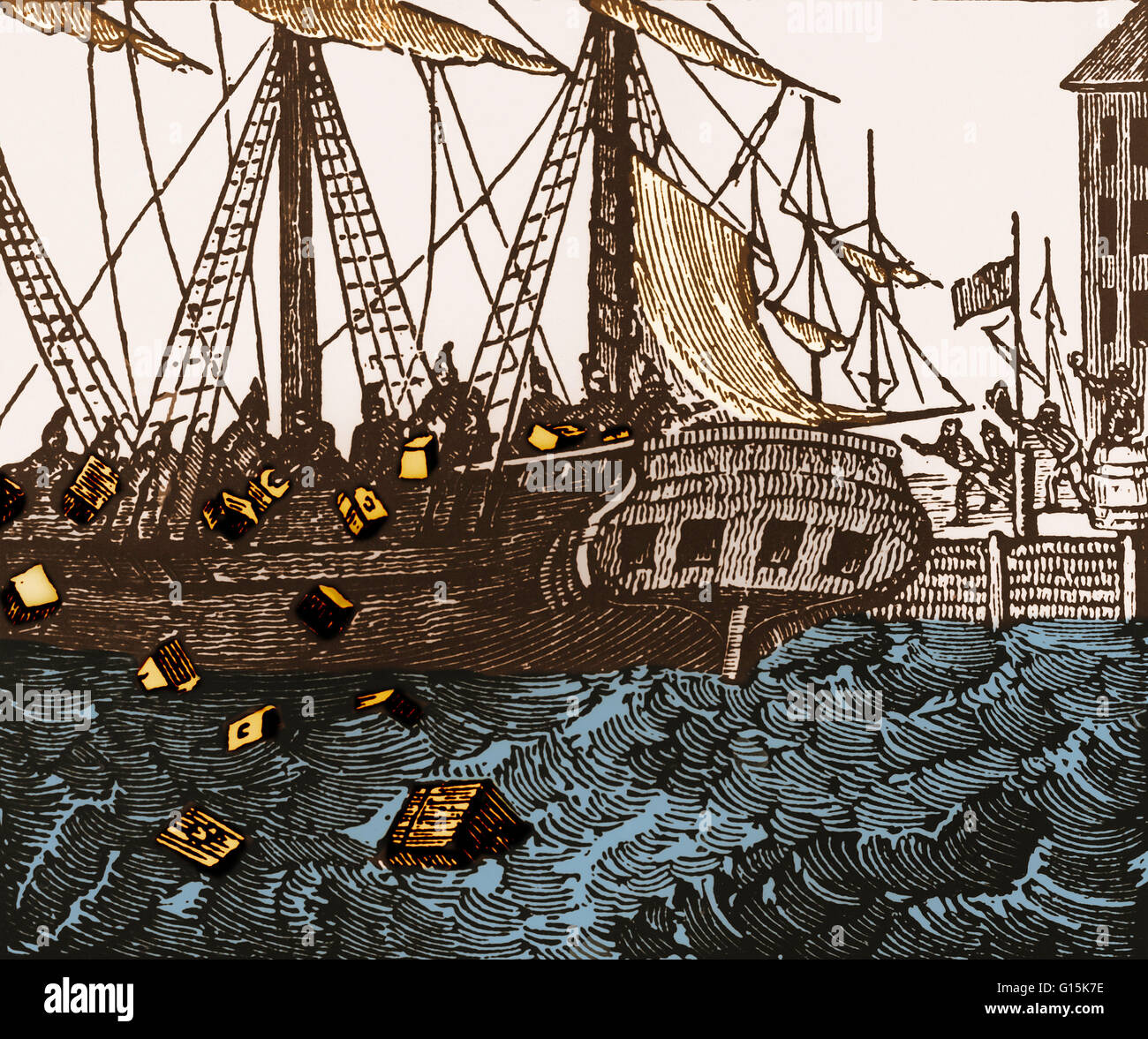 The Boston Tea Party was a direct action by colonists in Boston, a town in the British colony of Massachusetts, against the British government and the East India Company that controlled all the tea imported into the colonies. On December 16, 1773, after o Stock Photohttps://www.alamy.com/image-license-details/?v=1https://www.alamy.com/stock-photo-the-boston-tea-party-was-a-direct-action-by-colonists-in-boston-a-104001730.html
The Boston Tea Party was a direct action by colonists in Boston, a town in the British colony of Massachusetts, against the British government and the East India Company that controlled all the tea imported into the colonies. On December 16, 1773, after o Stock Photohttps://www.alamy.com/image-license-details/?v=1https://www.alamy.com/stock-photo-the-boston-tea-party-was-a-direct-action-by-colonists-in-boston-a-104001730.htmlRMG15K7E–The Boston Tea Party was a direct action by colonists in Boston, a town in the British colony of Massachusetts, against the British government and the East India Company that controlled all the tea imported into the colonies. On December 16, 1773, after o
 China: Tea shop, Lijiang Old Town, Yunnan Province. According to oral tradition, tea has been grown in China for more than four millennia. The earliest written accounts of tea making, however, date from around 350 CE, when it first became a drink at the imperial court. Around 800 CE tea seeds were taken to Japan, where regular cultivation was soon established. Just over five centuries later, in 1517, tea was first shipped to Europe by the Portuguese soon after they began their trade with China. In 1667 the Honourable East India Company ordered the first British shipment of tea from China. Stock Photohttps://www.alamy.com/image-license-details/?v=1https://www.alamy.com/china-tea-shop-lijiang-old-town-yunnan-province-according-to-oral-tradition-tea-has-been-grown-in-china-for-more-than-four-millennia-the-earliest-written-accounts-of-tea-making-however-date-from-around-350-ce-when-it-first-became-a-drink-at-the-imperial-court-around-800-ce-tea-seeds-were-taken-to-japan-where-regular-cultivation-was-soon-established-just-over-five-centuries-later-in-1517-tea-was-first-shipped-to-europe-by-the-portuguese-soon-after-they-began-their-trade-with-china-in-1667-the-honourable-east-india-company-ordered-the-first-british-shipment-of-tea-from-china-image344243522.html
China: Tea shop, Lijiang Old Town, Yunnan Province. According to oral tradition, tea has been grown in China for more than four millennia. The earliest written accounts of tea making, however, date from around 350 CE, when it first became a drink at the imperial court. Around 800 CE tea seeds were taken to Japan, where regular cultivation was soon established. Just over five centuries later, in 1517, tea was first shipped to Europe by the Portuguese soon after they began their trade with China. In 1667 the Honourable East India Company ordered the first British shipment of tea from China. Stock Photohttps://www.alamy.com/image-license-details/?v=1https://www.alamy.com/china-tea-shop-lijiang-old-town-yunnan-province-according-to-oral-tradition-tea-has-been-grown-in-china-for-more-than-four-millennia-the-earliest-written-accounts-of-tea-making-however-date-from-around-350-ce-when-it-first-became-a-drink-at-the-imperial-court-around-800-ce-tea-seeds-were-taken-to-japan-where-regular-cultivation-was-soon-established-just-over-five-centuries-later-in-1517-tea-was-first-shipped-to-europe-by-the-portuguese-soon-after-they-began-their-trade-with-china-in-1667-the-honourable-east-india-company-ordered-the-first-british-shipment-of-tea-from-china-image344243522.htmlRM2B01J3E–China: Tea shop, Lijiang Old Town, Yunnan Province. According to oral tradition, tea has been grown in China for more than four millennia. The earliest written accounts of tea making, however, date from around 350 CE, when it first became a drink at the imperial court. Around 800 CE tea seeds were taken to Japan, where regular cultivation was soon established. Just over five centuries later, in 1517, tea was first shipped to Europe by the Portuguese soon after they began their trade with China. In 1667 the Honourable East India Company ordered the first British shipment of tea from China.
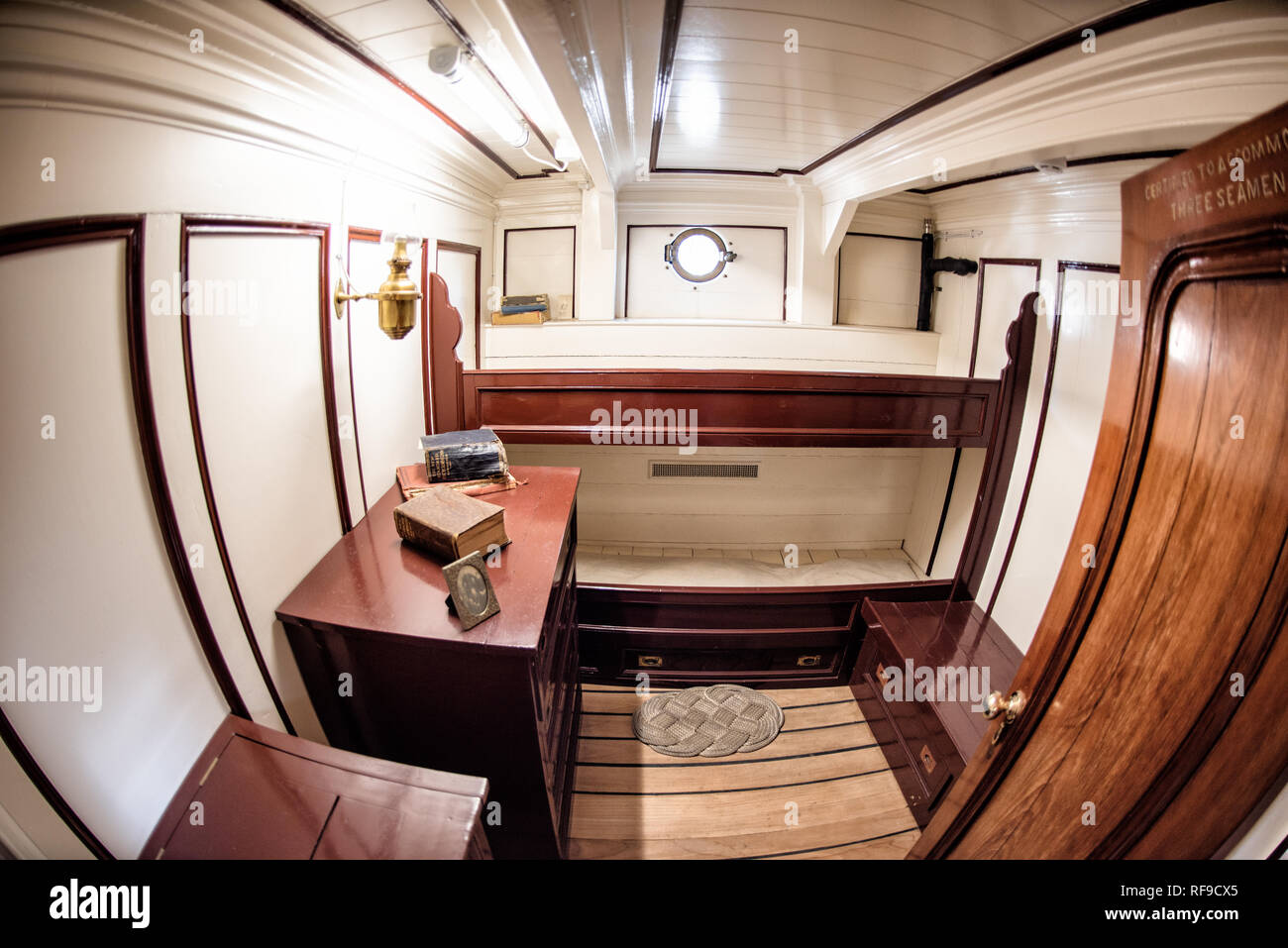 GREENWICH, UK - The Cutty Sark is a restored historic British clipper sailing ship that is now open as a tourist attraction in Greenwich, London. It was built in 1869 and in active service until 1895. In its heyday as a trader vessel, it was known as the fastest ship of its time. It was notable for its participation in the tea trade between Asia and Europe. When the opening of the Suez Canal created the opportunity for shorter and faster trips made by steam ships, the Cutty Sark was used to transport wool from Australia to Britain. The historic Cutty Sark, a British clipper ship and one of the Stock Photohttps://www.alamy.com/image-license-details/?v=1https://www.alamy.com/greenwich-uk-the-cutty-sark-is-a-restored-historic-british-clipper-sailing-ship-that-is-now-open-as-a-tourist-attraction-in-greenwich-london-it-was-built-in-1869-and-in-active-service-until-1895-in-its-heyday-as-a-trader-vessel-it-was-known-as-the-fastest-ship-of-its-time-it-was-notable-for-its-participation-in-the-tea-trade-between-asia-and-europe-when-the-opening-of-the-suez-canal-created-the-opportunity-for-shorter-and-faster-trips-made-by-steam-ships-the-cutty-sark-was-used-to-transport-wool-from-australia-to-britain-the-historic-cutty-sark-a-british-clipper-ship-and-one-of-the-image233162333.html
GREENWICH, UK - The Cutty Sark is a restored historic British clipper sailing ship that is now open as a tourist attraction in Greenwich, London. It was built in 1869 and in active service until 1895. In its heyday as a trader vessel, it was known as the fastest ship of its time. It was notable for its participation in the tea trade between Asia and Europe. When the opening of the Suez Canal created the opportunity for shorter and faster trips made by steam ships, the Cutty Sark was used to transport wool from Australia to Britain. The historic Cutty Sark, a British clipper ship and one of the Stock Photohttps://www.alamy.com/image-license-details/?v=1https://www.alamy.com/greenwich-uk-the-cutty-sark-is-a-restored-historic-british-clipper-sailing-ship-that-is-now-open-as-a-tourist-attraction-in-greenwich-london-it-was-built-in-1869-and-in-active-service-until-1895-in-its-heyday-as-a-trader-vessel-it-was-known-as-the-fastest-ship-of-its-time-it-was-notable-for-its-participation-in-the-tea-trade-between-asia-and-europe-when-the-opening-of-the-suez-canal-created-the-opportunity-for-shorter-and-faster-trips-made-by-steam-ships-the-cutty-sark-was-used-to-transport-wool-from-australia-to-britain-the-historic-cutty-sark-a-british-clipper-ship-and-one-of-the-image233162333.htmlRMRF9CX5–GREENWICH, UK - The Cutty Sark is a restored historic British clipper sailing ship that is now open as a tourist attraction in Greenwich, London. It was built in 1869 and in active service until 1895. In its heyday as a trader vessel, it was known as the fastest ship of its time. It was notable for its participation in the tea trade between Asia and Europe. When the opening of the Suez Canal created the opportunity for shorter and faster trips made by steam ships, the Cutty Sark was used to transport wool from Australia to Britain. The historic Cutty Sark, a British clipper ship and one of the
 England: Selection of English tea packaged for the French market. According to oral tradition, tea has been grown in China for more than four millennia. The earliest written accounts of tea making, however, date from around 350 CE, when it first became a drink at the imperial court. Around 800 CE tea seeds were taken to Japan, where regular cultivation was soon established. Just over five centuries later, in 1517, tea was first shipped to Europe by the Portuguese soon after they began their trade with China. In 1667 the East India Company ordered the first British shipment of tea from China. Stock Photohttps://www.alamy.com/image-license-details/?v=1https://www.alamy.com/england-selection-of-english-tea-packaged-for-the-french-market-according-to-oral-tradition-tea-has-been-grown-in-china-for-more-than-four-millennia-the-earliest-written-accounts-of-tea-making-however-date-from-around-350-ce-when-it-first-became-a-drink-at-the-imperial-court-around-800-ce-tea-seeds-were-taken-to-japan-where-regular-cultivation-was-soon-established-just-over-five-centuries-later-in-1517-tea-was-first-shipped-to-europe-by-the-portuguese-soon-after-they-began-their-trade-with-china-in-1667-the-east-india-company-ordered-the-first-british-shipment-of-tea-from-china-image344251045.html
England: Selection of English tea packaged for the French market. According to oral tradition, tea has been grown in China for more than four millennia. The earliest written accounts of tea making, however, date from around 350 CE, when it first became a drink at the imperial court. Around 800 CE tea seeds were taken to Japan, where regular cultivation was soon established. Just over five centuries later, in 1517, tea was first shipped to Europe by the Portuguese soon after they began their trade with China. In 1667 the East India Company ordered the first British shipment of tea from China. Stock Photohttps://www.alamy.com/image-license-details/?v=1https://www.alamy.com/england-selection-of-english-tea-packaged-for-the-french-market-according-to-oral-tradition-tea-has-been-grown-in-china-for-more-than-four-millennia-the-earliest-written-accounts-of-tea-making-however-date-from-around-350-ce-when-it-first-became-a-drink-at-the-imperial-court-around-800-ce-tea-seeds-were-taken-to-japan-where-regular-cultivation-was-soon-established-just-over-five-centuries-later-in-1517-tea-was-first-shipped-to-europe-by-the-portuguese-soon-after-they-began-their-trade-with-china-in-1667-the-east-india-company-ordered-the-first-british-shipment-of-tea-from-china-image344251045.htmlRM2B01YM5–England: Selection of English tea packaged for the French market. According to oral tradition, tea has been grown in China for more than four millennia. The earliest written accounts of tea making, however, date from around 350 CE, when it first became a drink at the imperial court. Around 800 CE tea seeds were taken to Japan, where regular cultivation was soon established. Just over five centuries later, in 1517, tea was first shipped to Europe by the Portuguese soon after they began their trade with China. In 1667 the East India Company ordered the first British shipment of tea from China.
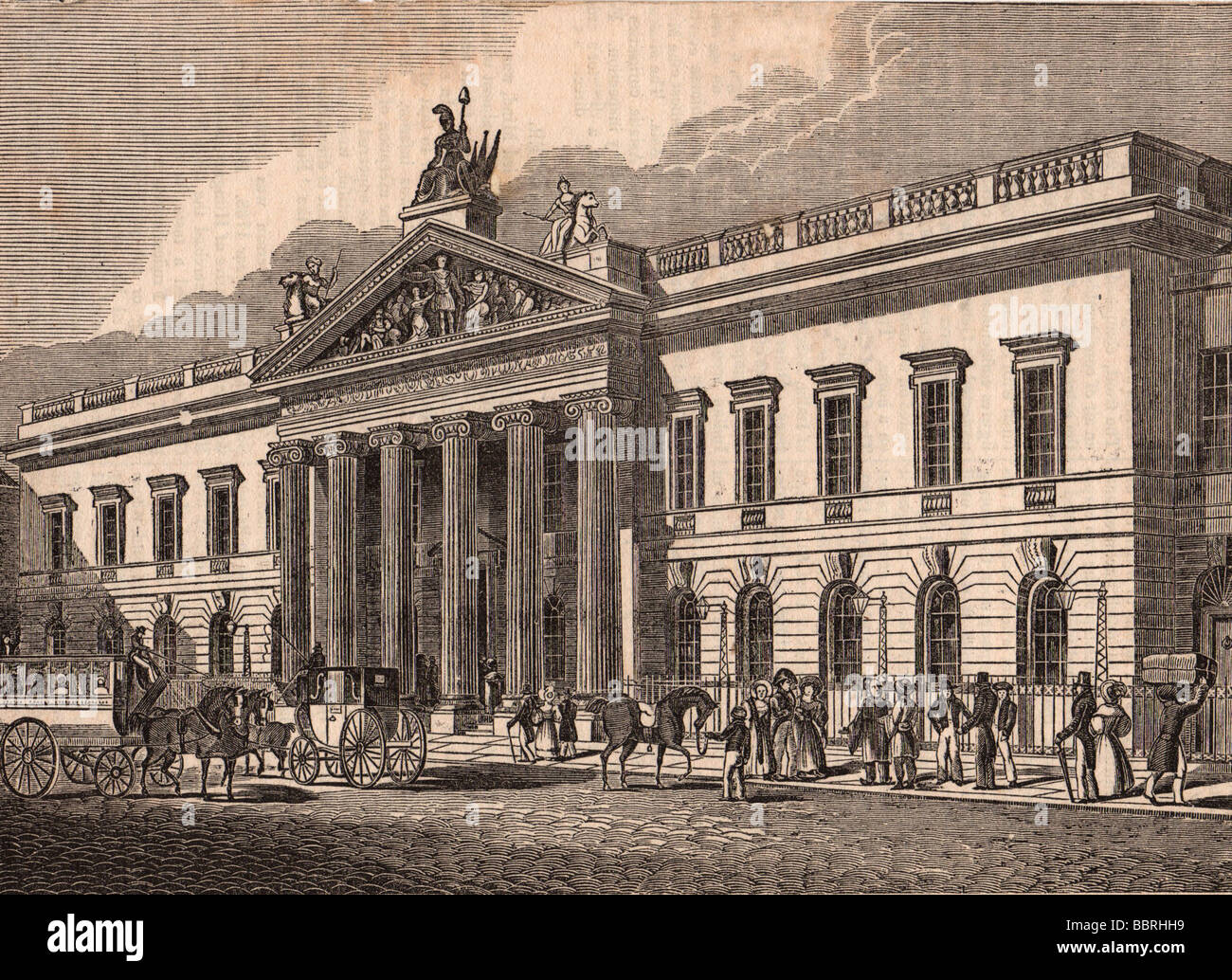 East India House in Leadenhall Street, London, the headquarters of the British East India Company. Engraving, ca. 1834. Stock Photohttps://www.alamy.com/image-license-details/?v=1https://www.alamy.com/stock-photo-east-india-house-in-leadenhall-street-london-the-headquarters-of-the-24490293.html
East India House in Leadenhall Street, London, the headquarters of the British East India Company. Engraving, ca. 1834. Stock Photohttps://www.alamy.com/image-license-details/?v=1https://www.alamy.com/stock-photo-east-india-house-in-leadenhall-street-london-the-headquarters-of-the-24490293.htmlRMBBRHH9–East India House in Leadenhall Street, London, the headquarters of the British East India Company. Engraving, ca. 1834.
 According to oral tradition, tea has been grown in China for more than four millennia. The earliest written accounts of tea making, however, date from around 350 CE, when it first became a drink at the imperial court. Around 800 CE tea seeds were taken to Japan, where regular cultivation was soon established. Just over five centuries later, in 1517, tea was first shipped to Europe by the Portuguese soon after they began their trade with China. In 1667 the Honourable East India Company ordered the first British shipment of tea from China, requesting of their agents ‘one hundred pounds weight o Stock Photohttps://www.alamy.com/image-license-details/?v=1https://www.alamy.com/according-to-oral-tradition-tea-has-been-grown-in-china-for-more-than-four-millennia-the-earliest-written-accounts-of-tea-making-however-date-from-around-350-ce-when-it-first-became-a-drink-at-the-imperial-court-around-800-ce-tea-seeds-were-taken-to-japan-where-regular-cultivation-was-soon-established-just-over-five-centuries-later-in-1517-tea-was-first-shipped-to-europe-by-the-portuguese-soon-after-they-began-their-trade-with-china-in-1667-the-honourable-east-india-company-ordered-the-first-british-shipment-of-tea-from-china-requesting-of-their-agents-one-hundred-pounds-weight-o-image344258315.html
According to oral tradition, tea has been grown in China for more than four millennia. The earliest written accounts of tea making, however, date from around 350 CE, when it first became a drink at the imperial court. Around 800 CE tea seeds were taken to Japan, where regular cultivation was soon established. Just over five centuries later, in 1517, tea was first shipped to Europe by the Portuguese soon after they began their trade with China. In 1667 the Honourable East India Company ordered the first British shipment of tea from China, requesting of their agents ‘one hundred pounds weight o Stock Photohttps://www.alamy.com/image-license-details/?v=1https://www.alamy.com/according-to-oral-tradition-tea-has-been-grown-in-china-for-more-than-four-millennia-the-earliest-written-accounts-of-tea-making-however-date-from-around-350-ce-when-it-first-became-a-drink-at-the-imperial-court-around-800-ce-tea-seeds-were-taken-to-japan-where-regular-cultivation-was-soon-established-just-over-five-centuries-later-in-1517-tea-was-first-shipped-to-europe-by-the-portuguese-soon-after-they-began-their-trade-with-china-in-1667-the-honourable-east-india-company-ordered-the-first-british-shipment-of-tea-from-china-requesting-of-their-agents-one-hundred-pounds-weight-o-image344258315.htmlRM2B028YR–According to oral tradition, tea has been grown in China for more than four millennia. The earliest written accounts of tea making, however, date from around 350 CE, when it first became a drink at the imperial court. Around 800 CE tea seeds were taken to Japan, where regular cultivation was soon established. Just over five centuries later, in 1517, tea was first shipped to Europe by the Portuguese soon after they began their trade with China. In 1667 the Honourable East India Company ordered the first British shipment of tea from China, requesting of their agents ‘one hundred pounds weight o
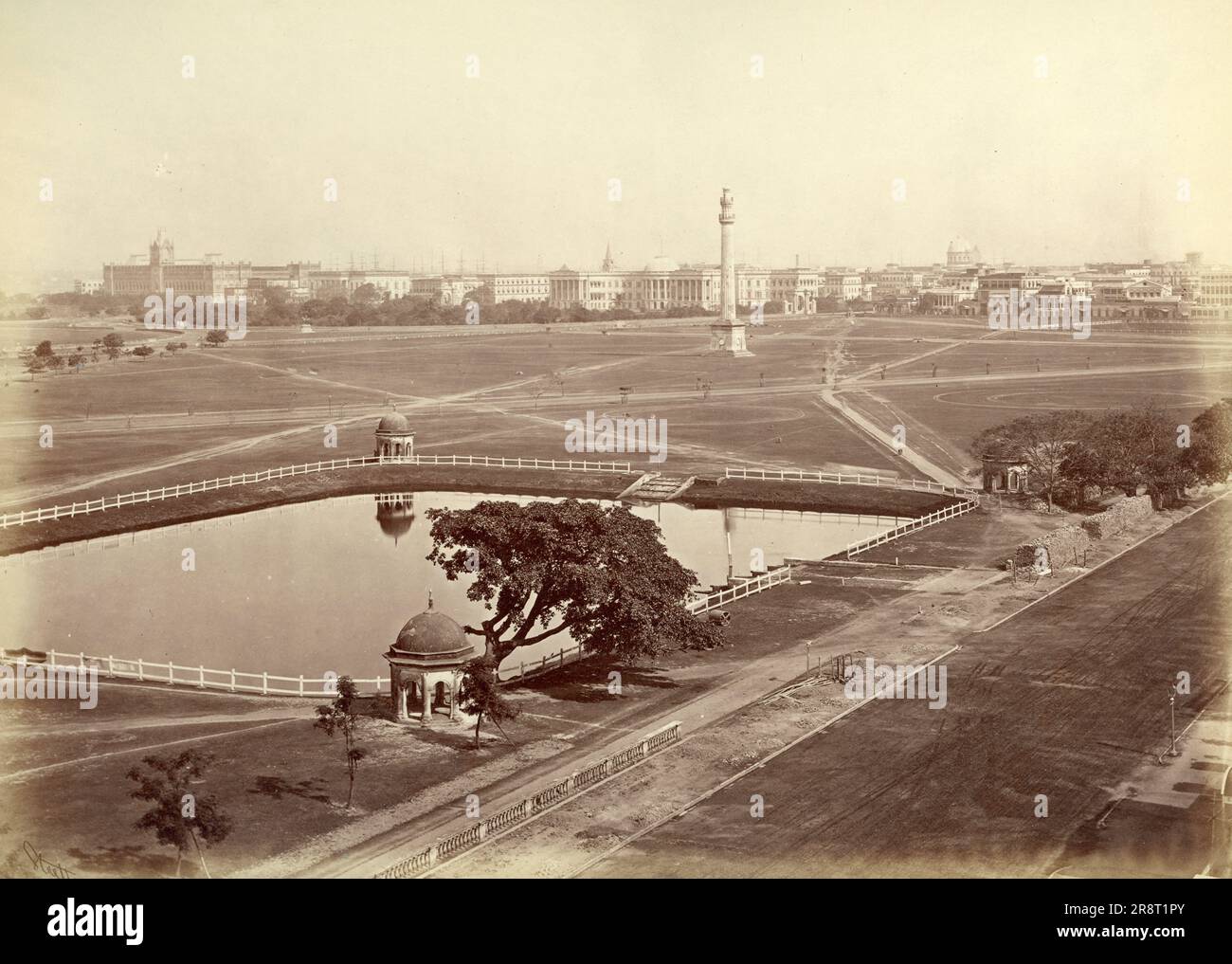 Photographs in Calcutta, India by Captain William George Stretton from 1875-1880. Stock Photohttps://www.alamy.com/image-license-details/?v=1https://www.alamy.com/photographs-in-calcutta-india-by-captain-william-george-stretton-from-1875-1880-image556177299.html
Photographs in Calcutta, India by Captain William George Stretton from 1875-1880. Stock Photohttps://www.alamy.com/image-license-details/?v=1https://www.alamy.com/photographs-in-calcutta-india-by-captain-william-george-stretton-from-1875-1880-image556177299.htmlRM2R8T1PY–Photographs in Calcutta, India by Captain William George Stretton from 1875-1880.
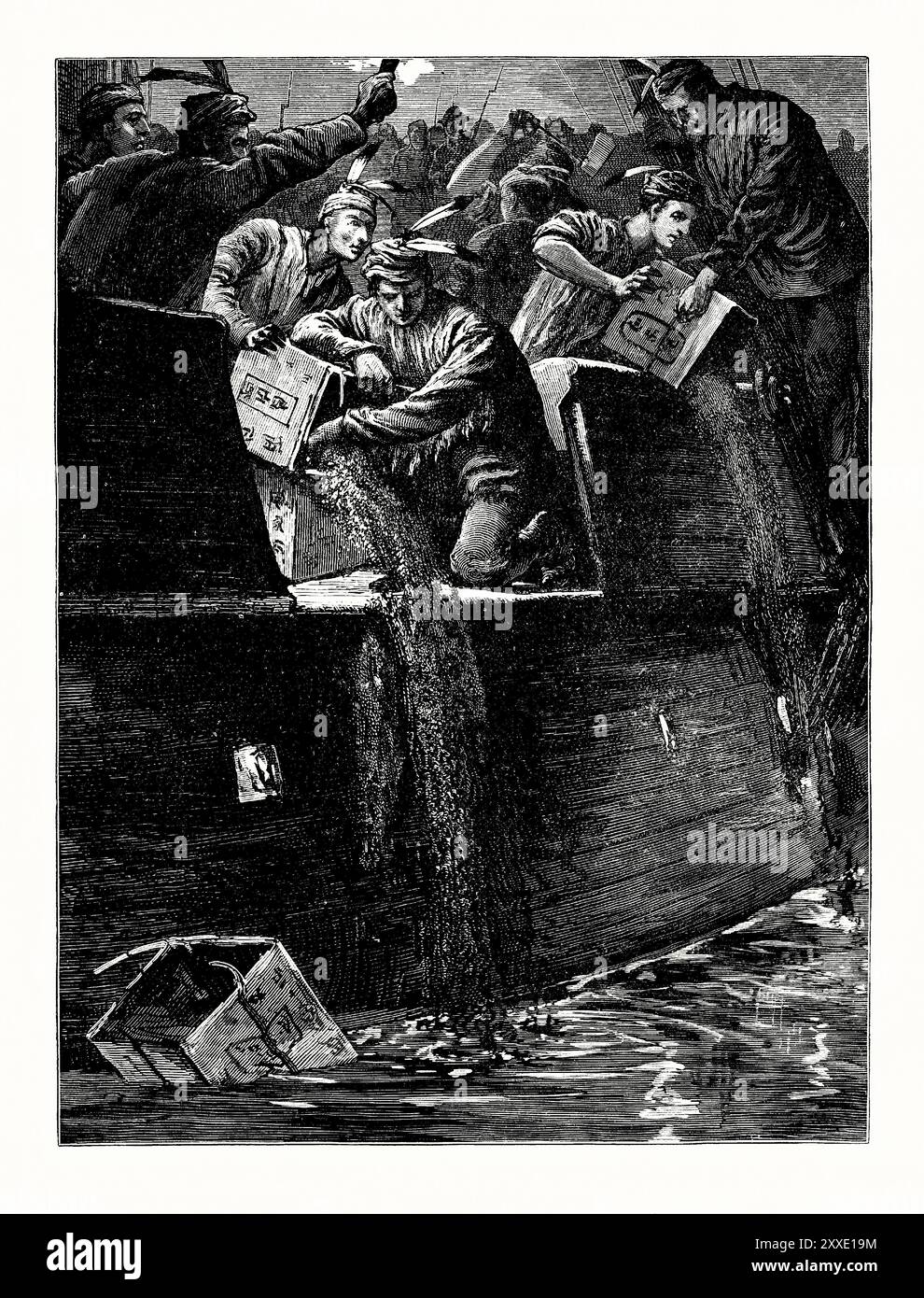 An old engraving of the Boston Tea Party, Boston, Massachusetts, USA in 1773. It is from a Victorian history book of c.1900. The Boston Tea Party was an American political and mercantile protest on December 16 1773, by the Sons of Liberty. The target was the Tea Act of that year, which allowed the East India Company to sell tea from China in American colonies without paying taxes. The Sons of Liberty, some disguised as Native Americans, destroyed an entire shipment of tea sent by the East India Company, throwing the chests of tea into the Boston Harbor. Stock Photohttps://www.alamy.com/image-license-details/?v=1https://www.alamy.com/an-old-engraving-of-the-boston-tea-party-boston-massachusetts-usa-in-1773-it-is-from-a-victorian-history-book-of-c1900-the-boston-tea-party-was-an-american-political-and-mercantile-protest-on-december-16-1773-by-the-sons-of-liberty-the-target-was-the-tea-act-of-that-year-which-allowed-the-east-india-company-to-sell-tea-from-china-in-american-colonies-without-paying-taxes-the-sons-of-liberty-some-disguised-as-native-americans-destroyed-an-entire-shipment-of-tea-sent-by-the-east-india-company-throwing-the-chests-of-tea-into-the-boston-harbor-image618652320.html
An old engraving of the Boston Tea Party, Boston, Massachusetts, USA in 1773. It is from a Victorian history book of c.1900. The Boston Tea Party was an American political and mercantile protest on December 16 1773, by the Sons of Liberty. The target was the Tea Act of that year, which allowed the East India Company to sell tea from China in American colonies without paying taxes. The Sons of Liberty, some disguised as Native Americans, destroyed an entire shipment of tea sent by the East India Company, throwing the chests of tea into the Boston Harbor. Stock Photohttps://www.alamy.com/image-license-details/?v=1https://www.alamy.com/an-old-engraving-of-the-boston-tea-party-boston-massachusetts-usa-in-1773-it-is-from-a-victorian-history-book-of-c1900-the-boston-tea-party-was-an-american-political-and-mercantile-protest-on-december-16-1773-by-the-sons-of-liberty-the-target-was-the-tea-act-of-that-year-which-allowed-the-east-india-company-to-sell-tea-from-china-in-american-colonies-without-paying-taxes-the-sons-of-liberty-some-disguised-as-native-americans-destroyed-an-entire-shipment-of-tea-sent-by-the-east-india-company-throwing-the-chests-of-tea-into-the-boston-harbor-image618652320.htmlRM2XXE19M–An old engraving of the Boston Tea Party, Boston, Massachusetts, USA in 1773. It is from a Victorian history book of c.1900. The Boston Tea Party was an American political and mercantile protest on December 16 1773, by the Sons of Liberty. The target was the Tea Act of that year, which allowed the East India Company to sell tea from China in American colonies without paying taxes. The Sons of Liberty, some disguised as Native Americans, destroyed an entire shipment of tea sent by the East India Company, throwing the chests of tea into the Boston Harbor.
 Artist, attributed to: Philip Dawe, British, ca. 1750–ca. 1790, Publisher: Robert Sayer, British, 1725–1794, Publisher: James M. Bennett, American, active mid-late 18th century, The Bostonians Paying the Excise-Man or Tarring and Feathering, Plate 1 of 6, Mezzotint with some burin work, sheet: 47.3 × 29.5 cm (18 5/8 × 11 5/8 in.), Political tension had been brewing between the American colonists and Great Britain for several years when it finally reached the boiling point over the Tea Act of 1773. With this legislation, Parliament granted the struggling English East India Company a monopoly on Stock Photohttps://www.alamy.com/image-license-details/?v=1https://www.alamy.com/artist-attributed-to-philip-dawe-british-ca-1750ca-1790-publisher-robert-sayer-british-17251794-publisher-james-m-bennett-american-active-mid-late-18th-century-the-bostonians-paying-the-excise-man-or-tarring-and-feathering-plate-1-of6-mezzotint-with-some-burin-work-sheet-473-295-cm-18-58-11-58in-political-tension-had-been-brewing-between-the-american-colonists-and-great-britain-for-several-years-when-it-finally-reached-the-boiling-point-over-the-tea-act-of-1773-with-this-legislation-parliament-granted-the-struggling-english-east-india-company-a-monopoly-on-image393505988.html
Artist, attributed to: Philip Dawe, British, ca. 1750–ca. 1790, Publisher: Robert Sayer, British, 1725–1794, Publisher: James M. Bennett, American, active mid-late 18th century, The Bostonians Paying the Excise-Man or Tarring and Feathering, Plate 1 of 6, Mezzotint with some burin work, sheet: 47.3 × 29.5 cm (18 5/8 × 11 5/8 in.), Political tension had been brewing between the American colonists and Great Britain for several years when it finally reached the boiling point over the Tea Act of 1773. With this legislation, Parliament granted the struggling English East India Company a monopoly on Stock Photohttps://www.alamy.com/image-license-details/?v=1https://www.alamy.com/artist-attributed-to-philip-dawe-british-ca-1750ca-1790-publisher-robert-sayer-british-17251794-publisher-james-m-bennett-american-active-mid-late-18th-century-the-bostonians-paying-the-excise-man-or-tarring-and-feathering-plate-1-of6-mezzotint-with-some-burin-work-sheet-473-295-cm-18-58-11-58in-political-tension-had-been-brewing-between-the-american-colonists-and-great-britain-for-several-years-when-it-finally-reached-the-boiling-point-over-the-tea-act-of-1773-with-this-legislation-parliament-granted-the-struggling-english-east-india-company-a-monopoly-on-image393505988.htmlRM2DT5MW8–Artist, attributed to: Philip Dawe, British, ca. 1750–ca. 1790, Publisher: Robert Sayer, British, 1725–1794, Publisher: James M. Bennett, American, active mid-late 18th century, The Bostonians Paying the Excise-Man or Tarring and Feathering, Plate 1 of 6, Mezzotint with some burin work, sheet: 47.3 × 29.5 cm (18 5/8 × 11 5/8 in.), Political tension had been brewing between the American colonists and Great Britain for several years when it finally reached the boiling point over the Tea Act of 1773. With this legislation, Parliament granted the struggling English East India Company a monopoly on
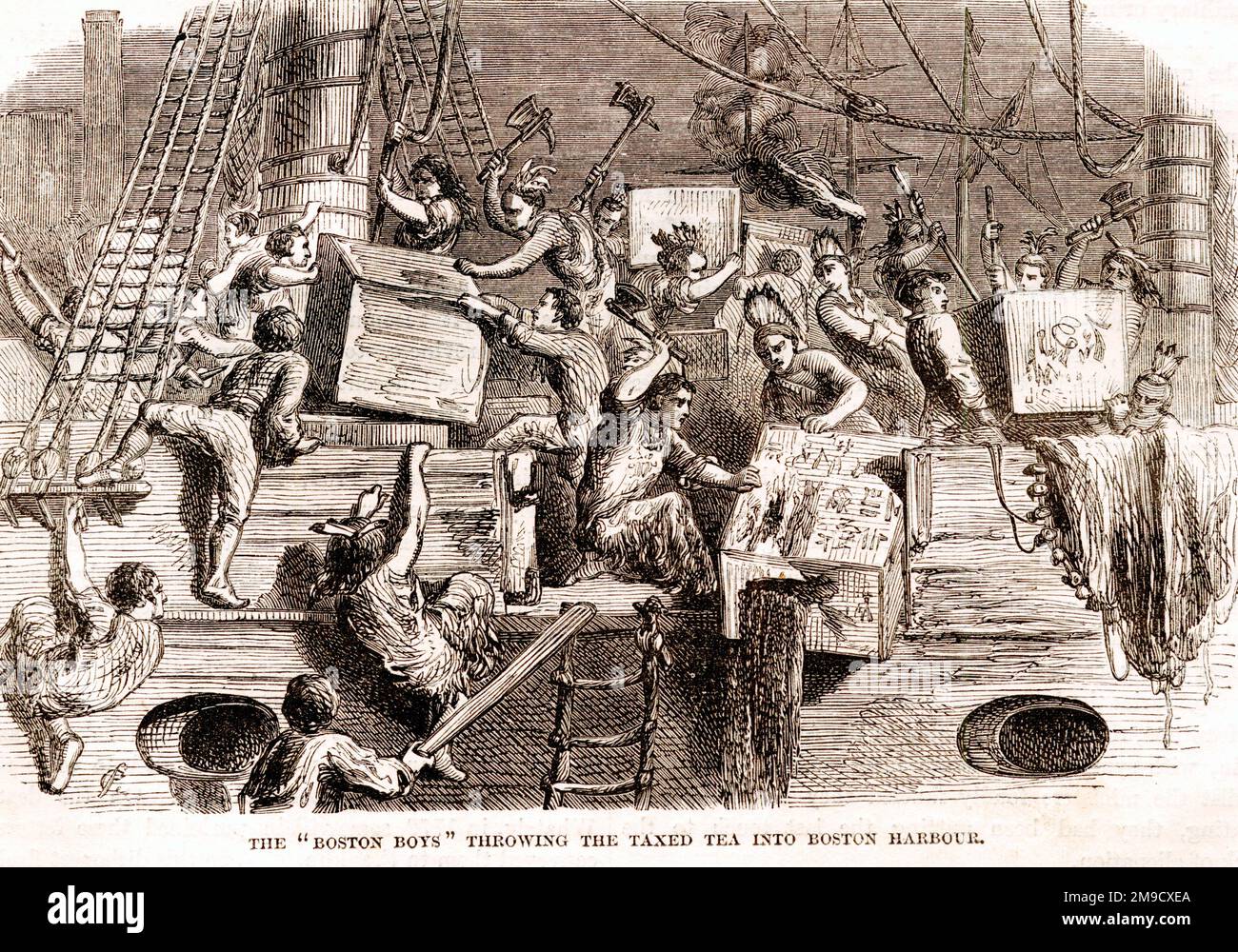 Boston Tea Party political protest by the Sons of Liberty in Boston against the taxation of the British Government and the East India Company that controlled imports of tea Stock Photohttps://www.alamy.com/image-license-details/?v=1https://www.alamy.com/boston-tea-party-political-protest-by-the-sons-of-liberty-in-boston-against-the-taxation-of-the-british-government-and-the-east-india-company-that-controlled-imports-of-tea-image504916786.html
Boston Tea Party political protest by the Sons of Liberty in Boston against the taxation of the British Government and the East India Company that controlled imports of tea Stock Photohttps://www.alamy.com/image-license-details/?v=1https://www.alamy.com/boston-tea-party-political-protest-by-the-sons-of-liberty-in-boston-against-the-taxation-of-the-british-government-and-the-east-india-company-that-controlled-imports-of-tea-image504916786.htmlRM2M9CXEA–Boston Tea Party political protest by the Sons of Liberty in Boston against the taxation of the British Government and the East India Company that controlled imports of tea
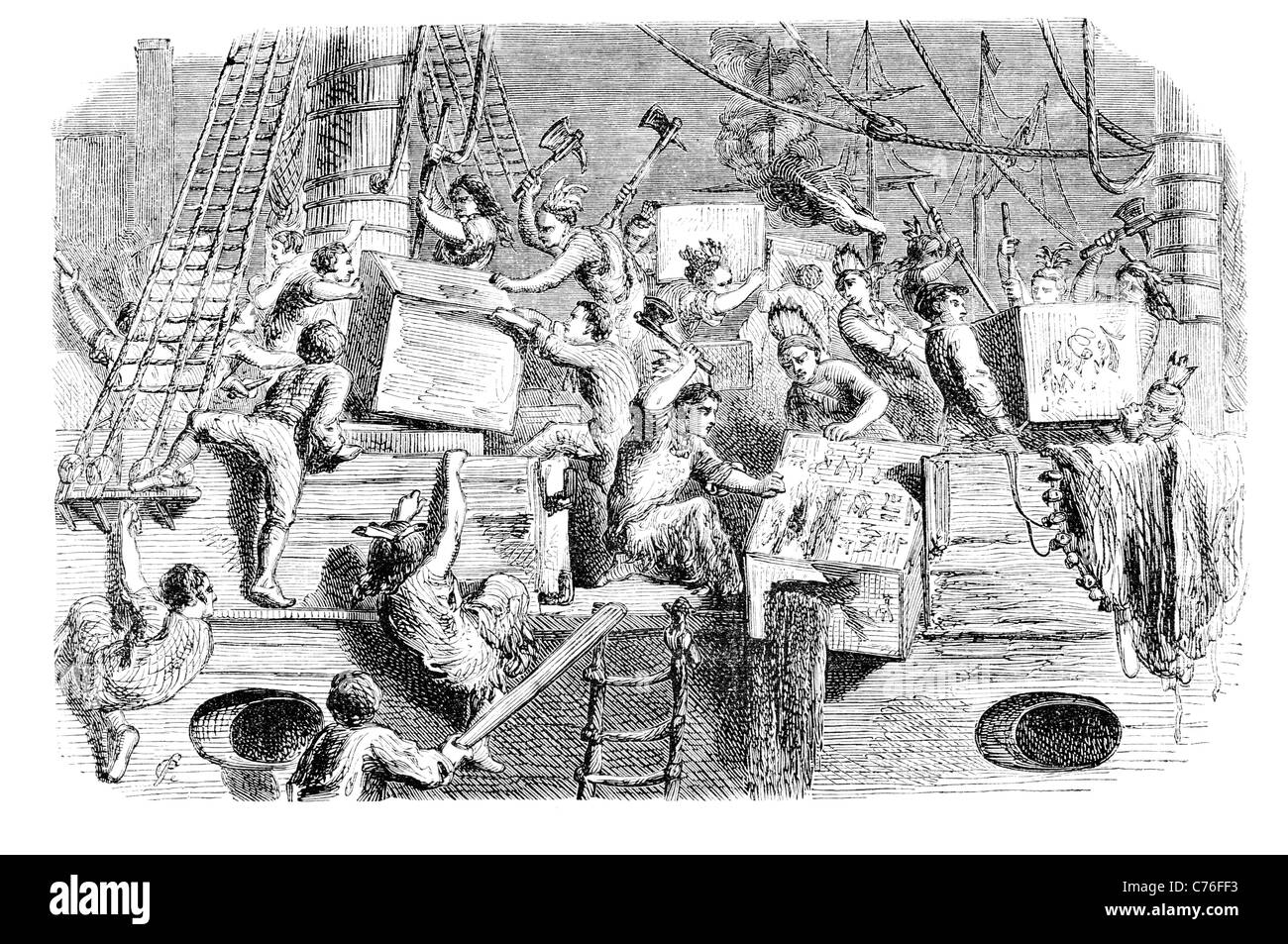 Boston Tea Party colonist colonists British colony Massachusetts government East India Company imported refused three shiploads Stock Photohttps://www.alamy.com/image-license-details/?v=1https://www.alamy.com/stock-photo-boston-tea-party-colonist-colonists-british-colony-massachusetts-government-38867223.html
Boston Tea Party colonist colonists British colony Massachusetts government East India Company imported refused three shiploads Stock Photohttps://www.alamy.com/image-license-details/?v=1https://www.alamy.com/stock-photo-boston-tea-party-colonist-colonists-british-colony-massachusetts-government-38867223.htmlRFC76FF3–Boston Tea Party colonist colonists British colony Massachusetts government East India Company imported refused three shiploads
 Fleet of tea ships in the China Sea 1880s. Hand-colored woodcut Stock Photohttps://www.alamy.com/image-license-details/?v=1https://www.alamy.com/fleet-of-tea-ships-in-the-china-sea-1880s-hand-colored-woodcut-image4433590.html
Fleet of tea ships in the China Sea 1880s. Hand-colored woodcut Stock Photohttps://www.alamy.com/image-license-details/?v=1https://www.alamy.com/fleet-of-tea-ships-in-the-china-sea-1880s-hand-colored-woodcut-image4433590.htmlRMAE5XB7–Fleet of tea ships in the China Sea 1880s. Hand-colored woodcut
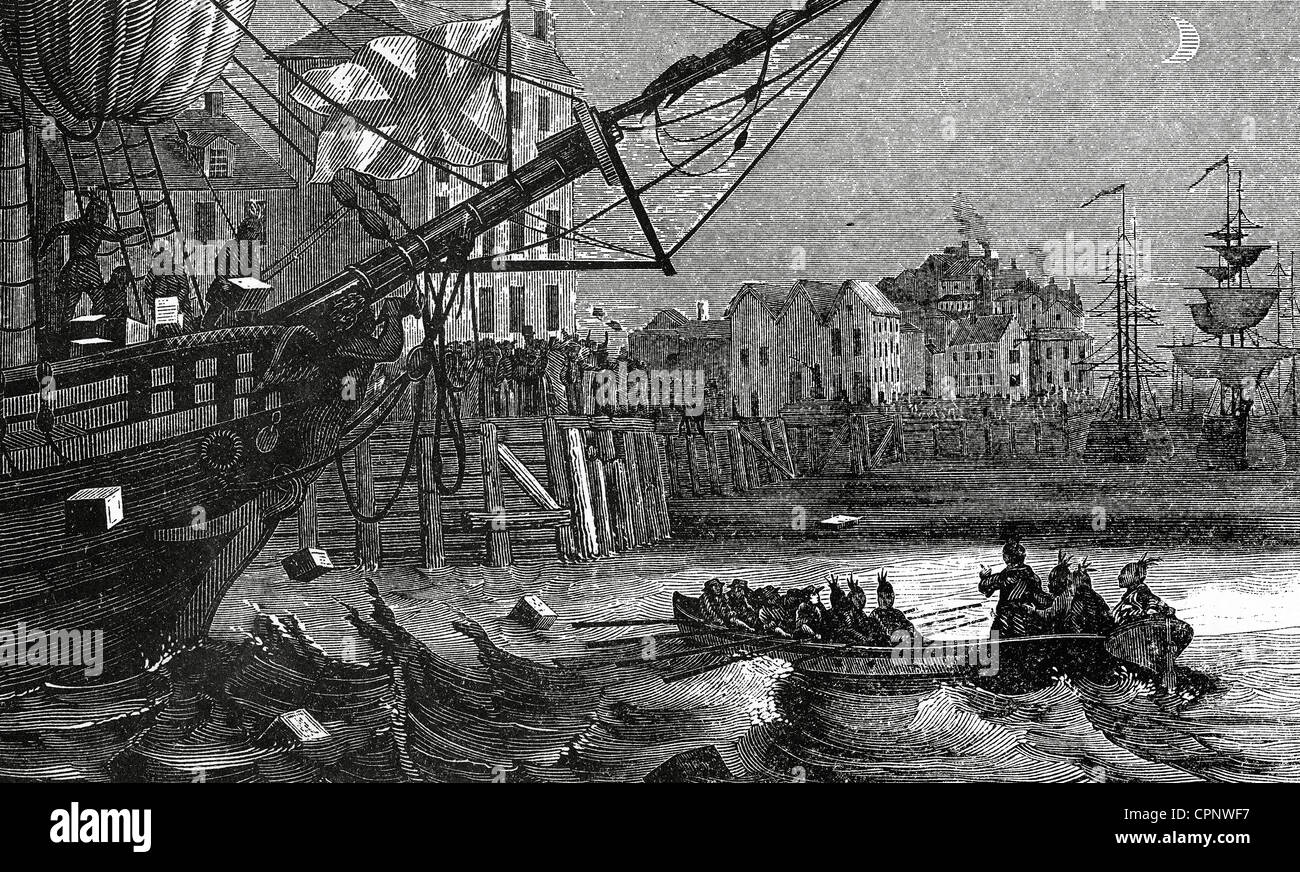 Boston Tea Party (December 16, 1773). Group of colonists destroying tea of the ship of the East India Company. Stock Photohttps://www.alamy.com/image-license-details/?v=1https://www.alamy.com/stock-photo-boston-tea-party-december-16-1773-group-of-colonists-destroying-tea-48424187.html
Boston Tea Party (December 16, 1773). Group of colonists destroying tea of the ship of the East India Company. Stock Photohttps://www.alamy.com/image-license-details/?v=1https://www.alamy.com/stock-photo-boston-tea-party-december-16-1773-group-of-colonists-destroying-tea-48424187.htmlRMCPNWF7–Boston Tea Party (December 16, 1773). Group of colonists destroying tea of the ship of the East India Company.
 Hibiscus macrophyllus, the largeleaf rosemallow, is an ornamental plant which can be made into hibiscus tea. From Plantae Asiaticae rariores, or, Descriptions and figures of a select number of unpublished East Indian plants Volume 1 by N. Wallich. Nathaniel Wolff Wallich FRS FRSE (28 January 1786 – 28 April 1854) was a surgeon and botanist of Danish origin who worked in India, initially in the Danish settlement near Calcutta and later for the Danish East India Company and the British East India Company. He was involved in the early development of the Calcutta Botanical Garden, describing many Stock Photohttps://www.alamy.com/image-license-details/?v=1https://www.alamy.com/hibiscus-macrophyllus-the-largeleaf-rosemallow-is-an-ornamental-plant-which-can-be-made-into-hibiscus-tea-from-plantae-asiaticae-rariores-or-descriptions-and-figures-of-a-select-number-of-unpublished-east-indian-plants-volume-1-by-n-wallich-nathaniel-wolff-wallich-frs-frse-28-january-1786-28-april-1854-was-a-surgeon-and-botanist-of-danish-origin-who-worked-in-india-initially-in-the-danish-settlement-near-calcutta-and-later-for-the-danish-east-india-company-and-the-british-east-india-company-he-was-involved-in-the-early-development-of-the-calcutta-botanical-garden-describing-many-image383229505.html
Hibiscus macrophyllus, the largeleaf rosemallow, is an ornamental plant which can be made into hibiscus tea. From Plantae Asiaticae rariores, or, Descriptions and figures of a select number of unpublished East Indian plants Volume 1 by N. Wallich. Nathaniel Wolff Wallich FRS FRSE (28 January 1786 – 28 April 1854) was a surgeon and botanist of Danish origin who worked in India, initially in the Danish settlement near Calcutta and later for the Danish East India Company and the British East India Company. He was involved in the early development of the Calcutta Botanical Garden, describing many Stock Photohttps://www.alamy.com/image-license-details/?v=1https://www.alamy.com/hibiscus-macrophyllus-the-largeleaf-rosemallow-is-an-ornamental-plant-which-can-be-made-into-hibiscus-tea-from-plantae-asiaticae-rariores-or-descriptions-and-figures-of-a-select-number-of-unpublished-east-indian-plants-volume-1-by-n-wallich-nathaniel-wolff-wallich-frs-frse-28-january-1786-28-april-1854-was-a-surgeon-and-botanist-of-danish-origin-who-worked-in-india-initially-in-the-danish-settlement-near-calcutta-and-later-for-the-danish-east-india-company-and-the-british-east-india-company-he-was-involved-in-the-early-development-of-the-calcutta-botanical-garden-describing-many-image383229505.htmlRF2D7DH41–Hibiscus macrophyllus, the largeleaf rosemallow, is an ornamental plant which can be made into hibiscus tea. From Plantae Asiaticae rariores, or, Descriptions and figures of a select number of unpublished East Indian plants Volume 1 by N. Wallich. Nathaniel Wolff Wallich FRS FRSE (28 January 1786 – 28 April 1854) was a surgeon and botanist of Danish origin who worked in India, initially in the Danish settlement near Calcutta and later for the Danish East India Company and the British East India Company. He was involved in the early development of the Calcutta Botanical Garden, describing many
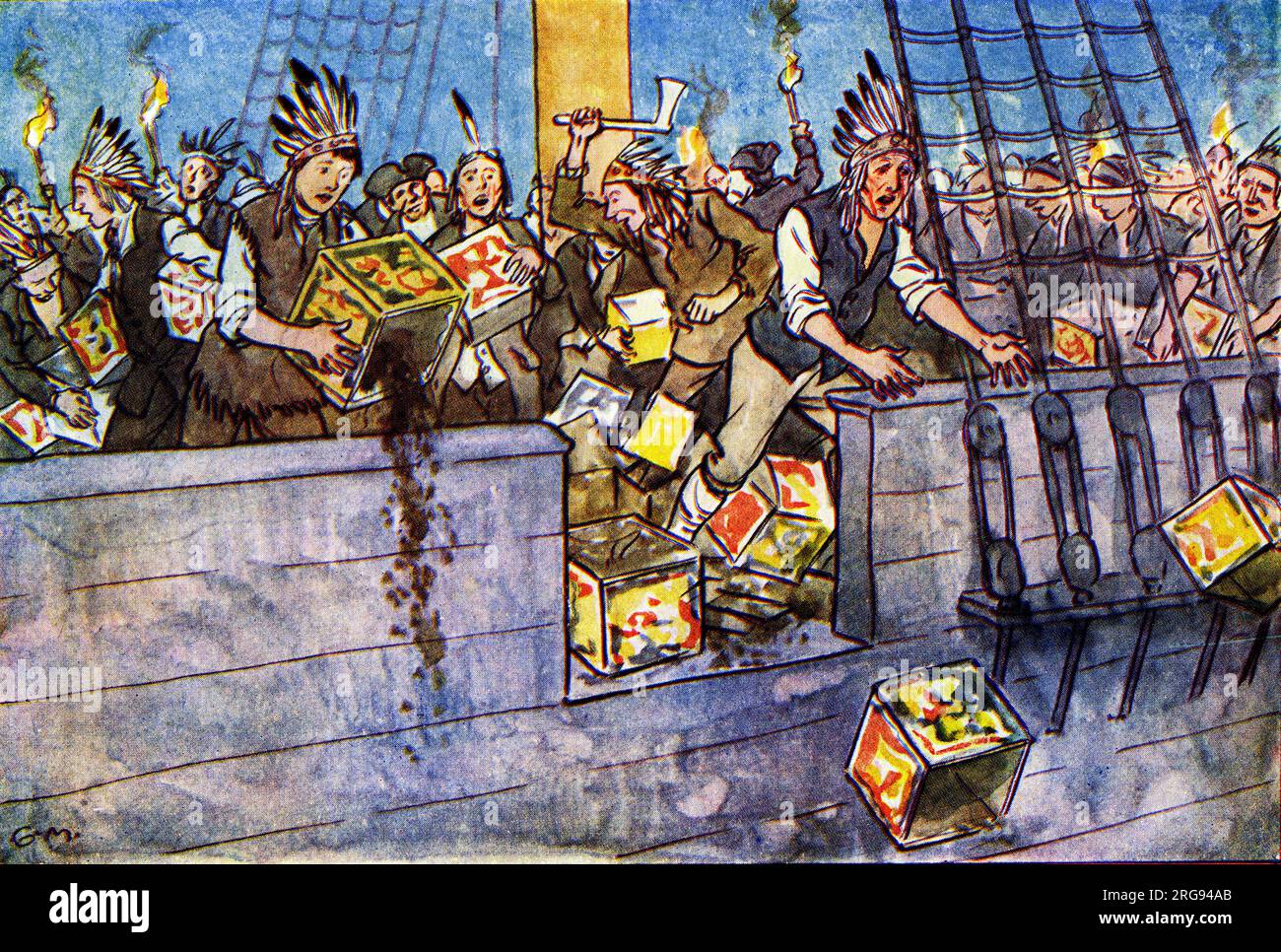 The Boston Tea Party - a political and mercantile protest by the Sons of Liberty in Boston, Massachusetts, on December 16, 1773. Demonstrators, some disguised as Native Americans, destroyed an entire shipment of tea sent by the East India Company. Stock Photohttps://www.alamy.com/image-license-details/?v=1https://www.alamy.com/the-boston-tea-party-a-political-and-mercantile-protest-by-the-sons-of-liberty-in-boston-massachusetts-on-december-16-1773-demonstrators-some-disguised-as-native-americans-destroyed-an-entire-shipment-of-tea-sent-by-the-east-india-company-image560767267.html
The Boston Tea Party - a political and mercantile protest by the Sons of Liberty in Boston, Massachusetts, on December 16, 1773. Demonstrators, some disguised as Native Americans, destroyed an entire shipment of tea sent by the East India Company. Stock Photohttps://www.alamy.com/image-license-details/?v=1https://www.alamy.com/the-boston-tea-party-a-political-and-mercantile-protest-by-the-sons-of-liberty-in-boston-massachusetts-on-december-16-1773-demonstrators-some-disguised-as-native-americans-destroyed-an-entire-shipment-of-tea-sent-by-the-east-india-company-image560767267.htmlRM2RG94AB–The Boston Tea Party - a political and mercantile protest by the Sons of Liberty in Boston, Massachusetts, on December 16, 1773. Demonstrators, some disguised as Native Americans, destroyed an entire shipment of tea sent by the East India Company.
 . English: Retouched portrait of Moniram Dewan (17 April 1806 – 26 February 1858). He was one of the first people to establish tea gardens in Assam. A loyal ally of the British East India Company in his early years, he was hanged by the British for conspiring against them during the 1857 uprising. 23 November 2016, 23:21:00. P Phukan 848 Maniram Dewan Stock Photohttps://www.alamy.com/image-license-details/?v=1https://www.alamy.com/english-retouched-portrait-of-moniram-dewan-17-april-1806-26-february-1858-he-was-one-of-the-first-people-to-establish-tea-gardens-in-assam-a-loyal-ally-of-the-british-east-india-company-in-his-early-years-he-was-hanged-by-the-british-for-conspiring-against-them-during-the-1857-uprising-23-november-2016-232100-p-phukan-848-maniram-dewan-image185776254.html
. English: Retouched portrait of Moniram Dewan (17 April 1806 – 26 February 1858). He was one of the first people to establish tea gardens in Assam. A loyal ally of the British East India Company in his early years, he was hanged by the British for conspiring against them during the 1857 uprising. 23 November 2016, 23:21:00. P Phukan 848 Maniram Dewan Stock Photohttps://www.alamy.com/image-license-details/?v=1https://www.alamy.com/english-retouched-portrait-of-moniram-dewan-17-april-1806-26-february-1858-he-was-one-of-the-first-people-to-establish-tea-gardens-in-assam-a-loyal-ally-of-the-british-east-india-company-in-his-early-years-he-was-hanged-by-the-british-for-conspiring-against-them-during-the-1857-uprising-23-november-2016-232100-p-phukan-848-maniram-dewan-image185776254.htmlRMMP6RE6–. English: Retouched portrait of Moniram Dewan (17 April 1806 – 26 February 1858). He was one of the first people to establish tea gardens in Assam. A loyal ally of the British East India Company in his early years, he was hanged by the British for conspiring against them during the 1857 uprising. 23 November 2016, 23:21:00. P Phukan 848 Maniram Dewan
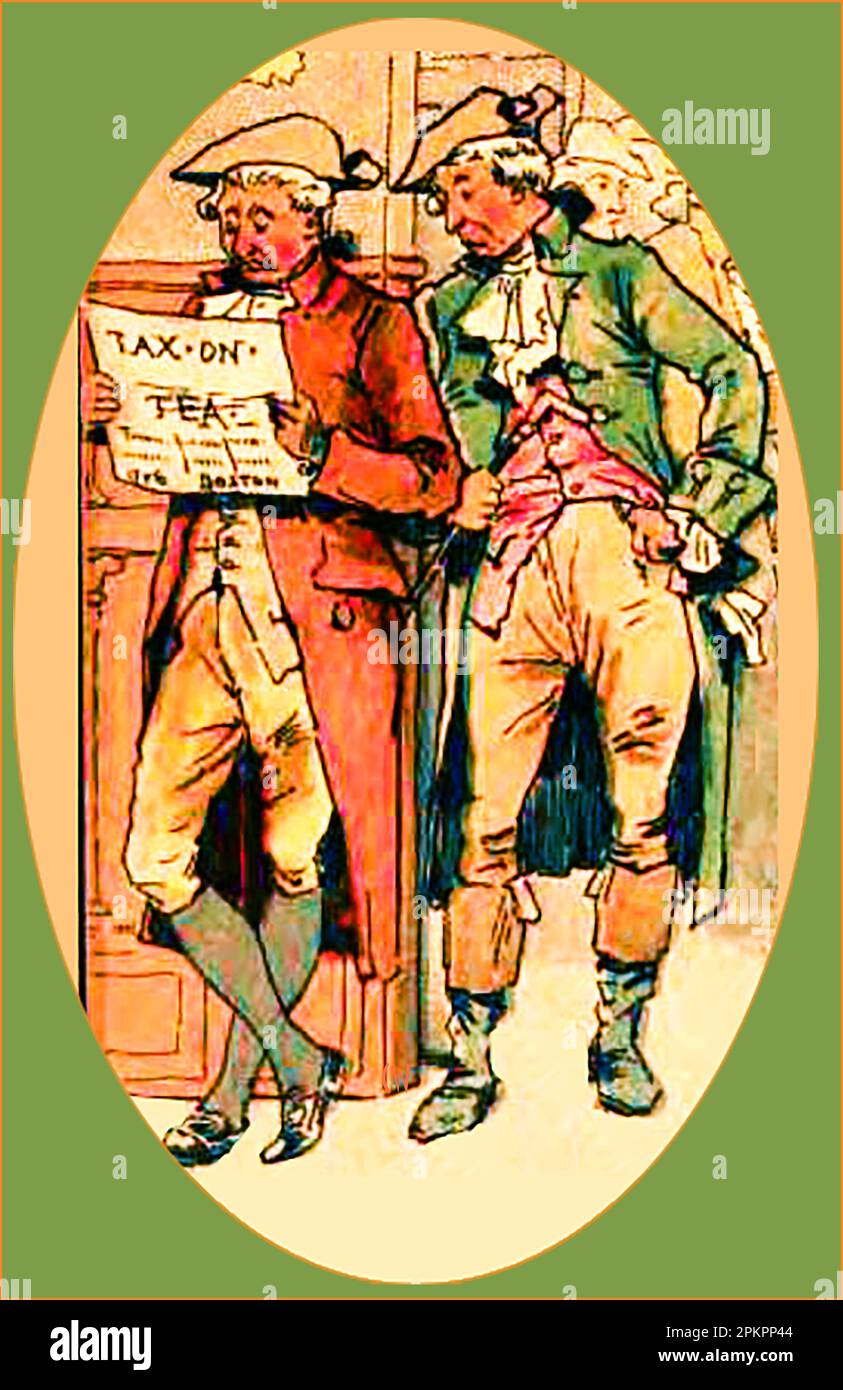 BOSTON TEA PARTY December 16, 1773 -An old cartoon showing Boston residents reading of the new tea tax. -The Boston Tea Party was an American political and mercantile protest against the Tea Act of 1773 which imposed a tea tax { Townshend Revenue Act)) but allowed the British East India Company tax concessions for its imported tea from China. A protest group known as the Sons of Liberty (some disguised as Indian tribesmen) destroyed an East India Company. cargo of tea by throwing tea chests from a number of ships into Boston Harbour.. Stock Photohttps://www.alamy.com/image-license-details/?v=1https://www.alamy.com/boston-tea-party-december-16-1773-an-old-cartoon-showing-boston-residents-reading-of-the-new-tea-tax-the-boston-tea-party-was-an-american-political-and-mercantile-protest-against-the-tea-act-of-1773-which-imposed-a-tea-tax-townshend-revenue-act-but-allowed-the-british-east-india-company-tax-concessions-for-its-imported-tea-from-china-a-protest-group-known-as-the-sons-of-liberty-some-disguised-as-indian-tribesmen-destroyed-an-east-india-company-cargo-of-tea-by-throwing-tea-chests-from-a-number-of-ships-into-boston-harbour-image545700180.html
BOSTON TEA PARTY December 16, 1773 -An old cartoon showing Boston residents reading of the new tea tax. -The Boston Tea Party was an American political and mercantile protest against the Tea Act of 1773 which imposed a tea tax { Townshend Revenue Act)) but allowed the British East India Company tax concessions for its imported tea from China. A protest group known as the Sons of Liberty (some disguised as Indian tribesmen) destroyed an East India Company. cargo of tea by throwing tea chests from a number of ships into Boston Harbour.. Stock Photohttps://www.alamy.com/image-license-details/?v=1https://www.alamy.com/boston-tea-party-december-16-1773-an-old-cartoon-showing-boston-residents-reading-of-the-new-tea-tax-the-boston-tea-party-was-an-american-political-and-mercantile-protest-against-the-tea-act-of-1773-which-imposed-a-tea-tax-townshend-revenue-act-but-allowed-the-british-east-india-company-tax-concessions-for-its-imported-tea-from-china-a-protest-group-known-as-the-sons-of-liberty-some-disguised-as-indian-tribesmen-destroyed-an-east-india-company-cargo-of-tea-by-throwing-tea-chests-from-a-number-of-ships-into-boston-harbour-image545700180.htmlRM2PKPP44–BOSTON TEA PARTY December 16, 1773 -An old cartoon showing Boston residents reading of the new tea tax. -The Boston Tea Party was an American political and mercantile protest against the Tea Act of 1773 which imposed a tea tax { Townshend Revenue Act)) but allowed the British East India Company tax concessions for its imported tea from China. A protest group known as the Sons of Liberty (some disguised as Indian tribesmen) destroyed an East India Company. cargo of tea by throwing tea chests from a number of ships into Boston Harbour..
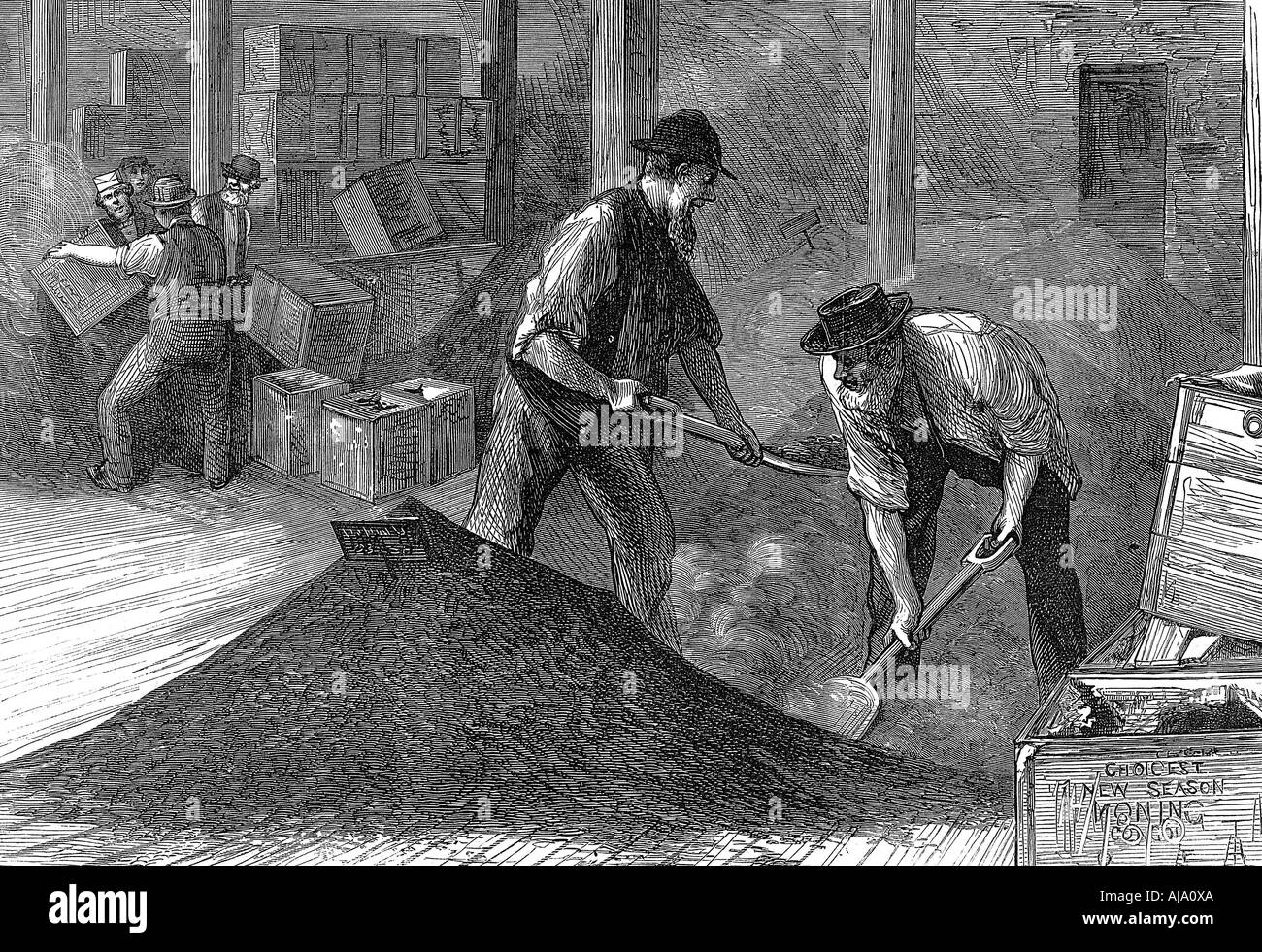 Bulking tea in the warehouses of the East & West India Dock Company, London, 1874. Artist: Unknown Stock Photohttps://www.alamy.com/image-license-details/?v=1https://www.alamy.com/bulking-tea-in-the-warehouses-of-the-east-west-india-dock-company-image8383145.html
Bulking tea in the warehouses of the East & West India Dock Company, London, 1874. Artist: Unknown Stock Photohttps://www.alamy.com/image-license-details/?v=1https://www.alamy.com/bulking-tea-in-the-warehouses-of-the-east-west-india-dock-company-image8383145.htmlRMAJA0XA–Bulking tea in the warehouses of the East & West India Dock Company, London, 1874. Artist: Unknown
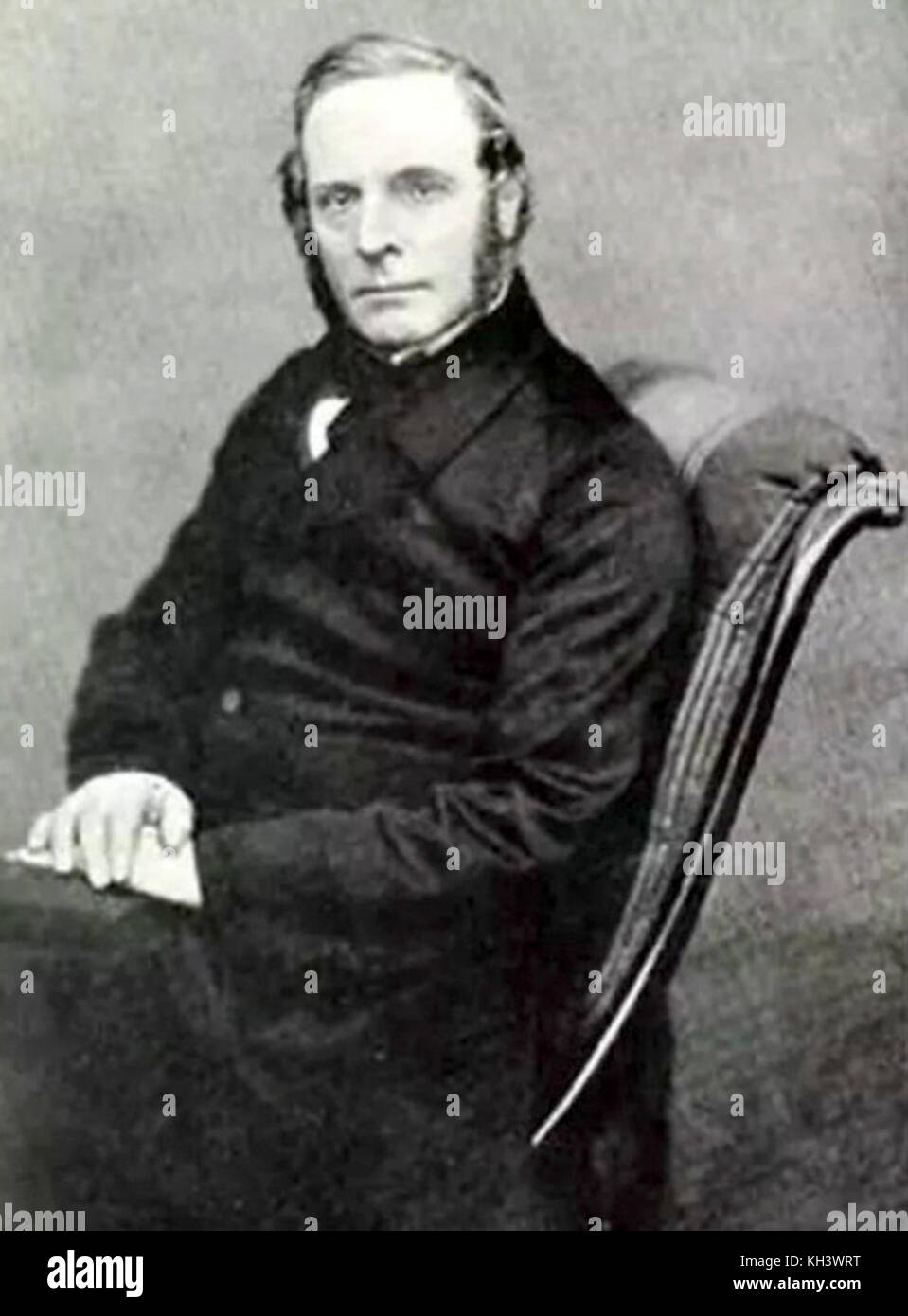 Robert Fortune, Scottish botanist, plant hunter and traveller, best known for stealing tea plants from China on behalf of the British East India Company. Stock Photohttps://www.alamy.com/image-license-details/?v=1https://www.alamy.com/stock-image-robert-fortune-scottish-botanist-plant-hunter-and-traveller-best-known-165428588.html
Robert Fortune, Scottish botanist, plant hunter and traveller, best known for stealing tea plants from China on behalf of the British East India Company. Stock Photohttps://www.alamy.com/image-license-details/?v=1https://www.alamy.com/stock-image-robert-fortune-scottish-botanist-plant-hunter-and-traveller-best-known-165428588.htmlRMKH3WRT–Robert Fortune, Scottish botanist, plant hunter and traveller, best known for stealing tea plants from China on behalf of the British East India Company.
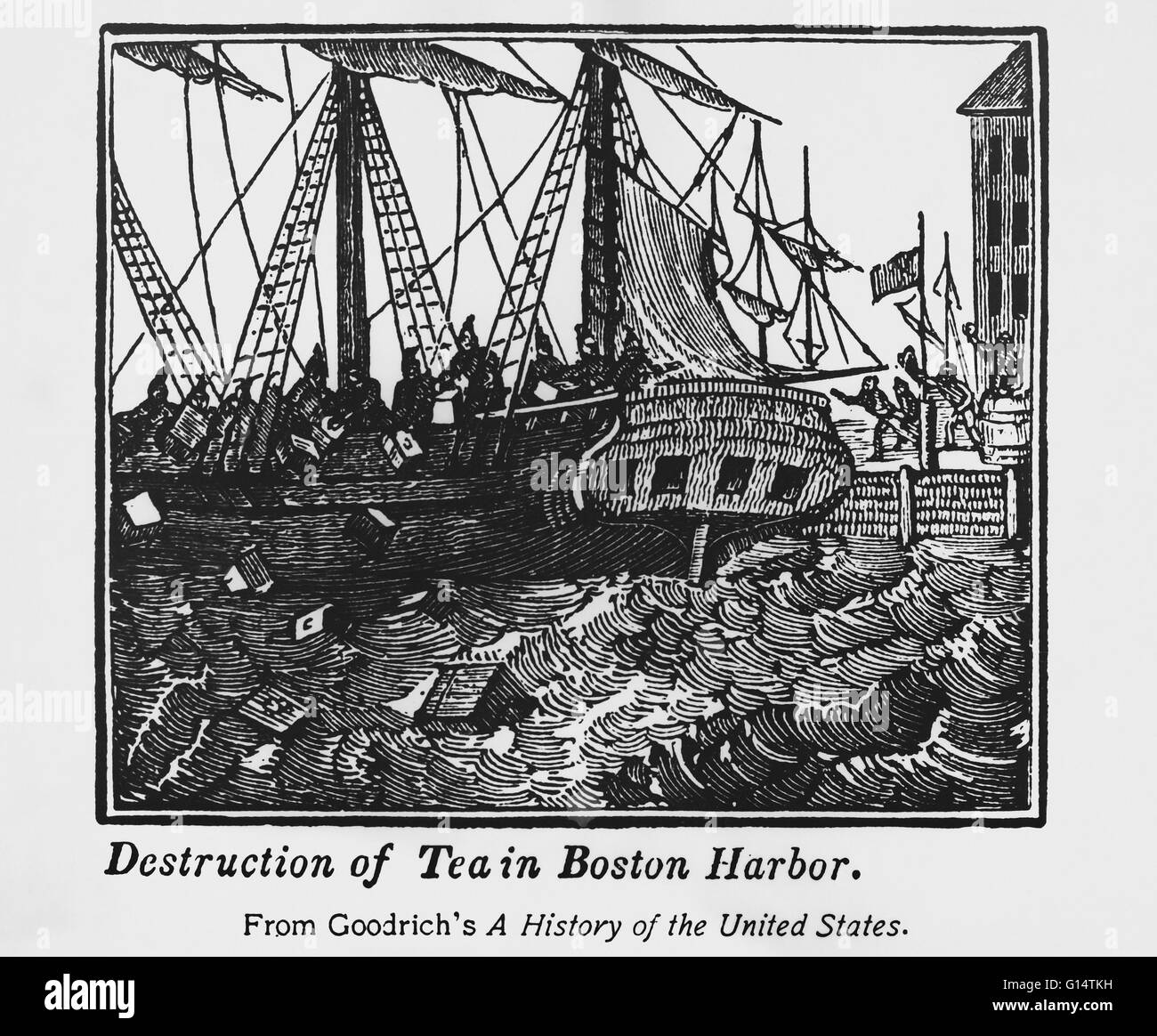 The Boston Tea Party was a direct action by colonists in Boston, a town in the British colony of Massachusetts, against the British government and the East India Company that controlled all the tea imported into the colonies. On December 16, 1773, after o Stock Photohttps://www.alamy.com/image-license-details/?v=1https://www.alamy.com/stock-photo-the-boston-tea-party-was-a-direct-action-by-colonists-in-boston-a-103984037.html
The Boston Tea Party was a direct action by colonists in Boston, a town in the British colony of Massachusetts, against the British government and the East India Company that controlled all the tea imported into the colonies. On December 16, 1773, after o Stock Photohttps://www.alamy.com/image-license-details/?v=1https://www.alamy.com/stock-photo-the-boston-tea-party-was-a-direct-action-by-colonists-in-boston-a-103984037.htmlRMG14TKH–The Boston Tea Party was a direct action by colonists in Boston, a town in the British colony of Massachusetts, against the British government and the East India Company that controlled all the tea imported into the colonies. On December 16, 1773, after o
 Boston Tea Party (December 16, 1773). Group of colonists destroying tea of the ship of the East India Company. 19th century. Engraving. Stock Photohttps://www.alamy.com/image-license-details/?v=1https://www.alamy.com/boston-tea-party-december-16-1773-group-of-colonists-destroying-tea-of-the-ship-of-the-east-india-company-19th-century-engraving-image231213427.html
Boston Tea Party (December 16, 1773). Group of colonists destroying tea of the ship of the East India Company. 19th century. Engraving. Stock Photohttps://www.alamy.com/image-license-details/?v=1https://www.alamy.com/boston-tea-party-december-16-1773-group-of-colonists-destroying-tea-of-the-ship-of-the-east-india-company-19th-century-engraving-image231213427.htmlRMRC4K2B–Boston Tea Party (December 16, 1773). Group of colonists destroying tea of the ship of the East India Company. 19th century. Engraving.
 GREENWICH, UK - The Cutty Sark is a restored historic British clipper sailing ship that is now open as a tourist attraction in Greenwich, London. It was built in 1869 and in active service until 1895. In its heyday as a trader vessel, it was known as the fastest ship of its time. It was notable for its participation in the tea trade between Asia and Europe. When the opening of the Suez Canal created the opportunity for shorter and faster trips made by steam ships, the Cutty Sark was used to transport wool from Australia to Britain. The historic Cutty Sark, a British clipper ship and one of the Stock Photohttps://www.alamy.com/image-license-details/?v=1https://www.alamy.com/greenwich-uk-the-cutty-sark-is-a-restored-historic-british-clipper-sailing-ship-that-is-now-open-as-a-tourist-attraction-in-greenwich-london-it-was-built-in-1869-and-in-active-service-until-1895-in-its-heyday-as-a-trader-vessel-it-was-known-as-the-fastest-ship-of-its-time-it-was-notable-for-its-participation-in-the-tea-trade-between-asia-and-europe-when-the-opening-of-the-suez-canal-created-the-opportunity-for-shorter-and-faster-trips-made-by-steam-ships-the-cutty-sark-was-used-to-transport-wool-from-australia-to-britain-the-historic-cutty-sark-a-british-clipper-ship-and-one-of-the-image233162213.html
GREENWICH, UK - The Cutty Sark is a restored historic British clipper sailing ship that is now open as a tourist attraction in Greenwich, London. It was built in 1869 and in active service until 1895. In its heyday as a trader vessel, it was known as the fastest ship of its time. It was notable for its participation in the tea trade between Asia and Europe. When the opening of the Suez Canal created the opportunity for shorter and faster trips made by steam ships, the Cutty Sark was used to transport wool from Australia to Britain. The historic Cutty Sark, a British clipper ship and one of the Stock Photohttps://www.alamy.com/image-license-details/?v=1https://www.alamy.com/greenwich-uk-the-cutty-sark-is-a-restored-historic-british-clipper-sailing-ship-that-is-now-open-as-a-tourist-attraction-in-greenwich-london-it-was-built-in-1869-and-in-active-service-until-1895-in-its-heyday-as-a-trader-vessel-it-was-known-as-the-fastest-ship-of-its-time-it-was-notable-for-its-participation-in-the-tea-trade-between-asia-and-europe-when-the-opening-of-the-suez-canal-created-the-opportunity-for-shorter-and-faster-trips-made-by-steam-ships-the-cutty-sark-was-used-to-transport-wool-from-australia-to-britain-the-historic-cutty-sark-a-british-clipper-ship-and-one-of-the-image233162213.htmlRMRF9CNW–GREENWICH, UK - The Cutty Sark is a restored historic British clipper sailing ship that is now open as a tourist attraction in Greenwich, London. It was built in 1869 and in active service until 1895. In its heyday as a trader vessel, it was known as the fastest ship of its time. It was notable for its participation in the tea trade between Asia and Europe. When the opening of the Suez Canal created the opportunity for shorter and faster trips made by steam ships, the Cutty Sark was used to transport wool from Australia to Britain. The historic Cutty Sark, a British clipper ship and one of the
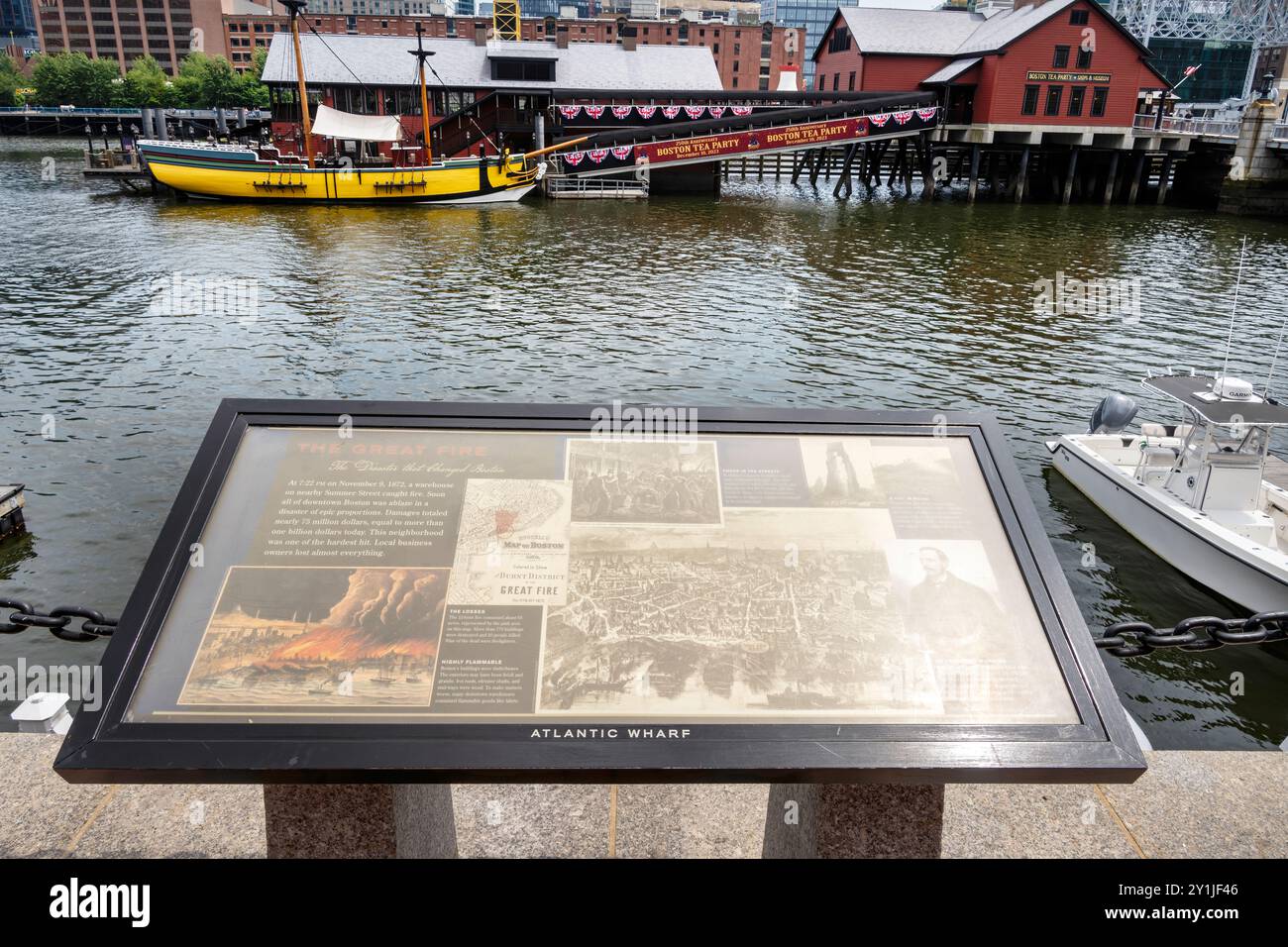 The Boston Tea Party Ships and Museum is enlightening adventure as journey back in time to December 16, 1773, when the colonists marched on board the Stock Photohttps://www.alamy.com/image-license-details/?v=1https://www.alamy.com/the-boston-tea-party-ships-and-museum-is-enlightening-adventure-as-journey-back-in-time-to-december-16-1773-when-the-colonists-marched-on-board-the-image620594918.html
The Boston Tea Party Ships and Museum is enlightening adventure as journey back in time to December 16, 1773, when the colonists marched on board the Stock Photohttps://www.alamy.com/image-license-details/?v=1https://www.alamy.com/the-boston-tea-party-ships-and-museum-is-enlightening-adventure-as-journey-back-in-time-to-december-16-1773-when-the-colonists-marched-on-board-the-image620594918.htmlRF2Y1JF46–The Boston Tea Party Ships and Museum is enlightening adventure as journey back in time to December 16, 1773, when the colonists marched on board the
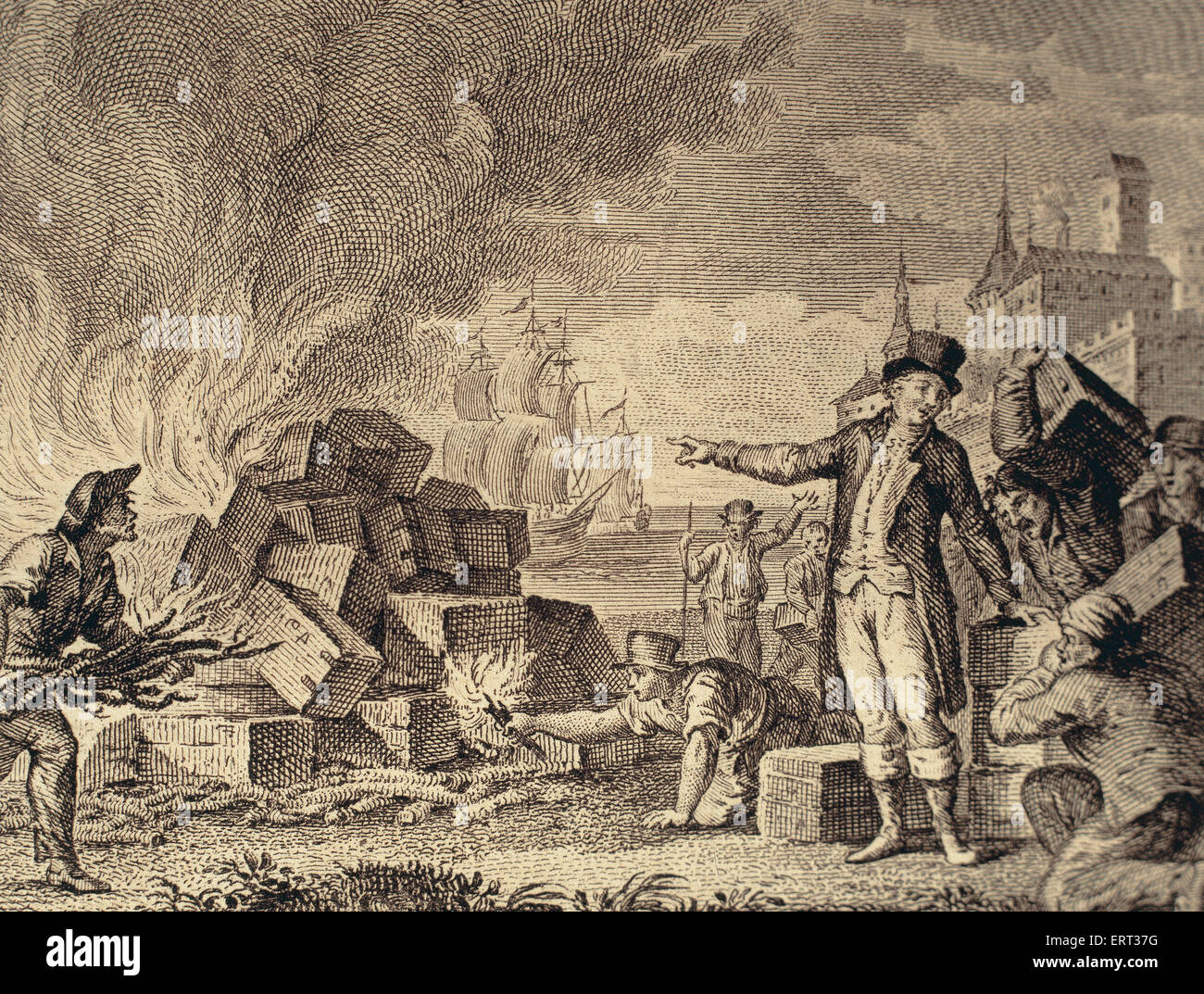 American War of Independence (1775-1783). Boston Tea Party. December 16, 1773. Revolution of the American colonists against taxes imposed by the British Parliament on tea. Disguised as Indians, boarded British merchant ships and dumped overboard crates of tea at the Boston Harbour. Engraving, 1807. Stock Photohttps://www.alamy.com/image-license-details/?v=1https://www.alamy.com/stock-photo-american-war-of-independence-1775-1783-boston-tea-party-december-16-83507972.html
American War of Independence (1775-1783). Boston Tea Party. December 16, 1773. Revolution of the American colonists against taxes imposed by the British Parliament on tea. Disguised as Indians, boarded British merchant ships and dumped overboard crates of tea at the Boston Harbour. Engraving, 1807. Stock Photohttps://www.alamy.com/image-license-details/?v=1https://www.alamy.com/stock-photo-american-war-of-independence-1775-1783-boston-tea-party-december-16-83507972.htmlRMERT37G–American War of Independence (1775-1783). Boston Tea Party. December 16, 1773. Revolution of the American colonists against taxes imposed by the British Parliament on tea. Disguised as Indians, boarded British merchant ships and dumped overboard crates of tea at the Boston Harbour. Engraving, 1807.
 According to oral tradition, tea has been grown in China for more than four millennia. The earliest written accounts of tea making, however, date from around 350 CE, when it first became a drink at the imperial court. Around 800 CE tea seeds were taken to Japan, where regular cultivation was soon established. Just over five centuries later, in 1517, tea was first shipped to Europe by the Portuguese soon after they began their trade with China. In 1667 the Honourable East India Company ordered the first British shipment of tea from China, requesting of their agents ‘one hundred pounds weight o Stock Photohttps://www.alamy.com/image-license-details/?v=1https://www.alamy.com/according-to-oral-tradition-tea-has-been-grown-in-china-for-more-than-four-millennia-the-earliest-written-accounts-of-tea-making-however-date-from-around-350-ce-when-it-first-became-a-drink-at-the-imperial-court-around-800-ce-tea-seeds-were-taken-to-japan-where-regular-cultivation-was-soon-established-just-over-five-centuries-later-in-1517-tea-was-first-shipped-to-europe-by-the-portuguese-soon-after-they-began-their-trade-with-china-in-1667-the-honourable-east-india-company-ordered-the-first-british-shipment-of-tea-from-china-requesting-of-their-agents-one-hundred-pounds-weight-o-image344258311.html
According to oral tradition, tea has been grown in China for more than four millennia. The earliest written accounts of tea making, however, date from around 350 CE, when it first became a drink at the imperial court. Around 800 CE tea seeds were taken to Japan, where regular cultivation was soon established. Just over five centuries later, in 1517, tea was first shipped to Europe by the Portuguese soon after they began their trade with China. In 1667 the Honourable East India Company ordered the first British shipment of tea from China, requesting of their agents ‘one hundred pounds weight o Stock Photohttps://www.alamy.com/image-license-details/?v=1https://www.alamy.com/according-to-oral-tradition-tea-has-been-grown-in-china-for-more-than-four-millennia-the-earliest-written-accounts-of-tea-making-however-date-from-around-350-ce-when-it-first-became-a-drink-at-the-imperial-court-around-800-ce-tea-seeds-were-taken-to-japan-where-regular-cultivation-was-soon-established-just-over-five-centuries-later-in-1517-tea-was-first-shipped-to-europe-by-the-portuguese-soon-after-they-began-their-trade-with-china-in-1667-the-honourable-east-india-company-ordered-the-first-british-shipment-of-tea-from-china-requesting-of-their-agents-one-hundred-pounds-weight-o-image344258311.htmlRM2B028YK–According to oral tradition, tea has been grown in China for more than four millennia. The earliest written accounts of tea making, however, date from around 350 CE, when it first became a drink at the imperial court. Around 800 CE tea seeds were taken to Japan, where regular cultivation was soon established. Just over five centuries later, in 1517, tea was first shipped to Europe by the Portuguese soon after they began their trade with China. In 1667 the Honourable East India Company ordered the first British shipment of tea from China, requesting of their agents ‘one hundred pounds weight o
 Photographs in Calcutta, India by Captain William George Stretton from 1875-1880. Stock Photohttps://www.alamy.com/image-license-details/?v=1https://www.alamy.com/photographs-in-calcutta-india-by-captain-william-george-stretton-from-1875-1880-image556177239.html
Photographs in Calcutta, India by Captain William George Stretton from 1875-1880. Stock Photohttps://www.alamy.com/image-license-details/?v=1https://www.alamy.com/photographs-in-calcutta-india-by-captain-william-george-stretton-from-1875-1880-image556177239.htmlRM2R8T1MR–Photographs in Calcutta, India by Captain William George Stretton from 1875-1880.
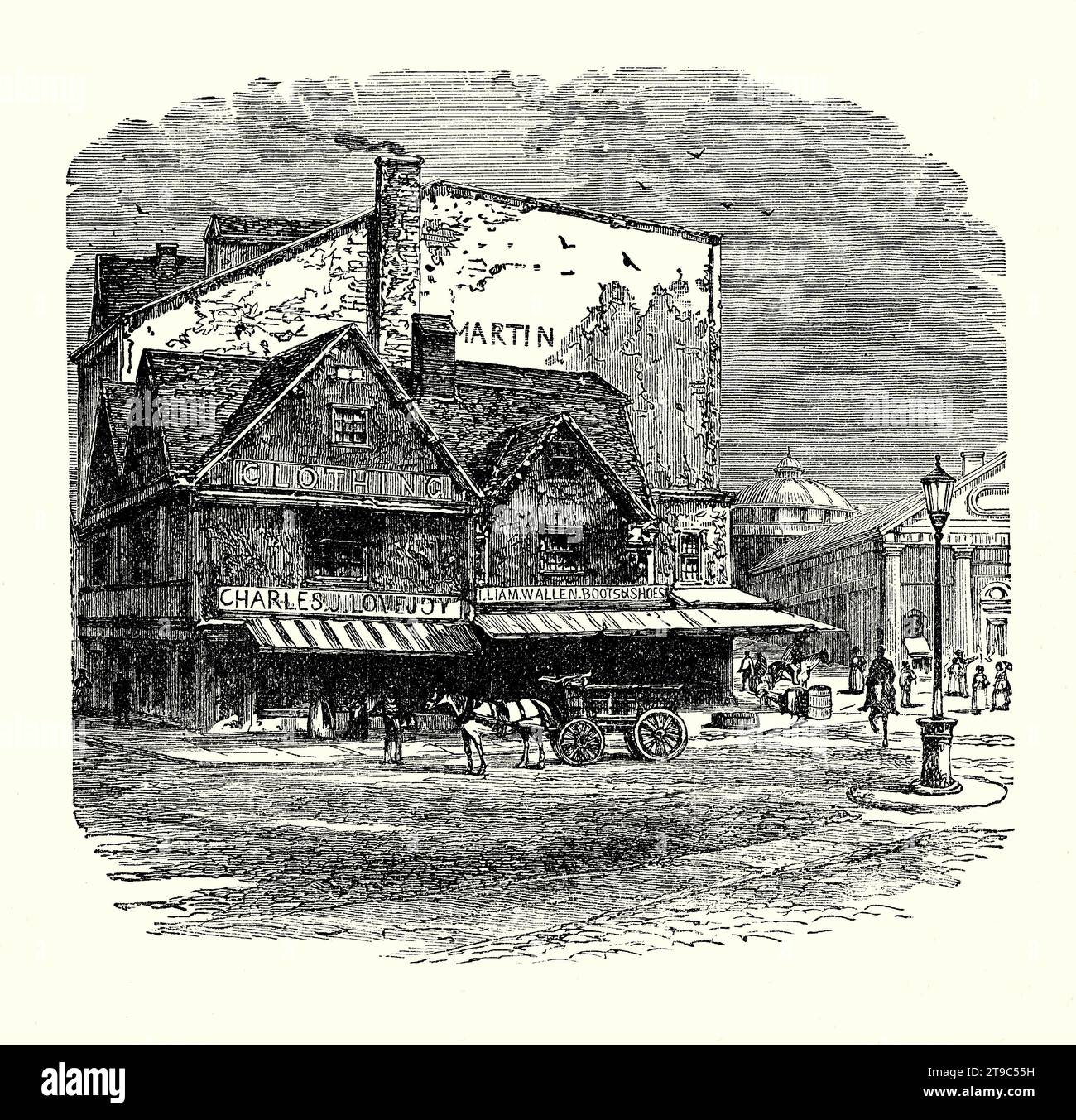 An old engraving the of the building where the plot for the Boston Tea Party was said to have been hatched at Dock Square, Boston, Massachusetts, USA in 1773. It is from an American history book of 1895. The Boston Tea Party was an American political and mercantile protest on December 16 1773, by the Sons of Liberty in Boston in colonial Massachusetts. The target was the Tea Act, which allowed the British East India Company to sell tea in the colonies without paying most taxes. The protesters destroyed an entire shipment of tea, boarding the ships and throwing the tea chests into Boston Harbor Stock Photohttps://www.alamy.com/image-license-details/?v=1https://www.alamy.com/an-old-engraving-the-of-the-building-where-the-plot-for-the-boston-tea-party-was-said-to-have-been-hatched-at-dock-square-boston-massachusetts-usa-in-1773-it-is-from-an-american-history-book-of-1895-the-boston-tea-party-was-an-american-political-and-mercantile-protest-on-december-16-1773-by-the-sons-of-liberty-in-boston-in-colonial-massachusetts-the-target-was-the-tea-act-which-allowed-the-british-east-india-company-to-sell-tea-in-the-colonies-without-paying-most-taxes-the-protesters-destroyed-an-entire-shipment-of-tea-boarding-the-ships-and-throwing-the-tea-chests-into-boston-harbor-image573741549.html
An old engraving the of the building where the plot for the Boston Tea Party was said to have been hatched at Dock Square, Boston, Massachusetts, USA in 1773. It is from an American history book of 1895. The Boston Tea Party was an American political and mercantile protest on December 16 1773, by the Sons of Liberty in Boston in colonial Massachusetts. The target was the Tea Act, which allowed the British East India Company to sell tea in the colonies without paying most taxes. The protesters destroyed an entire shipment of tea, boarding the ships and throwing the tea chests into Boston Harbor Stock Photohttps://www.alamy.com/image-license-details/?v=1https://www.alamy.com/an-old-engraving-the-of-the-building-where-the-plot-for-the-boston-tea-party-was-said-to-have-been-hatched-at-dock-square-boston-massachusetts-usa-in-1773-it-is-from-an-american-history-book-of-1895-the-boston-tea-party-was-an-american-political-and-mercantile-protest-on-december-16-1773-by-the-sons-of-liberty-in-boston-in-colonial-massachusetts-the-target-was-the-tea-act-which-allowed-the-british-east-india-company-to-sell-tea-in-the-colonies-without-paying-most-taxes-the-protesters-destroyed-an-entire-shipment-of-tea-boarding-the-ships-and-throwing-the-tea-chests-into-boston-harbor-image573741549.htmlRM2T9C55H–An old engraving the of the building where the plot for the Boston Tea Party was said to have been hatched at Dock Square, Boston, Massachusetts, USA in 1773. It is from an American history book of 1895. The Boston Tea Party was an American political and mercantile protest on December 16 1773, by the Sons of Liberty in Boston in colonial Massachusetts. The target was the Tea Act, which allowed the British East India Company to sell tea in the colonies without paying most taxes. The protesters destroyed an entire shipment of tea, boarding the ships and throwing the tea chests into Boston Harbor
 Facsimile of the proclamation about the tea ship, 1773 (c1880). Artist: Unknown Stock Photohttps://www.alamy.com/image-license-details/?v=1https://www.alamy.com/stock-photo-facsimile-of-the-proclamation-about-the-tea-ship-1773-c1880-artist-25712592.html
Facsimile of the proclamation about the tea ship, 1773 (c1880). Artist: Unknown Stock Photohttps://www.alamy.com/image-license-details/?v=1https://www.alamy.com/stock-photo-facsimile-of-the-proclamation-about-the-tea-ship-1773-c1880-artist-25712592.htmlRMBDR8JT–Facsimile of the proclamation about the tea ship, 1773 (c1880). Artist: Unknown
 Boston Tea Party Ship Museum, along the Boston Harborwalk on the Atlantic Wharf Waterfront in South Boston Massachusetts Stock Photohttps://www.alamy.com/image-license-details/?v=1https://www.alamy.com/stock-photo-boston-tea-party-ship-museum-along-the-boston-harborwalk-on-the-atlantic-85687253.html
Boston Tea Party Ship Museum, along the Boston Harborwalk on the Atlantic Wharf Waterfront in South Boston Massachusetts Stock Photohttps://www.alamy.com/image-license-details/?v=1https://www.alamy.com/stock-photo-boston-tea-party-ship-museum-along-the-boston-harborwalk-on-the-atlantic-85687253.htmlRMEYBAY1–Boston Tea Party Ship Museum, along the Boston Harborwalk on the Atlantic Wharf Waterfront in South Boston Massachusetts
 BOSTON, MASSACHUSETTS, USA - 16 December 1773 - Etching of citizens destroying tea by the Sons of Liberty in Boston Harbor in 1773 in protest at the 1 Stock Photohttps://www.alamy.com/image-license-details/?v=1https://www.alamy.com/boston-massachusetts-usa-16-december-1773-etching-of-citizens-destroying-tea-by-the-sons-of-liberty-in-boston-harbor-in-1773-in-protest-at-the-1-image433970221.html
BOSTON, MASSACHUSETTS, USA - 16 December 1773 - Etching of citizens destroying tea by the Sons of Liberty in Boston Harbor in 1773 in protest at the 1 Stock Photohttps://www.alamy.com/image-license-details/?v=1https://www.alamy.com/boston-massachusetts-usa-16-december-1773-etching-of-citizens-destroying-tea-by-the-sons-of-liberty-in-boston-harbor-in-1773-in-protest-at-the-1-image433970221.htmlRM2G611CD–BOSTON, MASSACHUSETTS, USA - 16 December 1773 - Etching of citizens destroying tea by the Sons of Liberty in Boston Harbor in 1773 in protest at the 1
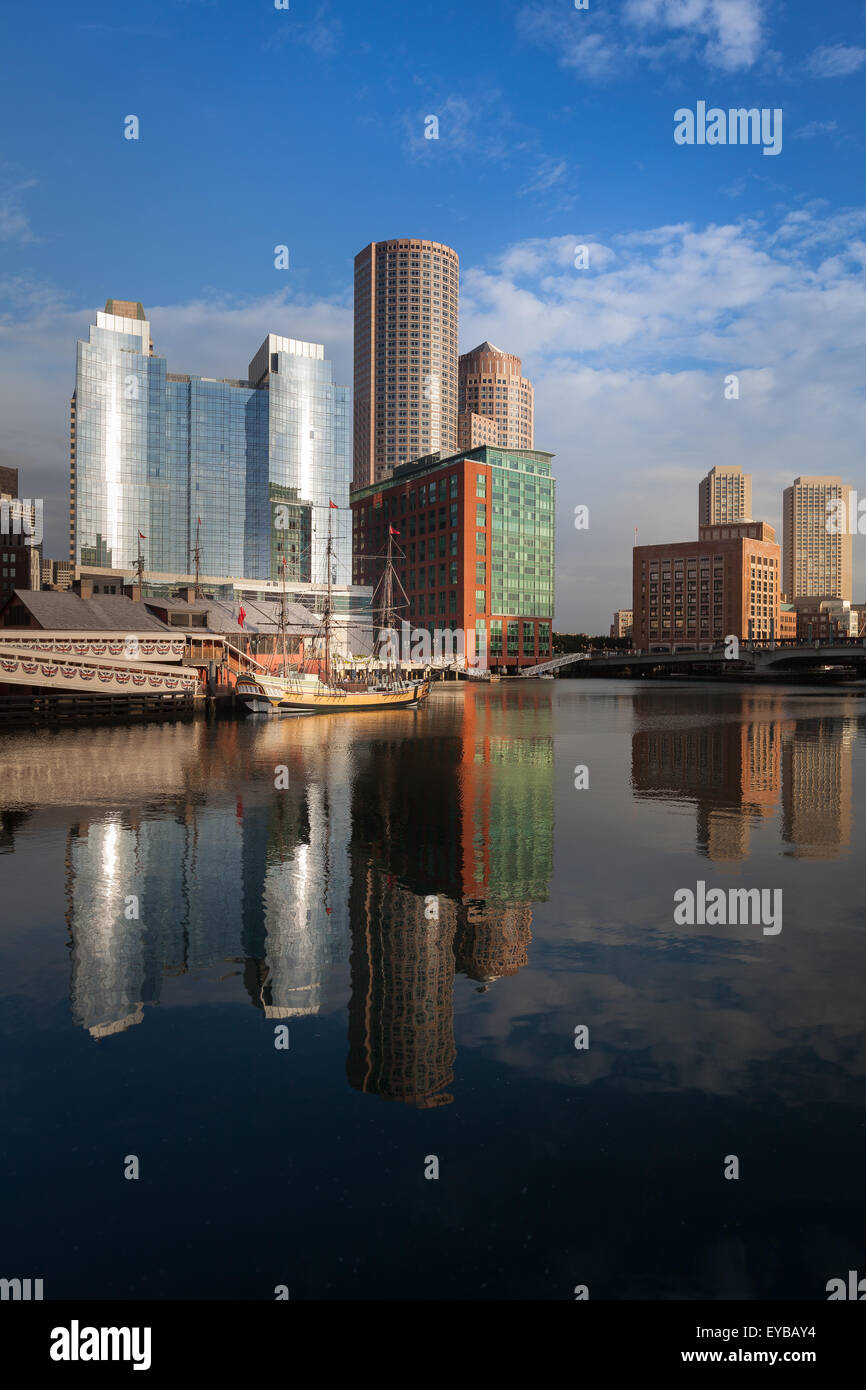 Boston Tea Party Ship Museum, along the Boston Harborwalk on the Atlantic Wharf Waterfront in South Boston Massachusetts Stock Photohttps://www.alamy.com/image-license-details/?v=1https://www.alamy.com/stock-photo-boston-tea-party-ship-museum-along-the-boston-harborwalk-on-the-atlantic-85687256.html
Boston Tea Party Ship Museum, along the Boston Harborwalk on the Atlantic Wharf Waterfront in South Boston Massachusetts Stock Photohttps://www.alamy.com/image-license-details/?v=1https://www.alamy.com/stock-photo-boston-tea-party-ship-museum-along-the-boston-harborwalk-on-the-atlantic-85687256.htmlRMEYBAY4–Boston Tea Party Ship Museum, along the Boston Harborwalk on the Atlantic Wharf Waterfront in South Boston Massachusetts
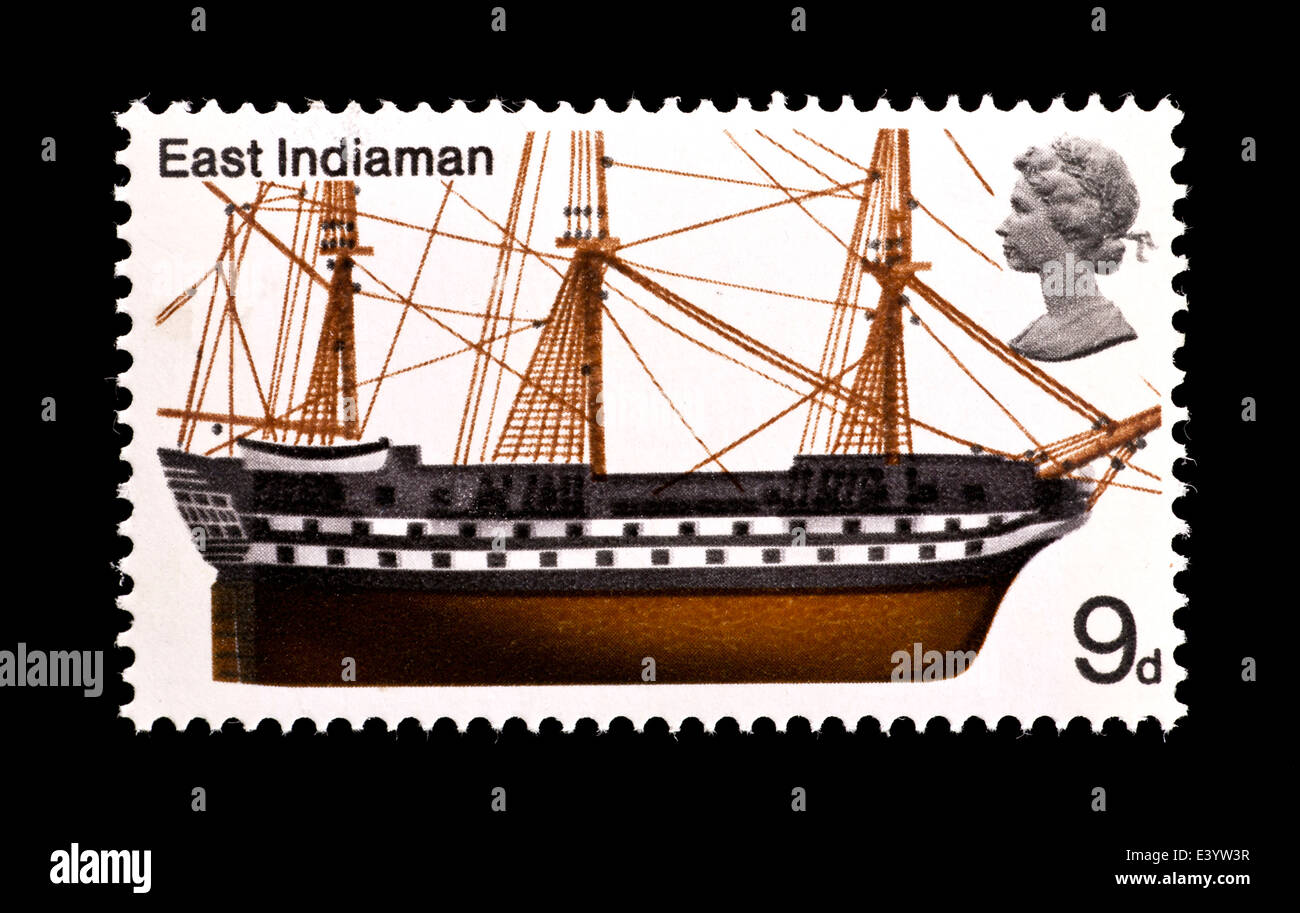 Postage stamp from Great Britain depicting an East Indiaman ship. Stock Photohttps://www.alamy.com/image-license-details/?v=1https://www.alamy.com/stock-photo-postage-stamp-from-great-britain-depicting-an-east-indiaman-ship-71297851.html
Postage stamp from Great Britain depicting an East Indiaman ship. Stock Photohttps://www.alamy.com/image-license-details/?v=1https://www.alamy.com/stock-photo-postage-stamp-from-great-britain-depicting-an-east-indiaman-ship-71297851.htmlRME3YW3R–Postage stamp from Great Britain depicting an East Indiaman ship.
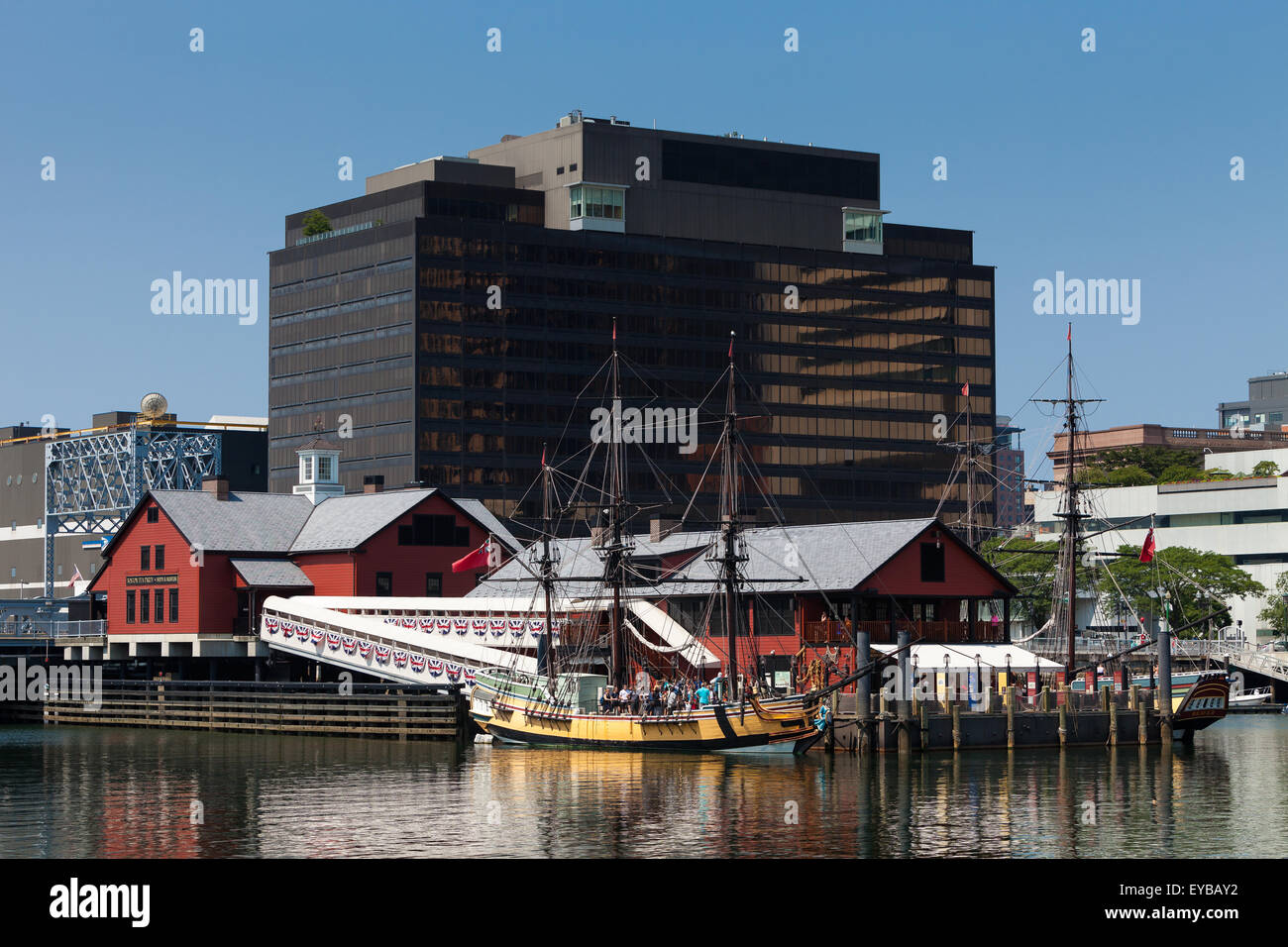 Boston Tea Party Ship Museum, along the Boston Harborwalk on the Atlantic Wharf Waterfront in South Boston Massachusetts Stock Photohttps://www.alamy.com/image-license-details/?v=1https://www.alamy.com/stock-photo-boston-tea-party-ship-museum-along-the-boston-harborwalk-on-the-atlantic-85687254.html
Boston Tea Party Ship Museum, along the Boston Harborwalk on the Atlantic Wharf Waterfront in South Boston Massachusetts Stock Photohttps://www.alamy.com/image-license-details/?v=1https://www.alamy.com/stock-photo-boston-tea-party-ship-museum-along-the-boston-harborwalk-on-the-atlantic-85687254.htmlRMEYBAY2–Boston Tea Party Ship Museum, along the Boston Harborwalk on the Atlantic Wharf Waterfront in South Boston Massachusetts
 Boston tea party, 16th December 1773,The destruction of tea at Boston Harbor Stock Photohttps://www.alamy.com/image-license-details/?v=1https://www.alamy.com/boston-tea-party-16th-december-1773the-destruction-of-tea-at-boston-harbor-image335858083.html
Boston tea party, 16th December 1773,The destruction of tea at Boston Harbor Stock Photohttps://www.alamy.com/image-license-details/?v=1https://www.alamy.com/boston-tea-party-16th-december-1773the-destruction-of-tea-at-boston-harbor-image335858083.htmlRM2AEBJBF–Boston tea party, 16th December 1773,The destruction of tea at Boston Harbor
 Boston Tea Party Ship Museum, along the Boston Harborwalk on the Atlantic Wharf Waterfront in South Boston Massachusetts Stock Photohttps://www.alamy.com/image-license-details/?v=1https://www.alamy.com/stock-photo-boston-tea-party-ship-museum-along-the-boston-harborwalk-on-the-atlantic-85687258.html
Boston Tea Party Ship Museum, along the Boston Harborwalk on the Atlantic Wharf Waterfront in South Boston Massachusetts Stock Photohttps://www.alamy.com/image-license-details/?v=1https://www.alamy.com/stock-photo-boston-tea-party-ship-museum-along-the-boston-harborwalk-on-the-atlantic-85687258.htmlRMEYBAY6–Boston Tea Party Ship Museum, along the Boston Harborwalk on the Atlantic Wharf Waterfront in South Boston Massachusetts
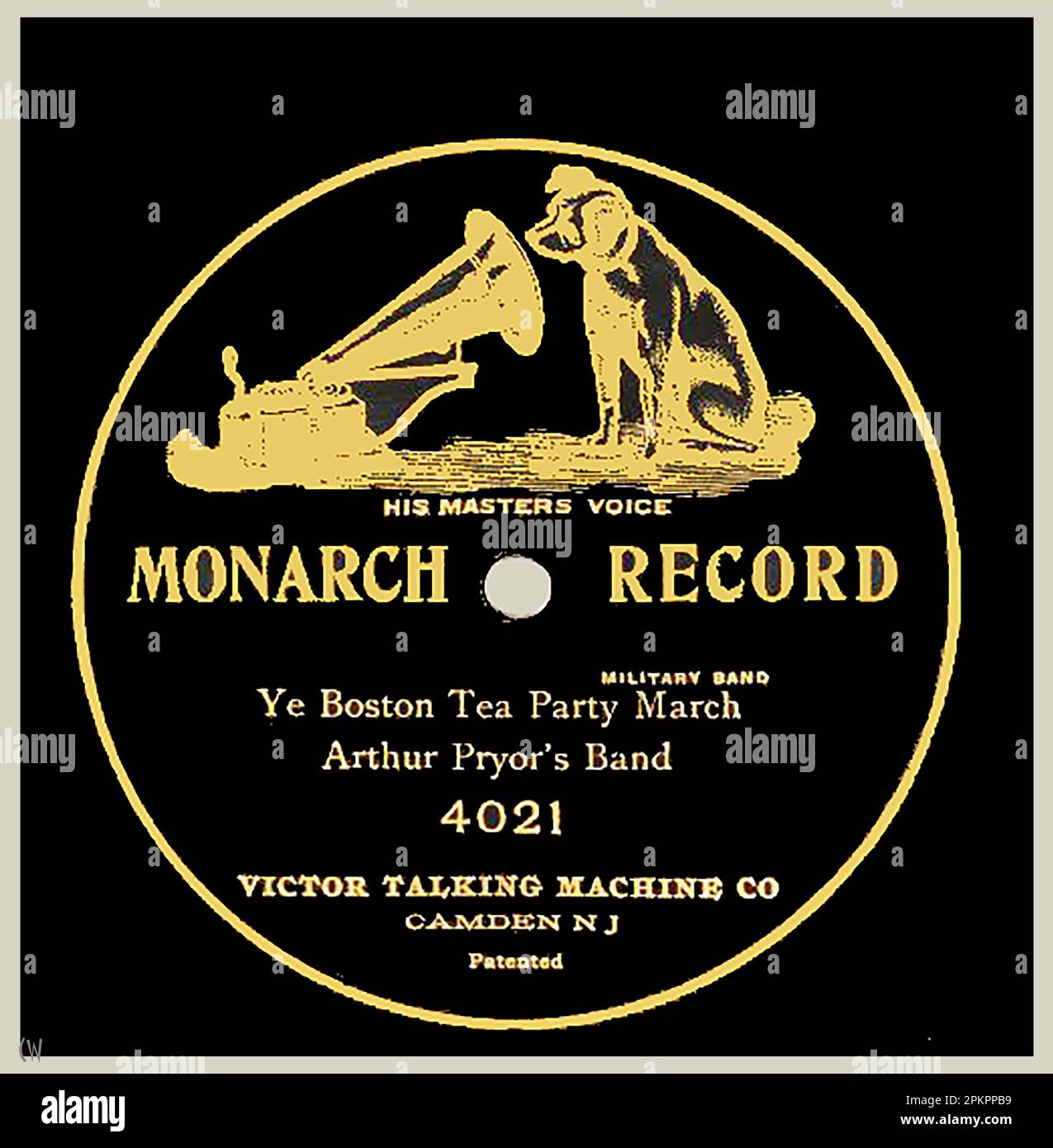 BOSTON TEA PARTY December 16, 1773 - A MONARCH RECORD ( HMV ) 'Ye Boston Tea Party March' . The Boston Tea Party was an American political and mercantile protest against the Tea Act of 1773 which imposed a tea tax { Townshend Revenue Act)) but allowed the British East India Company tax concessions for its imported tea from China. A protest group known as the Sons of Liberty (some disguised as Indian tribesmen) destroyed an East India Company. cargo of tea by throwing tea chests from a number of ships into Boston Harbour.. The incident was the precursor to the American Revolution Stock Photohttps://www.alamy.com/image-license-details/?v=1https://www.alamy.com/boston-tea-party-december-16-1773-a-monarch-record-hmv-ye-boston-tea-party-march-the-boston-tea-party-was-an-american-political-and-mercantile-protest-against-the-tea-act-of-1773-which-imposed-a-tea-tax-townshend-revenue-act-but-allowed-the-british-east-india-company-tax-concessions-for-its-imported-tea-from-china-a-protest-group-known-as-the-sons-of-liberty-some-disguised-as-indian-tribesmen-destroyed-an-east-india-company-cargo-of-tea-by-throwing-tea-chests-from-a-number-of-ships-into-boston-harbour-the-incident-was-the-precursor-to-the-american-revolution-image545700381.html
BOSTON TEA PARTY December 16, 1773 - A MONARCH RECORD ( HMV ) 'Ye Boston Tea Party March' . The Boston Tea Party was an American political and mercantile protest against the Tea Act of 1773 which imposed a tea tax { Townshend Revenue Act)) but allowed the British East India Company tax concessions for its imported tea from China. A protest group known as the Sons of Liberty (some disguised as Indian tribesmen) destroyed an East India Company. cargo of tea by throwing tea chests from a number of ships into Boston Harbour.. The incident was the precursor to the American Revolution Stock Photohttps://www.alamy.com/image-license-details/?v=1https://www.alamy.com/boston-tea-party-december-16-1773-a-monarch-record-hmv-ye-boston-tea-party-march-the-boston-tea-party-was-an-american-political-and-mercantile-protest-against-the-tea-act-of-1773-which-imposed-a-tea-tax-townshend-revenue-act-but-allowed-the-british-east-india-company-tax-concessions-for-its-imported-tea-from-china-a-protest-group-known-as-the-sons-of-liberty-some-disguised-as-indian-tribesmen-destroyed-an-east-india-company-cargo-of-tea-by-throwing-tea-chests-from-a-number-of-ships-into-boston-harbour-the-incident-was-the-precursor-to-the-american-revolution-image545700381.htmlRM2PKPPB9–BOSTON TEA PARTY December 16, 1773 - A MONARCH RECORD ( HMV ) 'Ye Boston Tea Party March' . The Boston Tea Party was an American political and mercantile protest against the Tea Act of 1773 which imposed a tea tax { Townshend Revenue Act)) but allowed the British East India Company tax concessions for its imported tea from China. A protest group known as the Sons of Liberty (some disguised as Indian tribesmen) destroyed an East India Company. cargo of tea by throwing tea chests from a number of ships into Boston Harbour.. The incident was the precursor to the American Revolution
 Boston Tea Party Ship Museum, along the Boston Harborwalk on the Atlantic Wharf Waterfront in South Boston Massachusetts Stock Photohttps://www.alamy.com/image-license-details/?v=1https://www.alamy.com/stock-photo-boston-tea-party-ship-museum-along-the-boston-harborwalk-on-the-atlantic-85687257.html
Boston Tea Party Ship Museum, along the Boston Harborwalk on the Atlantic Wharf Waterfront in South Boston Massachusetts Stock Photohttps://www.alamy.com/image-license-details/?v=1https://www.alamy.com/stock-photo-boston-tea-party-ship-museum-along-the-boston-harborwalk-on-the-atlantic-85687257.htmlRMEYBAY5–Boston Tea Party Ship Museum, along the Boston Harborwalk on the Atlantic Wharf Waterfront in South Boston Massachusetts
 Robert Fortune, Scottish botanist, plant hunter and traveller, best known for stealing tea plants from China on behalf of the British East India Company. Stock Photohttps://www.alamy.com/image-license-details/?v=1https://www.alamy.com/stock-image-robert-fortune-scottish-botanist-plant-hunter-and-traveller-best-known-165428594.html
Robert Fortune, Scottish botanist, plant hunter and traveller, best known for stealing tea plants from China on behalf of the British East India Company. Stock Photohttps://www.alamy.com/image-license-details/?v=1https://www.alamy.com/stock-image-robert-fortune-scottish-botanist-plant-hunter-and-traveller-best-known-165428594.htmlRMKH3WT2–Robert Fortune, Scottish botanist, plant hunter and traveller, best known for stealing tea plants from China on behalf of the British East India Company.
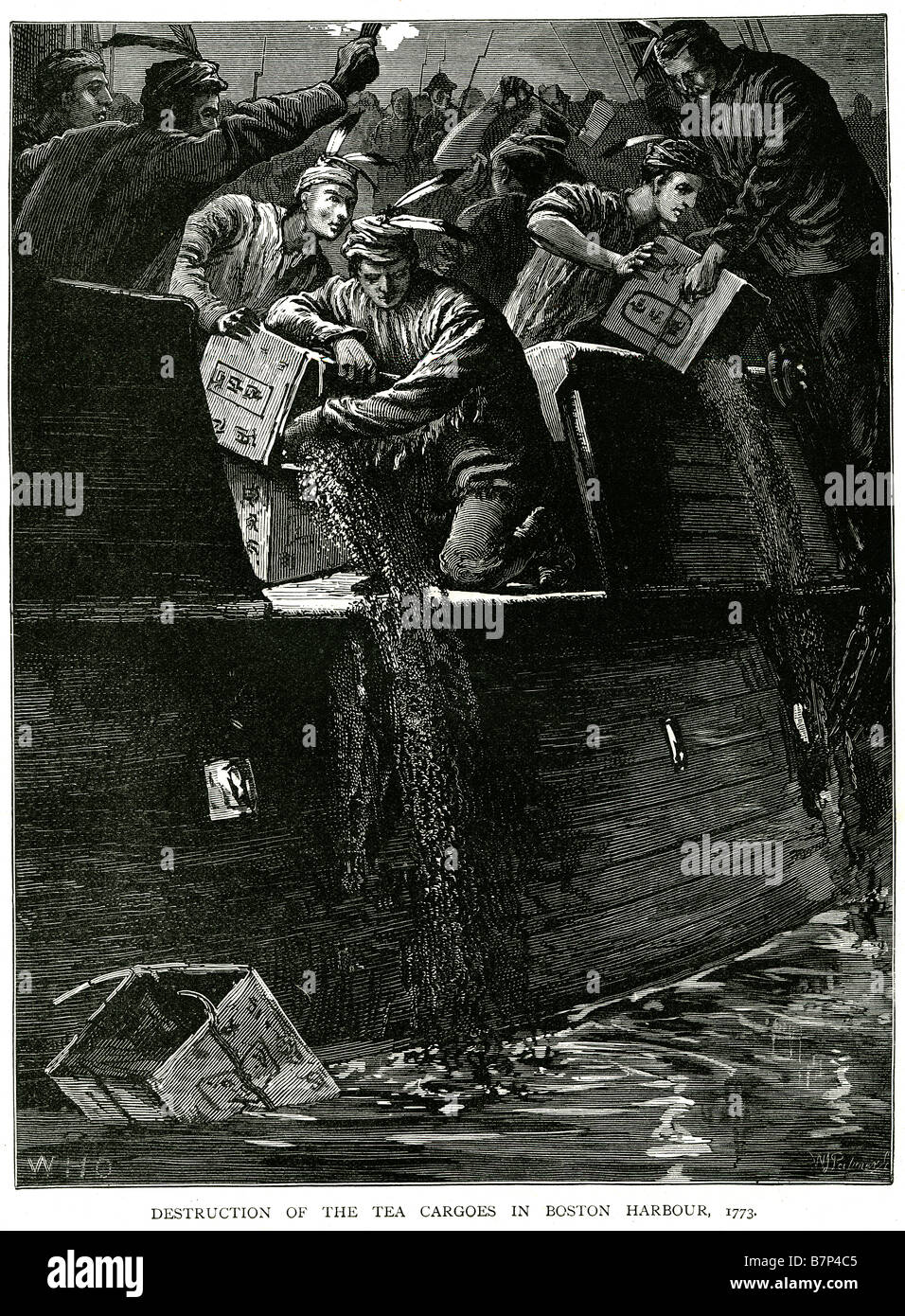 destruction tea cargoes boston harbour 1773 boat trade The Boston Tea Party was an act of direct action protest by the American Stock Photohttps://www.alamy.com/image-license-details/?v=1https://www.alamy.com/stock-photo-destruction-tea-cargoes-boston-harbour-1773-boat-trade-the-boston-21999381.html
destruction tea cargoes boston harbour 1773 boat trade The Boston Tea Party was an act of direct action protest by the American Stock Photohttps://www.alamy.com/image-license-details/?v=1https://www.alamy.com/stock-photo-destruction-tea-cargoes-boston-harbour-1773-boat-trade-the-boston-21999381.htmlRMB7P4C5–destruction tea cargoes boston harbour 1773 boat trade The Boston Tea Party was an act of direct action protest by the American
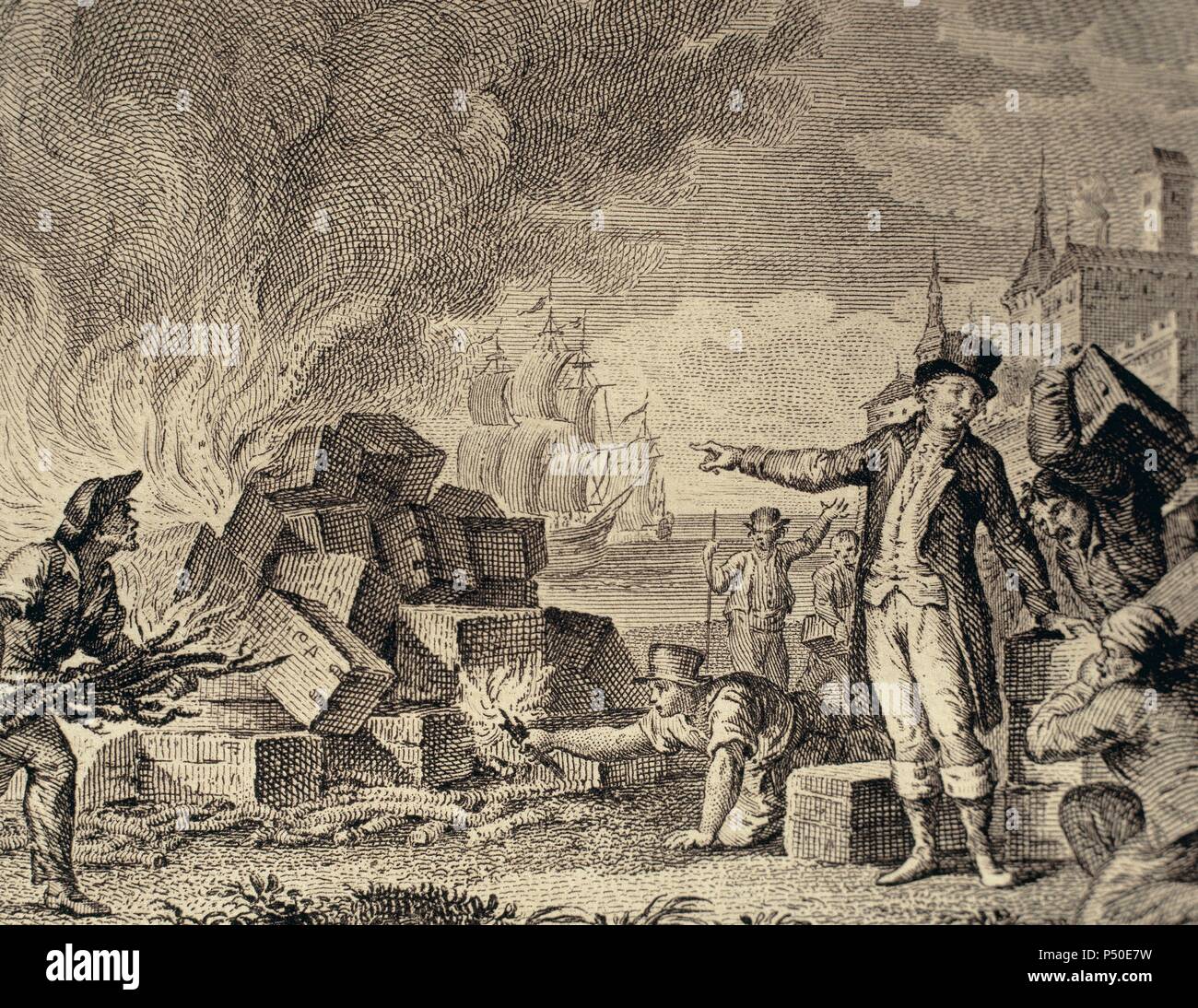 American War of Independence (1775-1783). Boston Tea Party. December 16, 1773. Revolution of the American colonists against taxes imposed by the British Parliament on tea. Disguised as Indians, boarded British merchant ships and dumped overboard crates of tea at the Boston Harbour. Engraving, 1807. Stock Photohttps://www.alamy.com/image-license-details/?v=1https://www.alamy.com/american-war-of-independence-1775-1783-boston-tea-party-december-16-1773-revolution-of-the-american-colonists-against-taxes-imposed-by-the-british-parliament-on-tea-disguised-as-indians-boarded-british-merchant-ships-and-dumped-overboard-crates-of-tea-at-the-boston-harbour-engraving-1807-image209608893.html
American War of Independence (1775-1783). Boston Tea Party. December 16, 1773. Revolution of the American colonists against taxes imposed by the British Parliament on tea. Disguised as Indians, boarded British merchant ships and dumped overboard crates of tea at the Boston Harbour. Engraving, 1807. Stock Photohttps://www.alamy.com/image-license-details/?v=1https://www.alamy.com/american-war-of-independence-1775-1783-boston-tea-party-december-16-1773-revolution-of-the-american-colonists-against-taxes-imposed-by-the-british-parliament-on-tea-disguised-as-indians-boarded-british-merchant-ships-and-dumped-overboard-crates-of-tea-at-the-boston-harbour-engraving-1807-image209608893.htmlRMP50E7W–American War of Independence (1775-1783). Boston Tea Party. December 16, 1773. Revolution of the American colonists against taxes imposed by the British Parliament on tea. Disguised as Indians, boarded British merchant ships and dumped overboard crates of tea at the Boston Harbour. Engraving, 1807.
 GREENWICH, UK - The Cutty Sark is a restored historic British clipper sailing ship that is now open as a tourist attraction in Greenwich, London. It was built in 1869 and in active service until 1895. In its heyday as a trader vessel, it was known as the fastest ship of its time. It was notable for its participation in the tea trade between Asia and Europe. When the opening of the Suez Canal created the opportunity for shorter and faster trips made by steam ships, the Cutty Sark was used to transport wool from Australia to Britain. The historic Cutty Sark, a British clipper ship and one of the Stock Photohttps://www.alamy.com/image-license-details/?v=1https://www.alamy.com/greenwich-uk-the-cutty-sark-is-a-restored-historic-british-clipper-sailing-ship-that-is-now-open-as-a-tourist-attraction-in-greenwich-london-it-was-built-in-1869-and-in-active-service-until-1895-in-its-heyday-as-a-trader-vessel-it-was-known-as-the-fastest-ship-of-its-time-it-was-notable-for-its-participation-in-the-tea-trade-between-asia-and-europe-when-the-opening-of-the-suez-canal-created-the-opportunity-for-shorter-and-faster-trips-made-by-steam-ships-the-cutty-sark-was-used-to-transport-wool-from-australia-to-britain-the-historic-cutty-sark-a-british-clipper-ship-and-one-of-the-image233162492.html
GREENWICH, UK - The Cutty Sark is a restored historic British clipper sailing ship that is now open as a tourist attraction in Greenwich, London. It was built in 1869 and in active service until 1895. In its heyday as a trader vessel, it was known as the fastest ship of its time. It was notable for its participation in the tea trade between Asia and Europe. When the opening of the Suez Canal created the opportunity for shorter and faster trips made by steam ships, the Cutty Sark was used to transport wool from Australia to Britain. The historic Cutty Sark, a British clipper ship and one of the Stock Photohttps://www.alamy.com/image-license-details/?v=1https://www.alamy.com/greenwich-uk-the-cutty-sark-is-a-restored-historic-british-clipper-sailing-ship-that-is-now-open-as-a-tourist-attraction-in-greenwich-london-it-was-built-in-1869-and-in-active-service-until-1895-in-its-heyday-as-a-trader-vessel-it-was-known-as-the-fastest-ship-of-its-time-it-was-notable-for-its-participation-in-the-tea-trade-between-asia-and-europe-when-the-opening-of-the-suez-canal-created-the-opportunity-for-shorter-and-faster-trips-made-by-steam-ships-the-cutty-sark-was-used-to-transport-wool-from-australia-to-britain-the-historic-cutty-sark-a-british-clipper-ship-and-one-of-the-image233162492.htmlRMRF9D3T–GREENWICH, UK - The Cutty Sark is a restored historic British clipper sailing ship that is now open as a tourist attraction in Greenwich, London. It was built in 1869 and in active service until 1895. In its heyday as a trader vessel, it was known as the fastest ship of its time. It was notable for its participation in the tea trade between Asia and Europe. When the opening of the Suez Canal created the opportunity for shorter and faster trips made by steam ships, the Cutty Sark was used to transport wool from Australia to Britain. The historic Cutty Sark, a British clipper ship and one of the
 East India Company in Calcutta. Manufactury and Bazaar. Painted in 1795, Unknown artist Stock Photohttps://www.alamy.com/image-license-details/?v=1https://www.alamy.com/east-india-company-in-calcutta-manufactury-and-bazaar-painted-in-1795-unknown-artist-image448571872.html
East India Company in Calcutta. Manufactury and Bazaar. Painted in 1795, Unknown artist Stock Photohttps://www.alamy.com/image-license-details/?v=1https://www.alamy.com/east-india-company-in-calcutta-manufactury-and-bazaar-painted-in-1795-unknown-artist-image448571872.htmlRM2H1P600–East India Company in Calcutta. Manufactury and Bazaar. Painted in 1795, Unknown artist
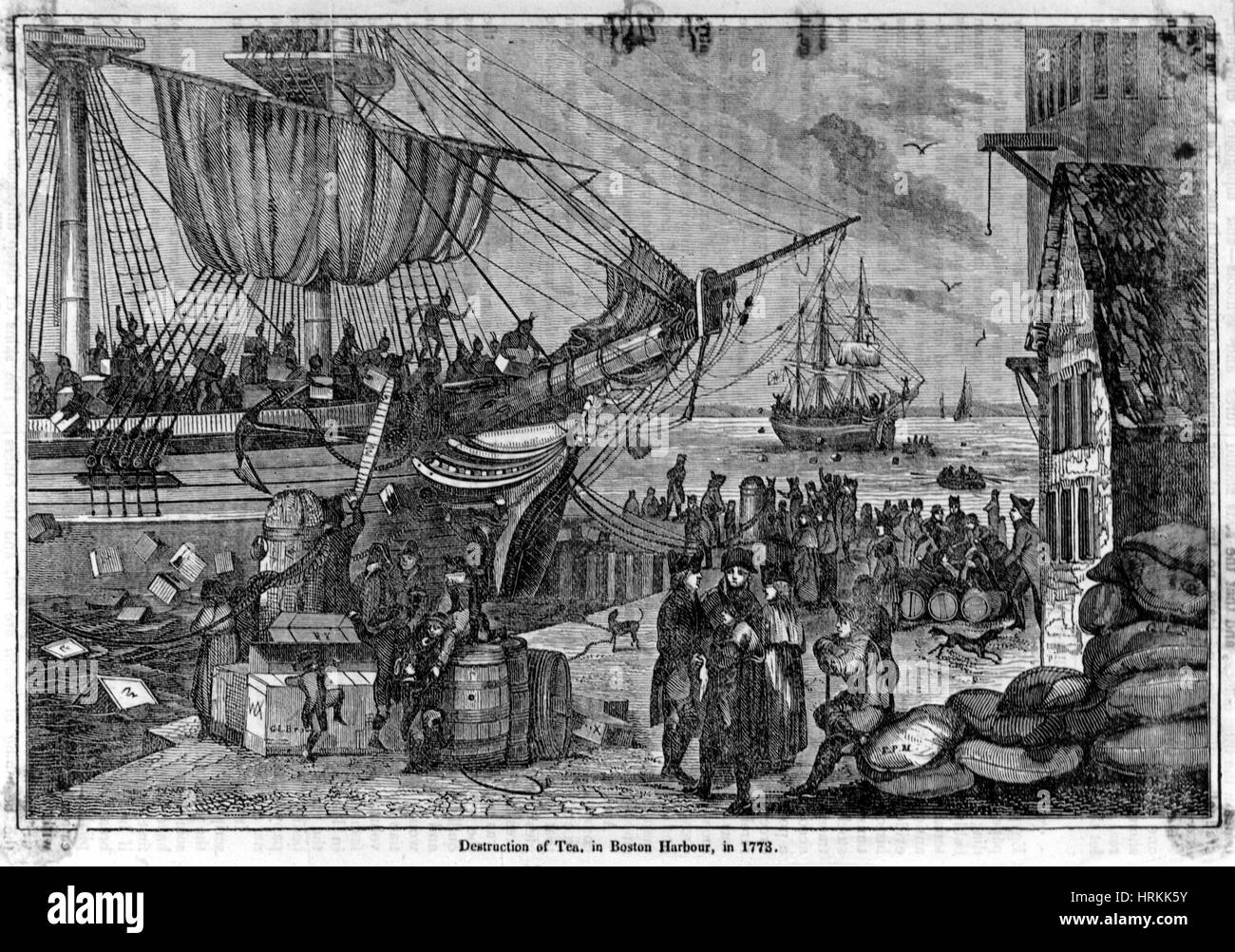 Boston Tea Party, 1773 Stock Photohttps://www.alamy.com/image-license-details/?v=1https://www.alamy.com/stock-photo-boston-tea-party-1773-135041815.html
Boston Tea Party, 1773 Stock Photohttps://www.alamy.com/image-license-details/?v=1https://www.alamy.com/stock-photo-boston-tea-party-1773-135041815.htmlRMHRKK5Y–Boston Tea Party, 1773
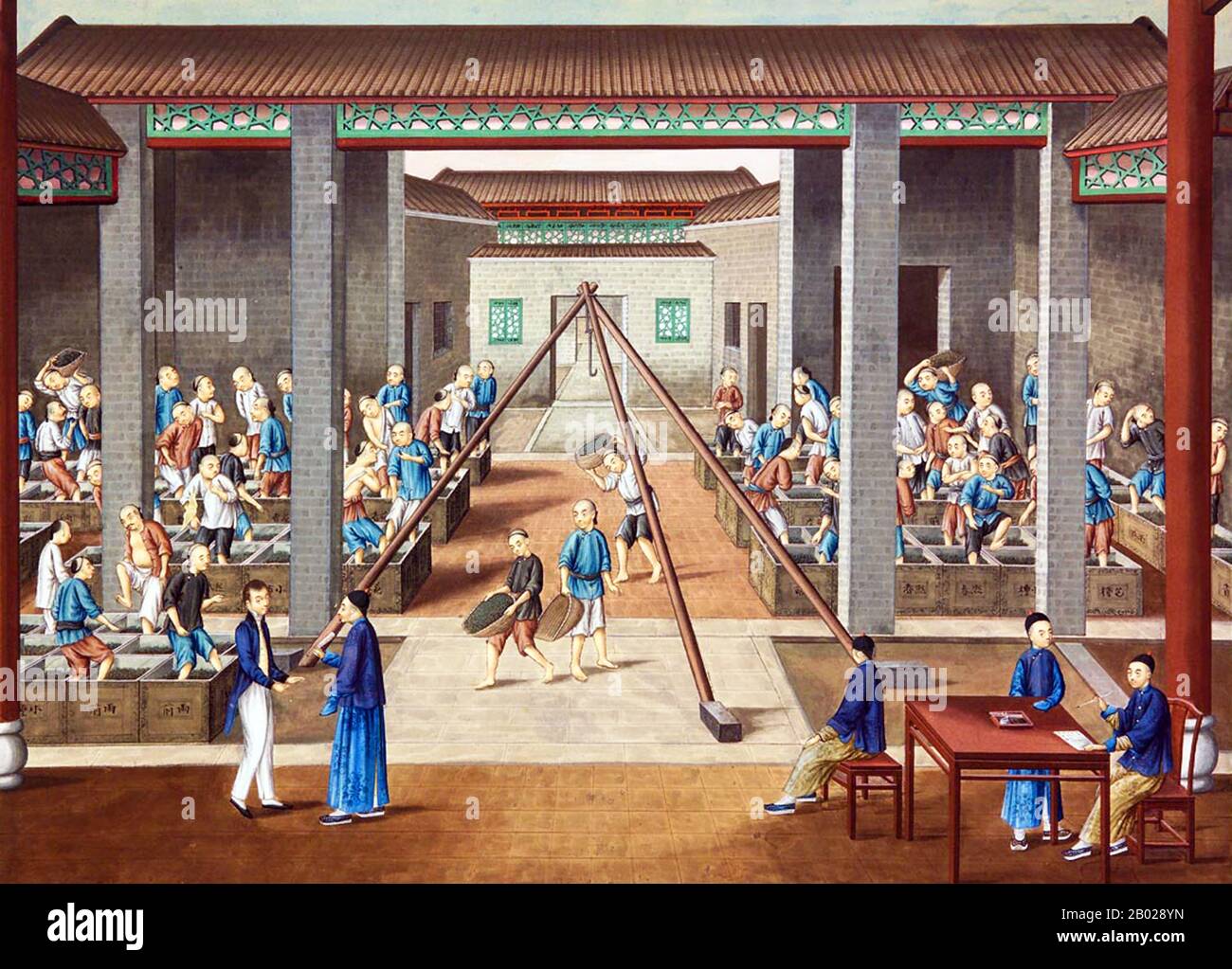 According to oral tradition, tea has been grown in China for more than four millennia. The earliest written accounts of tea making, however, date from around 350 CE, when it first became a drink at the imperial court. Around 800 CE tea seeds were taken to Japan, where regular cultivation was soon established. Just over five centuries later, in 1517, tea was first shipped to Europe by the Portuguese soon after they began their trade with China. In 1667 the Honourable East India Company ordered the first British shipment of tea from China, requesting of their agents ‘one hundred pounds weight o Stock Photohttps://www.alamy.com/image-license-details/?v=1https://www.alamy.com/according-to-oral-tradition-tea-has-been-grown-in-china-for-more-than-four-millennia-the-earliest-written-accounts-of-tea-making-however-date-from-around-350-ce-when-it-first-became-a-drink-at-the-imperial-court-around-800-ce-tea-seeds-were-taken-to-japan-where-regular-cultivation-was-soon-established-just-over-five-centuries-later-in-1517-tea-was-first-shipped-to-europe-by-the-portuguese-soon-after-they-began-their-trade-with-china-in-1667-the-honourable-east-india-company-ordered-the-first-british-shipment-of-tea-from-china-requesting-of-their-agents-one-hundred-pounds-weight-o-image344258313.html
According to oral tradition, tea has been grown in China for more than four millennia. The earliest written accounts of tea making, however, date from around 350 CE, when it first became a drink at the imperial court. Around 800 CE tea seeds were taken to Japan, where regular cultivation was soon established. Just over five centuries later, in 1517, tea was first shipped to Europe by the Portuguese soon after they began their trade with China. In 1667 the Honourable East India Company ordered the first British shipment of tea from China, requesting of their agents ‘one hundred pounds weight o Stock Photohttps://www.alamy.com/image-license-details/?v=1https://www.alamy.com/according-to-oral-tradition-tea-has-been-grown-in-china-for-more-than-four-millennia-the-earliest-written-accounts-of-tea-making-however-date-from-around-350-ce-when-it-first-became-a-drink-at-the-imperial-court-around-800-ce-tea-seeds-were-taken-to-japan-where-regular-cultivation-was-soon-established-just-over-five-centuries-later-in-1517-tea-was-first-shipped-to-europe-by-the-portuguese-soon-after-they-began-their-trade-with-china-in-1667-the-honourable-east-india-company-ordered-the-first-british-shipment-of-tea-from-china-requesting-of-their-agents-one-hundred-pounds-weight-o-image344258313.htmlRM2B028YN–According to oral tradition, tea has been grown in China for more than four millennia. The earliest written accounts of tea making, however, date from around 350 CE, when it first became a drink at the imperial court. Around 800 CE tea seeds were taken to Japan, where regular cultivation was soon established. Just over five centuries later, in 1517, tea was first shipped to Europe by the Portuguese soon after they began their trade with China. In 1667 the Honourable East India Company ordered the first British shipment of tea from China, requesting of their agents ‘one hundred pounds weight o
 Photographs in Calcutta, India by Captain William George Stretton from 1875-1880. Stock Photohttps://www.alamy.com/image-license-details/?v=1https://www.alamy.com/photographs-in-calcutta-india-by-captain-william-george-stretton-from-1875-1880-image556177834.html
Photographs in Calcutta, India by Captain William George Stretton from 1875-1880. Stock Photohttps://www.alamy.com/image-license-details/?v=1https://www.alamy.com/photographs-in-calcutta-india-by-captain-william-george-stretton-from-1875-1880-image556177834.htmlRM2R8T2E2–Photographs in Calcutta, India by Captain William George Stretton from 1875-1880.
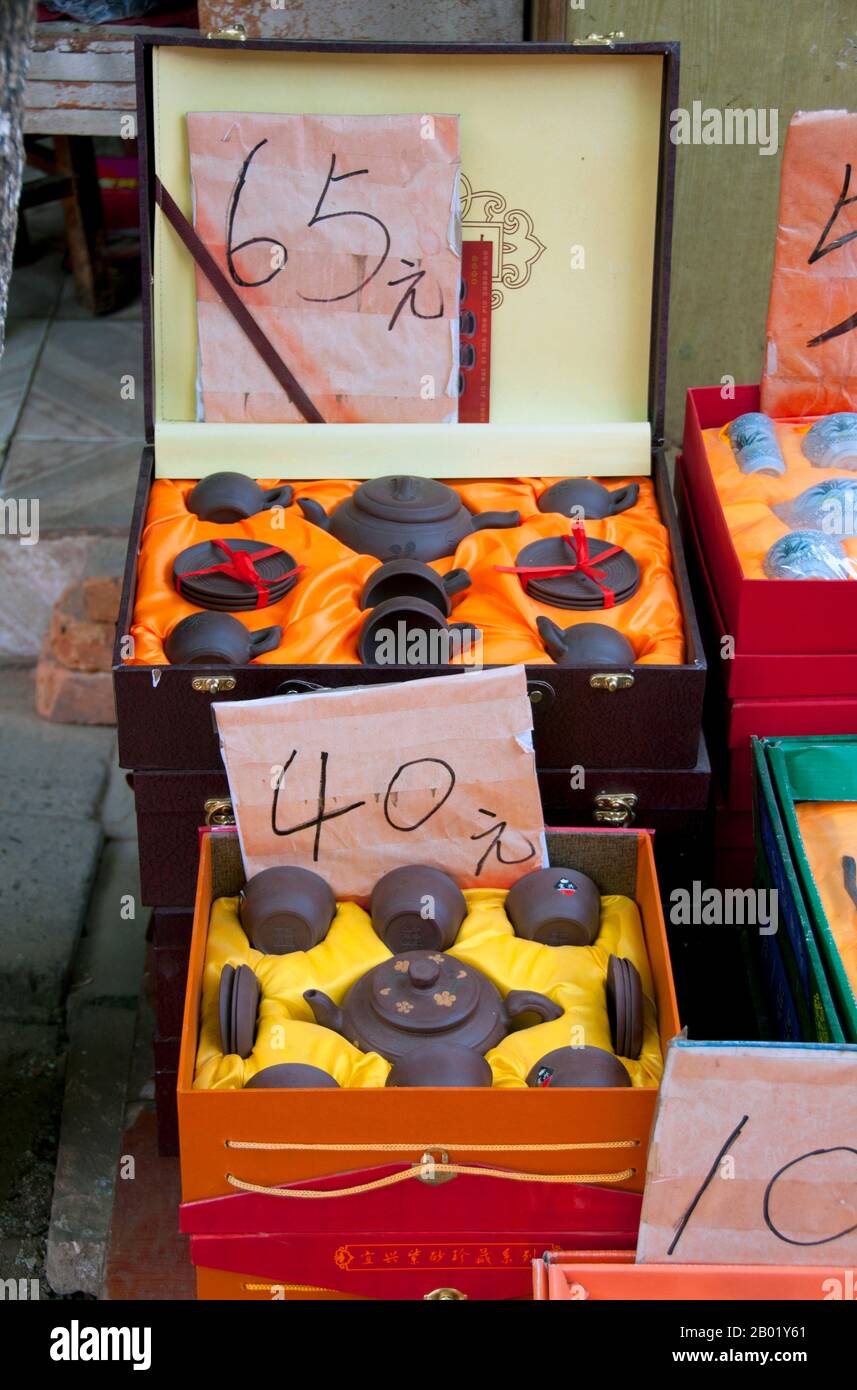 According to oral tradition, tea has been grown in China for more than four millennia. The earliest written accounts of tea making, however, date from around 350 AD, when it first became a drink at the imperial court. Around 800 AD tea seeds were taken to Japan, where regular cultivation was soon established. Just over five centuries later, in 1517, tea was first shipped to Europe by the Portuguese soon after they began their trade with China. In 1667 the Honourable East India Company ordered the first British shipment of tea from China, requesting of their agents ‘one hundred pounds weight o Stock Photohttps://www.alamy.com/image-license-details/?v=1https://www.alamy.com/according-to-oral-tradition-tea-has-been-grown-in-china-for-more-than-four-millennia-the-earliest-written-accounts-of-tea-making-however-date-from-around-350-ad-when-it-first-became-a-drink-at-the-imperial-court-around-800-ad-tea-seeds-were-taken-to-japan-where-regular-cultivation-was-soon-established-just-over-five-centuries-later-in-1517-tea-was-first-shipped-to-europe-by-the-portuguese-soon-after-they-began-their-trade-with-china-in-1667-the-honourable-east-india-company-ordered-the-first-british-shipment-of-tea-from-china-requesting-of-their-agents-one-hundred-pounds-weight-o-image344250649.html
According to oral tradition, tea has been grown in China for more than four millennia. The earliest written accounts of tea making, however, date from around 350 AD, when it first became a drink at the imperial court. Around 800 AD tea seeds were taken to Japan, where regular cultivation was soon established. Just over five centuries later, in 1517, tea was first shipped to Europe by the Portuguese soon after they began their trade with China. In 1667 the Honourable East India Company ordered the first British shipment of tea from China, requesting of their agents ‘one hundred pounds weight o Stock Photohttps://www.alamy.com/image-license-details/?v=1https://www.alamy.com/according-to-oral-tradition-tea-has-been-grown-in-china-for-more-than-four-millennia-the-earliest-written-accounts-of-tea-making-however-date-from-around-350-ad-when-it-first-became-a-drink-at-the-imperial-court-around-800-ad-tea-seeds-were-taken-to-japan-where-regular-cultivation-was-soon-established-just-over-five-centuries-later-in-1517-tea-was-first-shipped-to-europe-by-the-portuguese-soon-after-they-began-their-trade-with-china-in-1667-the-honourable-east-india-company-ordered-the-first-british-shipment-of-tea-from-china-requesting-of-their-agents-one-hundred-pounds-weight-o-image344250649.htmlRM2B01Y61–According to oral tradition, tea has been grown in China for more than four millennia. The earliest written accounts of tea making, however, date from around 350 AD, when it first became a drink at the imperial court. Around 800 AD tea seeds were taken to Japan, where regular cultivation was soon established. Just over five centuries later, in 1517, tea was first shipped to Europe by the Portuguese soon after they began their trade with China. In 1667 the Honourable East India Company ordered the first British shipment of tea from China, requesting of their agents ‘one hundred pounds weight o
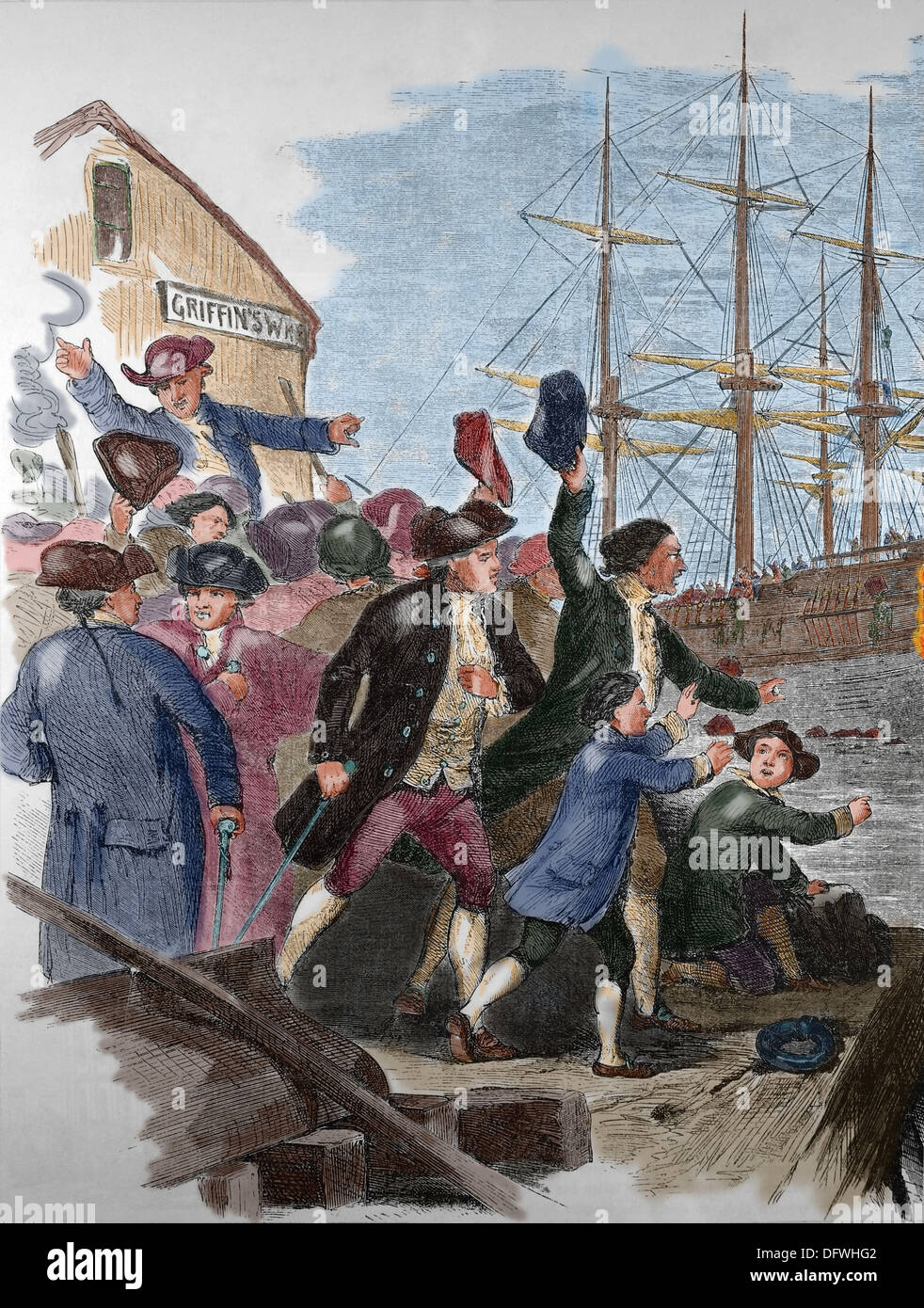 The Boston Tea Party. December 16, 1773. The destruction of Tea at Boston Harbor.Colored engraving. 19th century. Stock Photohttps://www.alamy.com/image-license-details/?v=1https://www.alamy.com/the-boston-tea-party-december-16-1773-the-destruction-of-tea-at-boston-image61413522.html
The Boston Tea Party. December 16, 1773. The destruction of Tea at Boston Harbor.Colored engraving. 19th century. Stock Photohttps://www.alamy.com/image-license-details/?v=1https://www.alamy.com/the-boston-tea-party-december-16-1773-the-destruction-of-tea-at-boston-image61413522.htmlRMDFWHG2–The Boston Tea Party. December 16, 1773. The destruction of Tea at Boston Harbor.Colored engraving. 19th century.
 According to oral tradition, tea has been grown in China for more than four millennia. The earliest written accounts of tea making, however, date from around 350 CE, when it first became a drink at the imperial court. Around 800 CE tea seeds were taken to Japan, where regular cultivation was soon established. Just over five centuries later, in 1517, tea was first shipped to Europe by the Portuguese soon after they began their trade with China. In 1667 the Honourable East India Company ordered the first British shipment of tea from China, requesting of their agents ‘one hundred pounds weight o Stock Photohttps://www.alamy.com/image-license-details/?v=1https://www.alamy.com/according-to-oral-tradition-tea-has-been-grown-in-china-for-more-than-four-millennia-the-earliest-written-accounts-of-tea-making-however-date-from-around-350-ce-when-it-first-became-a-drink-at-the-imperial-court-around-800-ce-tea-seeds-were-taken-to-japan-where-regular-cultivation-was-soon-established-just-over-five-centuries-later-in-1517-tea-was-first-shipped-to-europe-by-the-portuguese-soon-after-they-began-their-trade-with-china-in-1667-the-honourable-east-india-company-ordered-the-first-british-shipment-of-tea-from-china-requesting-of-their-agents-one-hundred-pounds-weight-o-image344263931.html
According to oral tradition, tea has been grown in China for more than four millennia. The earliest written accounts of tea making, however, date from around 350 CE, when it first became a drink at the imperial court. Around 800 CE tea seeds were taken to Japan, where regular cultivation was soon established. Just over five centuries later, in 1517, tea was first shipped to Europe by the Portuguese soon after they began their trade with China. In 1667 the Honourable East India Company ordered the first British shipment of tea from China, requesting of their agents ‘one hundred pounds weight o Stock Photohttps://www.alamy.com/image-license-details/?v=1https://www.alamy.com/according-to-oral-tradition-tea-has-been-grown-in-china-for-more-than-four-millennia-the-earliest-written-accounts-of-tea-making-however-date-from-around-350-ce-when-it-first-became-a-drink-at-the-imperial-court-around-800-ce-tea-seeds-were-taken-to-japan-where-regular-cultivation-was-soon-established-just-over-five-centuries-later-in-1517-tea-was-first-shipped-to-europe-by-the-portuguese-soon-after-they-began-their-trade-with-china-in-1667-the-honourable-east-india-company-ordered-the-first-british-shipment-of-tea-from-china-requesting-of-their-agents-one-hundred-pounds-weight-o-image344263931.htmlRM2B02G4B–According to oral tradition, tea has been grown in China for more than four millennia. The earliest written accounts of tea making, however, date from around 350 CE, when it first became a drink at the imperial court. Around 800 CE tea seeds were taken to Japan, where regular cultivation was soon established. Just over five centuries later, in 1517, tea was first shipped to Europe by the Portuguese soon after they began their trade with China. In 1667 the Honourable East India Company ordered the first British shipment of tea from China, requesting of their agents ‘one hundred pounds weight o
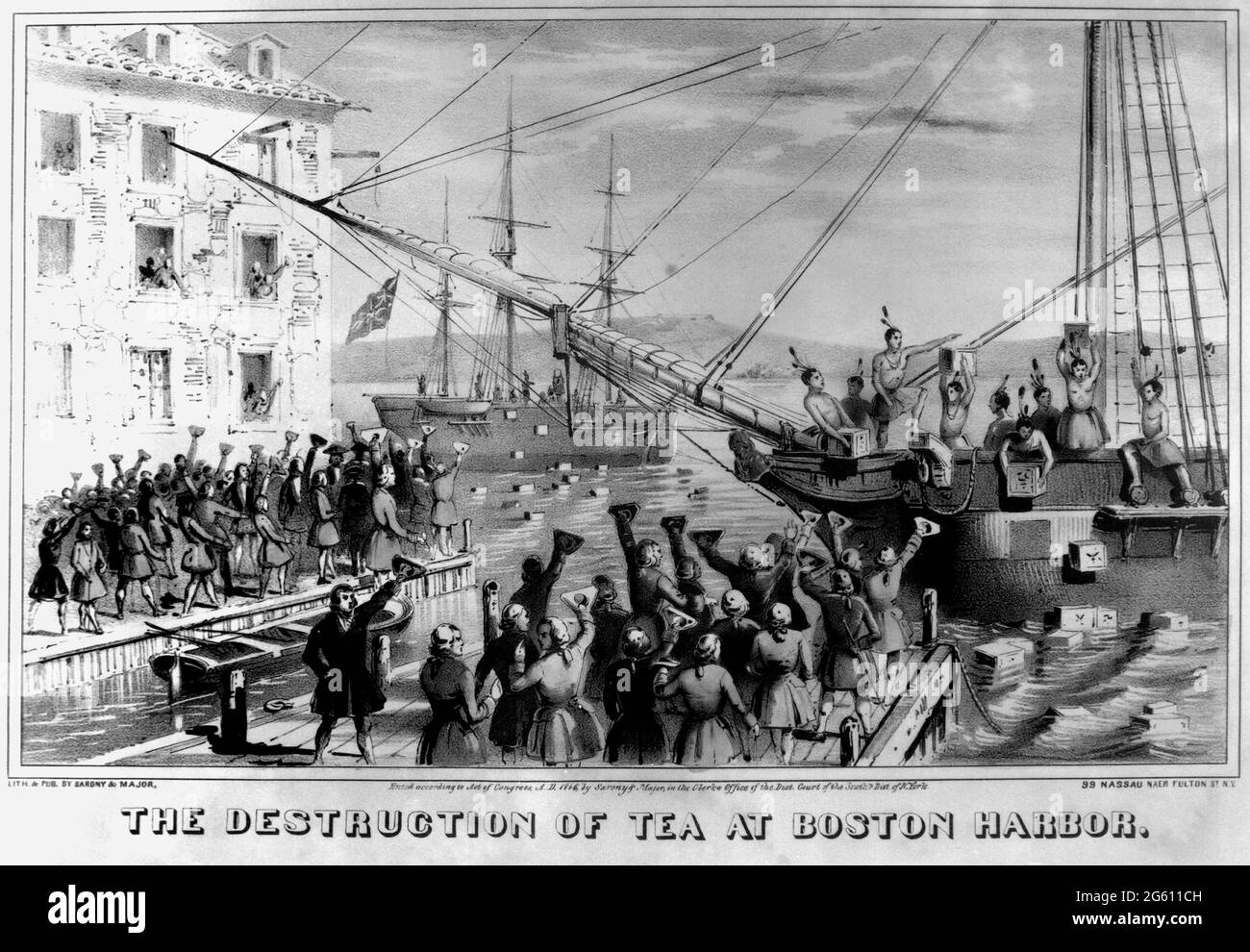 BOSTON, MASSACHUSETTS, USA - 16 December 1773 - Etching of citizens destroying tea by the Sons of Liberty in Boston Harbor in 1773 in protest at the 1 Stock Photohttps://www.alamy.com/image-license-details/?v=1https://www.alamy.com/boston-massachusetts-usa-16-december-1773-etching-of-citizens-destroying-tea-by-the-sons-of-liberty-in-boston-harbor-in-1773-in-protest-at-the-1-image433970225.html
BOSTON, MASSACHUSETTS, USA - 16 December 1773 - Etching of citizens destroying tea by the Sons of Liberty in Boston Harbor in 1773 in protest at the 1 Stock Photohttps://www.alamy.com/image-license-details/?v=1https://www.alamy.com/boston-massachusetts-usa-16-december-1773-etching-of-citizens-destroying-tea-by-the-sons-of-liberty-in-boston-harbor-in-1773-in-protest-at-the-1-image433970225.htmlRM2G611CH–BOSTON, MASSACHUSETTS, USA - 16 December 1773 - Etching of citizens destroying tea by the Sons of Liberty in Boston Harbor in 1773 in protest at the 1
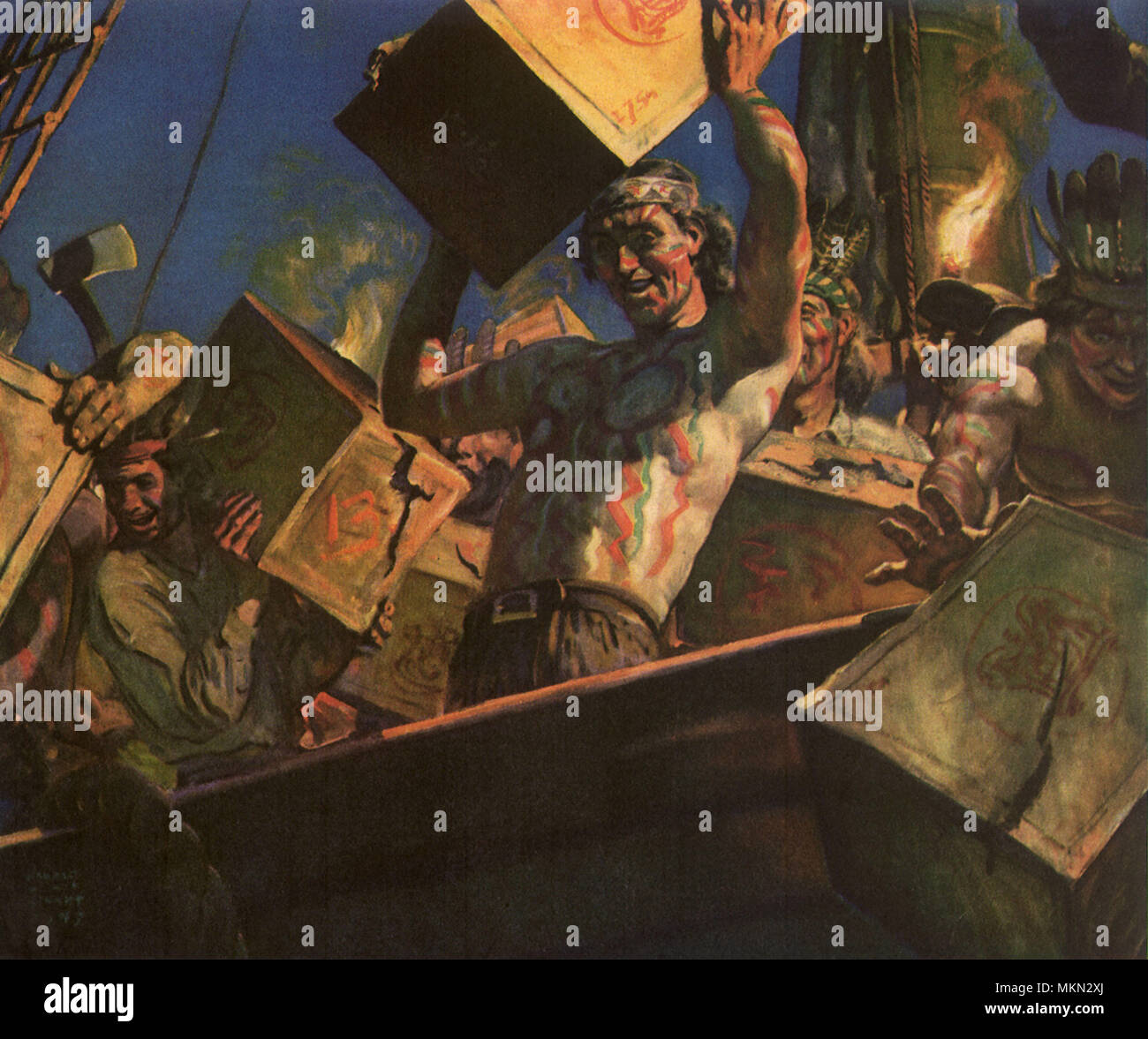 Colonists Brew Trouble Stock Photohttps://www.alamy.com/image-license-details/?v=1https://www.alamy.com/colonists-brew-trouble-image184245450.html
Colonists Brew Trouble Stock Photohttps://www.alamy.com/image-license-details/?v=1https://www.alamy.com/colonists-brew-trouble-image184245450.htmlRMMKN2XJ–Colonists Brew Trouble
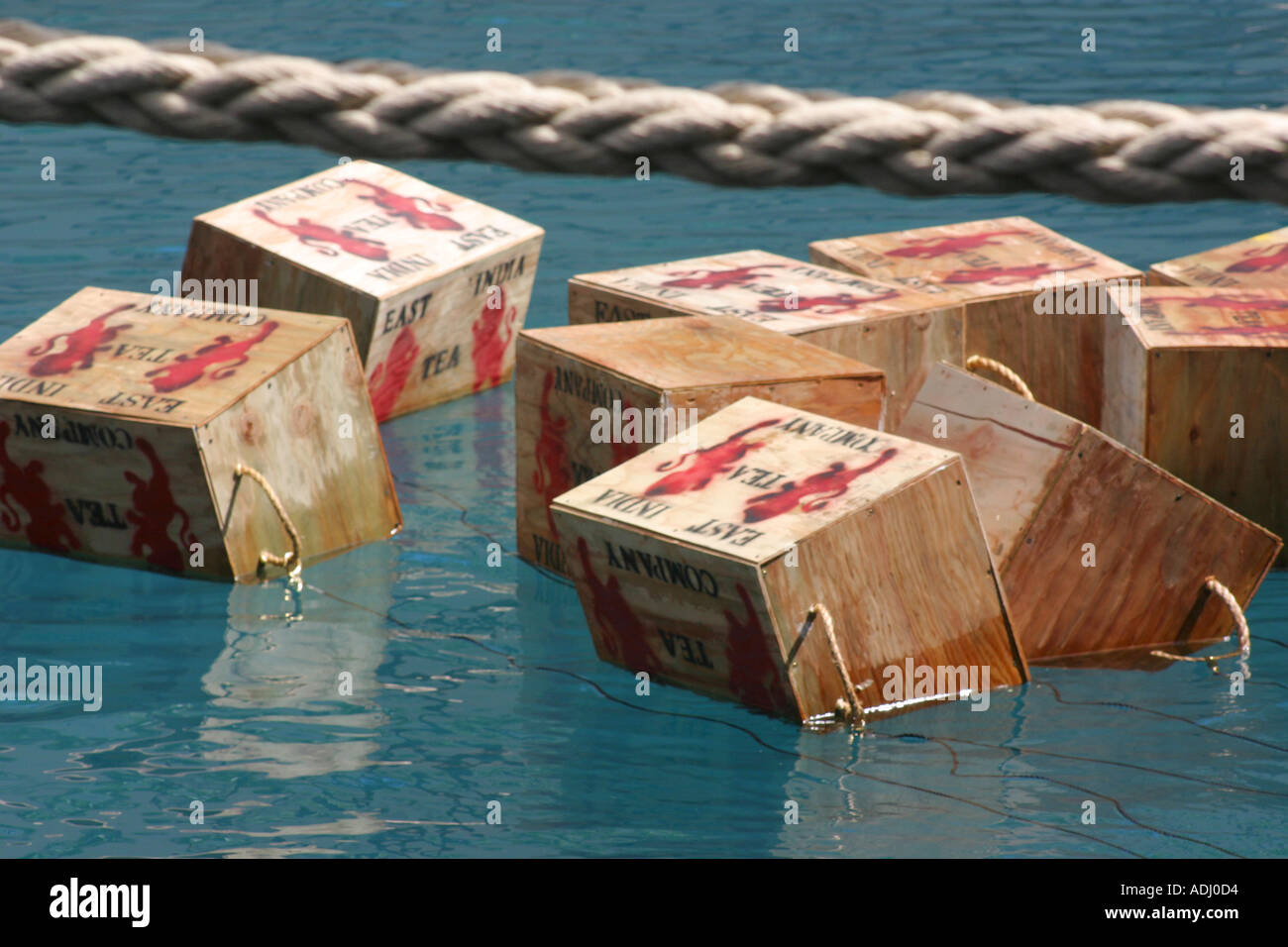 Boxes of tea floating in harbor during a Boston Tea Party reenactment Stock Photohttps://www.alamy.com/image-license-details/?v=1https://www.alamy.com/boxes-of-tea-floating-in-harbor-during-a-boston-tea-party-reenactment-image2482387.html
Boxes of tea floating in harbor during a Boston Tea Party reenactment Stock Photohttps://www.alamy.com/image-license-details/?v=1https://www.alamy.com/boxes-of-tea-floating-in-harbor-during-a-boston-tea-party-reenactment-image2482387.htmlRMADJ0D4–Boxes of tea floating in harbor during a Boston Tea Party reenactment
 'Boston Tea Party' reenactment of throwing tea chest into the sea in Boston Harbour ,USA 1773 Stock Photohttps://www.alamy.com/image-license-details/?v=1https://www.alamy.com/stock-photo-boston-tea-party-reenactment-of-throwing-tea-chest-into-the-sea-in-15329584.html
'Boston Tea Party' reenactment of throwing tea chest into the sea in Boston Harbour ,USA 1773 Stock Photohttps://www.alamy.com/image-license-details/?v=1https://www.alamy.com/stock-photo-boston-tea-party-reenactment-of-throwing-tea-chest-into-the-sea-in-15329584.htmlRMAMT2CH–'Boston Tea Party' reenactment of throwing tea chest into the sea in Boston Harbour ,USA 1773
 The Boston Tea Party. 16 December 1773. American Leaders and Heroes, 1905. Later colouration. Stock Photohttps://www.alamy.com/image-license-details/?v=1https://www.alamy.com/stock-photo-the-boston-tea-party-16-december-1773-american-leaders-and-heroes-70639213.html
The Boston Tea Party. 16 December 1773. American Leaders and Heroes, 1905. Later colouration. Stock Photohttps://www.alamy.com/image-license-details/?v=1https://www.alamy.com/stock-photo-the-boston-tea-party-16-december-1773-american-leaders-and-heroes-70639213.htmlRME2WW11–The Boston Tea Party. 16 December 1773. American Leaders and Heroes, 1905. Later colouration.
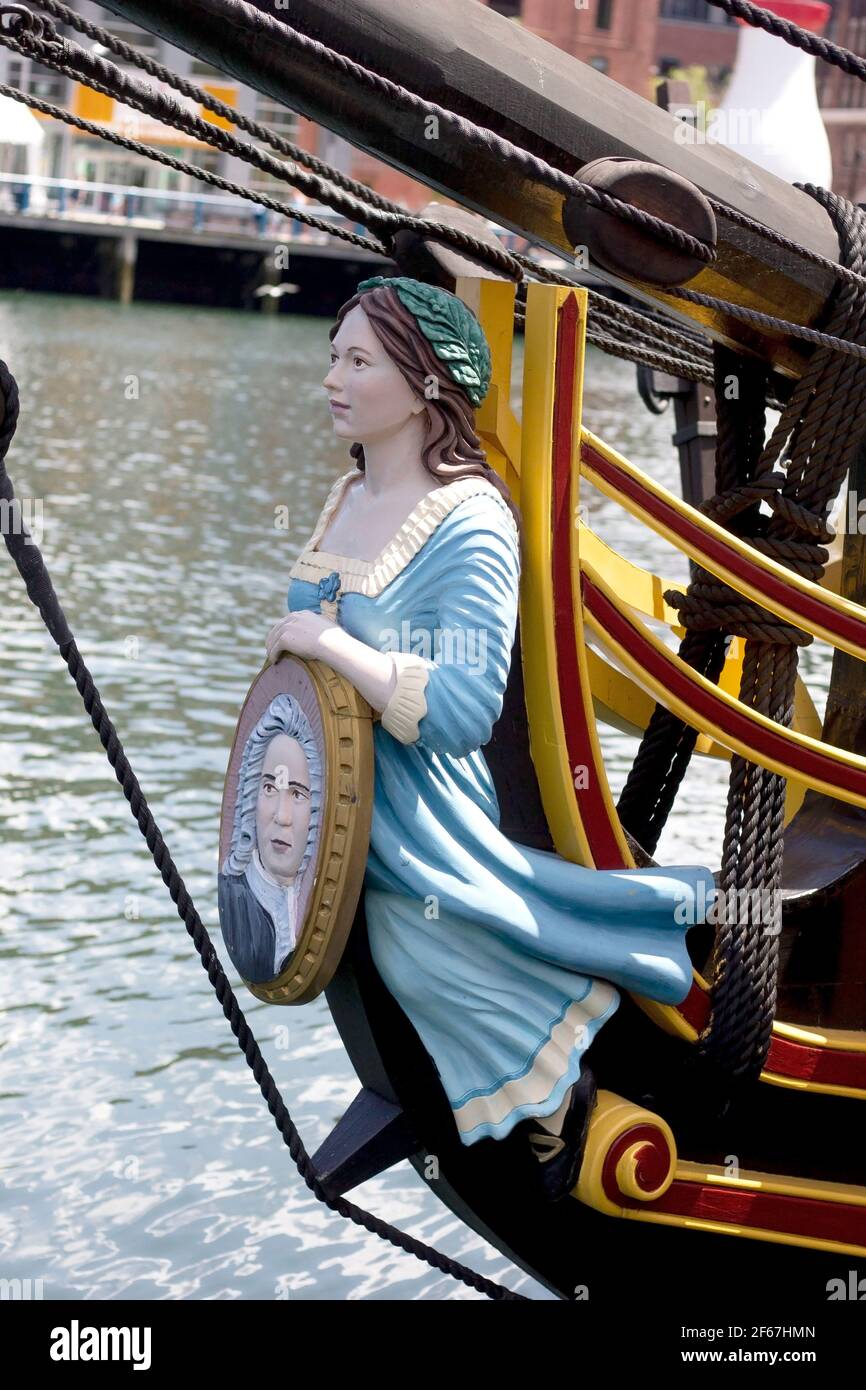 Replica of the Eleanor, a merchant ship from the Boston Tea Party found at the museum Stock Photohttps://www.alamy.com/image-license-details/?v=1https://www.alamy.com/replica-of-the-eleanor-a-merchant-ship-from-the-boston-tea-party-found-at-the-museum-image416904341.html
Replica of the Eleanor, a merchant ship from the Boston Tea Party found at the museum Stock Photohttps://www.alamy.com/image-license-details/?v=1https://www.alamy.com/replica-of-the-eleanor-a-merchant-ship-from-the-boston-tea-party-found-at-the-museum-image416904341.htmlRF2F67HMN–Replica of the Eleanor, a merchant ship from the Boston Tea Party found at the museum
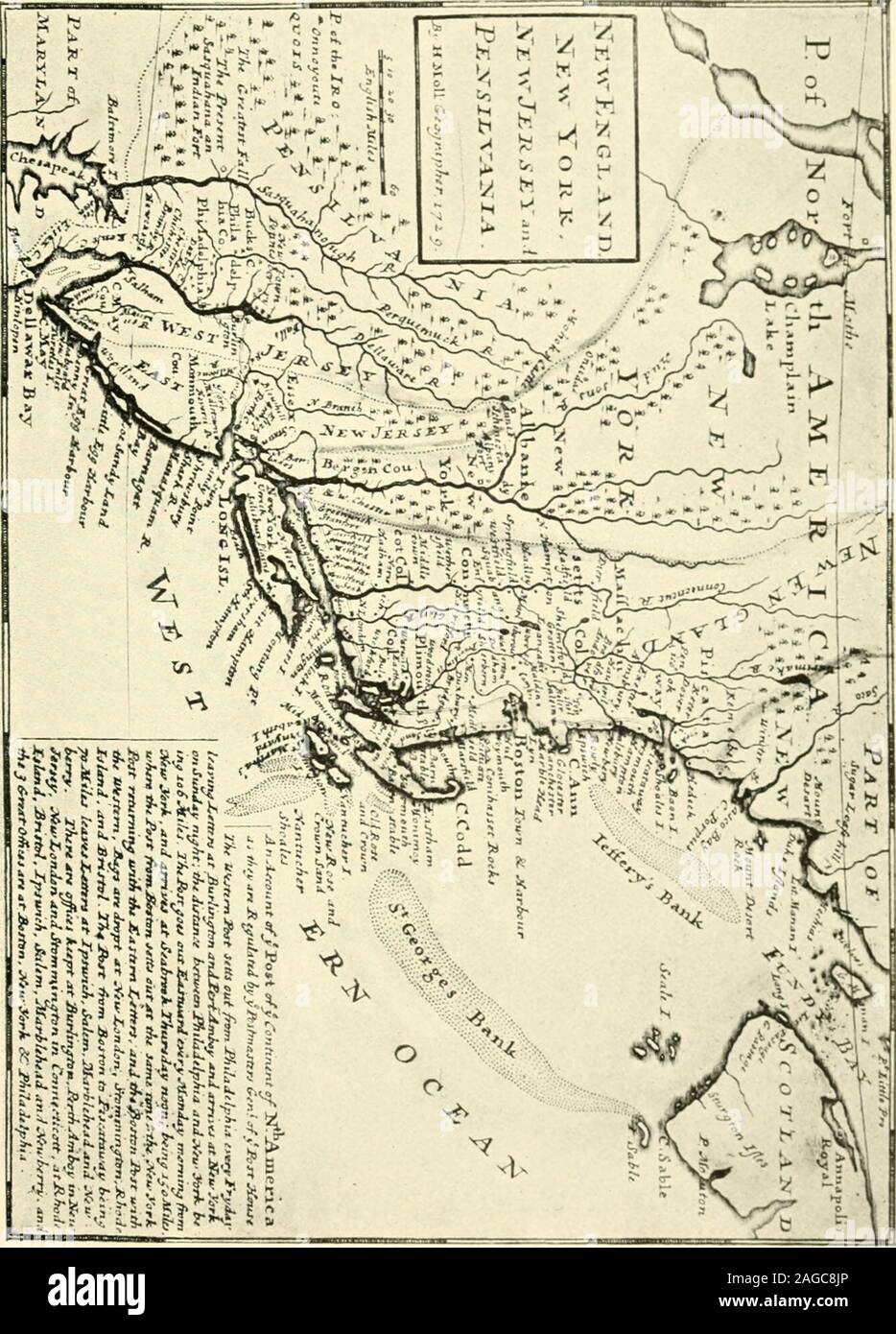 . A history of Pennsylvania. ce, justice, modesty,bravery, humanity, and magnanimity. ^ The Tea Tax. — Again the remonstrances and the non-importation agreements had their effects. The Englishtook off all taxes except that upon tea (1770). This conces-sion induced New York to break the non-importation agree-ment, much to the disgust of the Philadelphia merchants.Importations after this were generally resumed except inthe case of tea, which was smuggled in considerable quan-tities from Holland. This condition of affairs continueduntil 1773. The British East India Company, one of the greatest co Stock Photohttps://www.alamy.com/image-license-details/?v=1https://www.alamy.com/a-history-of-pennsylvania-ce-justice-modestybravery-humanity-and-magnanimity-the-tea-tax-again-the-remonstrances-and-the-non-importation-agreements-had-their-effects-the-englishtook-off-all-taxes-except-that-upon-tea-1770-this-conces-sion-induced-new-york-to-break-the-non-importation-agree-ment-much-to-the-disgust-of-the-philadelphia-merchantsimportations-after-this-were-generally-resumed-except-inthe-case-of-tea-which-was-smuggled-in-considerable-quan-tities-from-holland-this-condition-of-affairs-continueduntil-1773-the-british-east-india-company-one-of-the-greatest-co-image337101710.html
. A history of Pennsylvania. ce, justice, modesty,bravery, humanity, and magnanimity. ^ The Tea Tax. — Again the remonstrances and the non-importation agreements had their effects. The Englishtook off all taxes except that upon tea (1770). This conces-sion induced New York to break the non-importation agree-ment, much to the disgust of the Philadelphia merchants.Importations after this were generally resumed except inthe case of tea, which was smuggled in considerable quan-tities from Holland. This condition of affairs continueduntil 1773. The British East India Company, one of the greatest co Stock Photohttps://www.alamy.com/image-license-details/?v=1https://www.alamy.com/a-history-of-pennsylvania-ce-justice-modestybravery-humanity-and-magnanimity-the-tea-tax-again-the-remonstrances-and-the-non-importation-agreements-had-their-effects-the-englishtook-off-all-taxes-except-that-upon-tea-1770-this-conces-sion-induced-new-york-to-break-the-non-importation-agree-ment-much-to-the-disgust-of-the-philadelphia-merchantsimportations-after-this-were-generally-resumed-except-inthe-case-of-tea-which-was-smuggled-in-considerable-quan-tities-from-holland-this-condition-of-affairs-continueduntil-1773-the-british-east-india-company-one-of-the-greatest-co-image337101710.htmlRM2AGC8JP–. A history of Pennsylvania. ce, justice, modesty,bravery, humanity, and magnanimity. ^ The Tea Tax. — Again the remonstrances and the non-importation agreements had their effects. The Englishtook off all taxes except that upon tea (1770). This conces-sion induced New York to break the non-importation agree-ment, much to the disgust of the Philadelphia merchants.Importations after this were generally resumed except inthe case of tea, which was smuggled in considerable quan-tities from Holland. This condition of affairs continueduntil 1773. The British East India Company, one of the greatest co
 spice warehouse Stock Photohttps://www.alamy.com/image-license-details/?v=1https://www.alamy.com/stock-photo-spice-warehouse-29566455.html
spice warehouse Stock Photohttps://www.alamy.com/image-license-details/?v=1https://www.alamy.com/stock-photo-spice-warehouse-29566455.htmlRMBM2T8R–spice warehouse
 The Cutty Sark, a Briitish Merchant Navy Ship at Greenwich National Maritime Museum in London Stock Photohttps://www.alamy.com/image-license-details/?v=1https://www.alamy.com/stock-photo-the-cutty-sark-a-briitish-merchant-navy-ship-at-greenwich-national-55759468.html
The Cutty Sark, a Briitish Merchant Navy Ship at Greenwich National Maritime Museum in London Stock Photohttps://www.alamy.com/image-license-details/?v=1https://www.alamy.com/stock-photo-the-cutty-sark-a-briitish-merchant-navy-ship-at-greenwich-national-55759468.htmlRMD6M1NG–The Cutty Sark, a Briitish Merchant Navy Ship at Greenwich National Maritime Museum in London
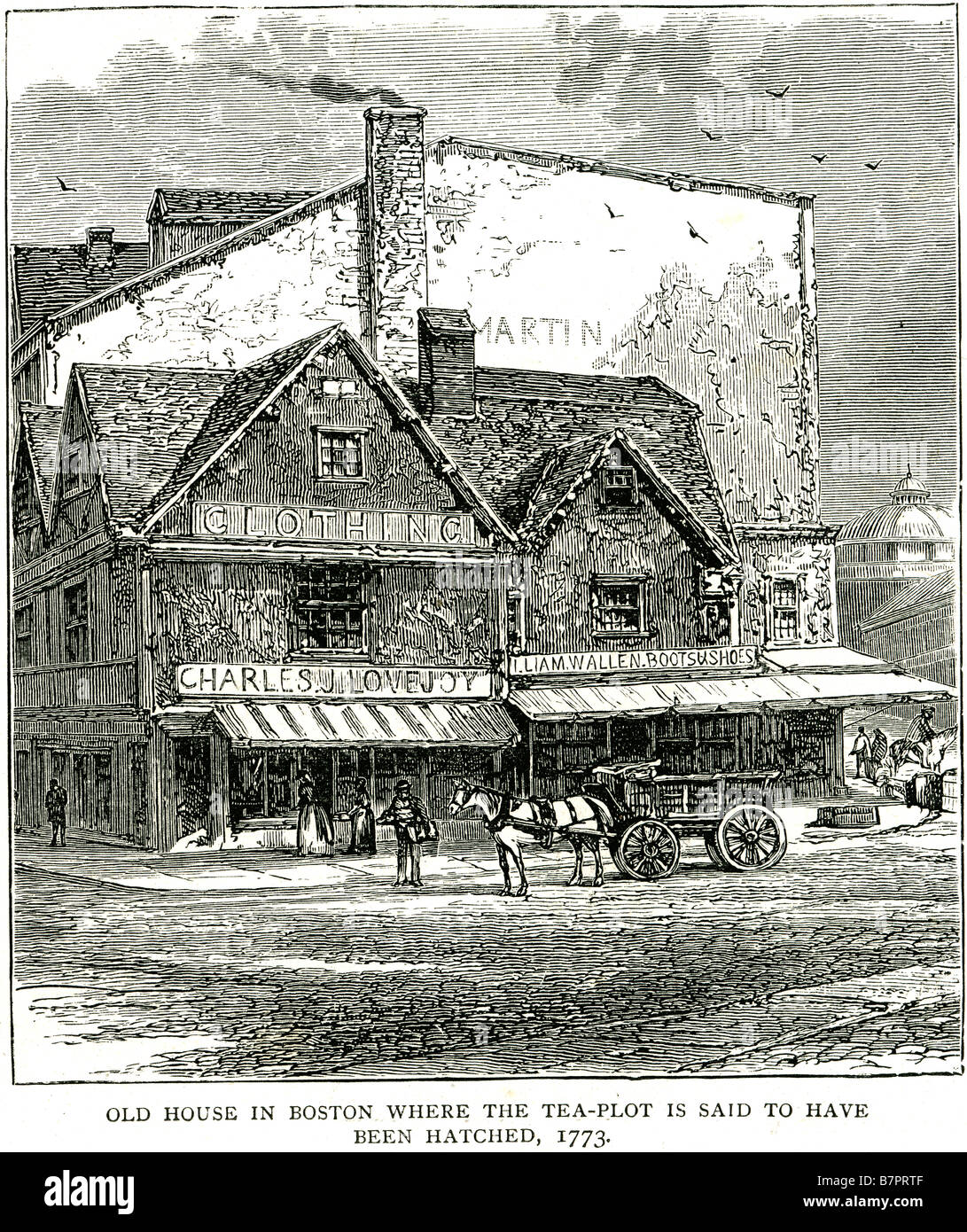 Old House Boston Tea Plot Hatched 1773 America horse cart The Boston Tea Party was an act of direct action protest by the Americ Stock Photohttps://www.alamy.com/image-license-details/?v=1https://www.alamy.com/stock-photo-old-house-boston-tea-plot-hatched-1773-america-horse-cart-the-boston-22014623.html
Old House Boston Tea Plot Hatched 1773 America horse cart The Boston Tea Party was an act of direct action protest by the Americ Stock Photohttps://www.alamy.com/image-license-details/?v=1https://www.alamy.com/stock-photo-old-house-boston-tea-plot-hatched-1773-america-horse-cart-the-boston-22014623.htmlRMB7PRTF–Old House Boston Tea Plot Hatched 1773 America horse cart The Boston Tea Party was an act of direct action protest by the Americ
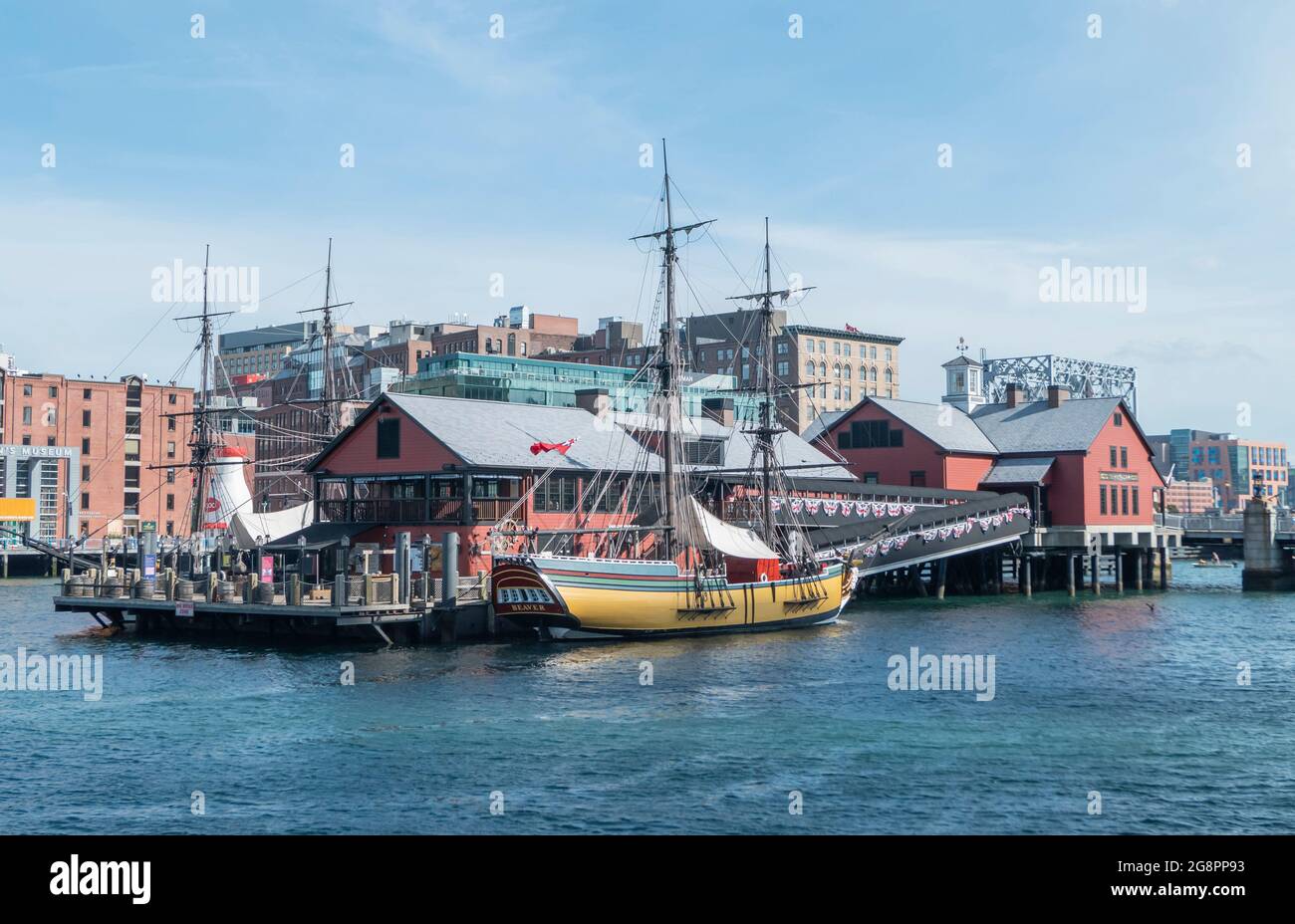 Boston Tea Party Museum Stock Photohttps://www.alamy.com/image-license-details/?v=1https://www.alamy.com/boston-tea-party-museum-image435676895.html
Boston Tea Party Museum Stock Photohttps://www.alamy.com/image-license-details/?v=1https://www.alamy.com/boston-tea-party-museum-image435676895.htmlRM2G8PP93–Boston Tea Party Museum
 GREENWICH, UK - The Cutty Sark is a restored historic British clipper sailing ship that is now open as a tourist attraction in Greenwich, London. It was built in 1869 and in active service until 1895. In its heyday as a trader vessel, it was known as the fastest ship of its time. It was notable for its participation in the tea trade between Asia and Europe. When the opening of the Suez Canal created the opportunity for shorter and faster trips made by steam ships, the Cutty Sark was used to transport wool from Australia to Britain. The historic Cutty Sark, a British clipper ship and one of the Stock Photohttps://www.alamy.com/image-license-details/?v=1https://www.alamy.com/greenwich-uk-the-cutty-sark-is-a-restored-historic-british-clipper-sailing-ship-that-is-now-open-as-a-tourist-attraction-in-greenwich-london-it-was-built-in-1869-and-in-active-service-until-1895-in-its-heyday-as-a-trader-vessel-it-was-known-as-the-fastest-ship-of-its-time-it-was-notable-for-its-participation-in-the-tea-trade-between-asia-and-europe-when-the-opening-of-the-suez-canal-created-the-opportunity-for-shorter-and-faster-trips-made-by-steam-ships-the-cutty-sark-was-used-to-transport-wool-from-australia-to-britain-the-historic-cutty-sark-a-british-clipper-ship-and-one-of-the-image233162629.html
GREENWICH, UK - The Cutty Sark is a restored historic British clipper sailing ship that is now open as a tourist attraction in Greenwich, London. It was built in 1869 and in active service until 1895. In its heyday as a trader vessel, it was known as the fastest ship of its time. It was notable for its participation in the tea trade between Asia and Europe. When the opening of the Suez Canal created the opportunity for shorter and faster trips made by steam ships, the Cutty Sark was used to transport wool from Australia to Britain. The historic Cutty Sark, a British clipper ship and one of the Stock Photohttps://www.alamy.com/image-license-details/?v=1https://www.alamy.com/greenwich-uk-the-cutty-sark-is-a-restored-historic-british-clipper-sailing-ship-that-is-now-open-as-a-tourist-attraction-in-greenwich-london-it-was-built-in-1869-and-in-active-service-until-1895-in-its-heyday-as-a-trader-vessel-it-was-known-as-the-fastest-ship-of-its-time-it-was-notable-for-its-participation-in-the-tea-trade-between-asia-and-europe-when-the-opening-of-the-suez-canal-created-the-opportunity-for-shorter-and-faster-trips-made-by-steam-ships-the-cutty-sark-was-used-to-transport-wool-from-australia-to-britain-the-historic-cutty-sark-a-british-clipper-ship-and-one-of-the-image233162629.htmlRMRF9D8N–GREENWICH, UK - The Cutty Sark is a restored historic British clipper sailing ship that is now open as a tourist attraction in Greenwich, London. It was built in 1869 and in active service until 1895. In its heyday as a trader vessel, it was known as the fastest ship of its time. It was notable for its participation in the tea trade between Asia and Europe. When the opening of the Suez Canal created the opportunity for shorter and faster trips made by steam ships, the Cutty Sark was used to transport wool from Australia to Britain. The historic Cutty Sark, a British clipper ship and one of the
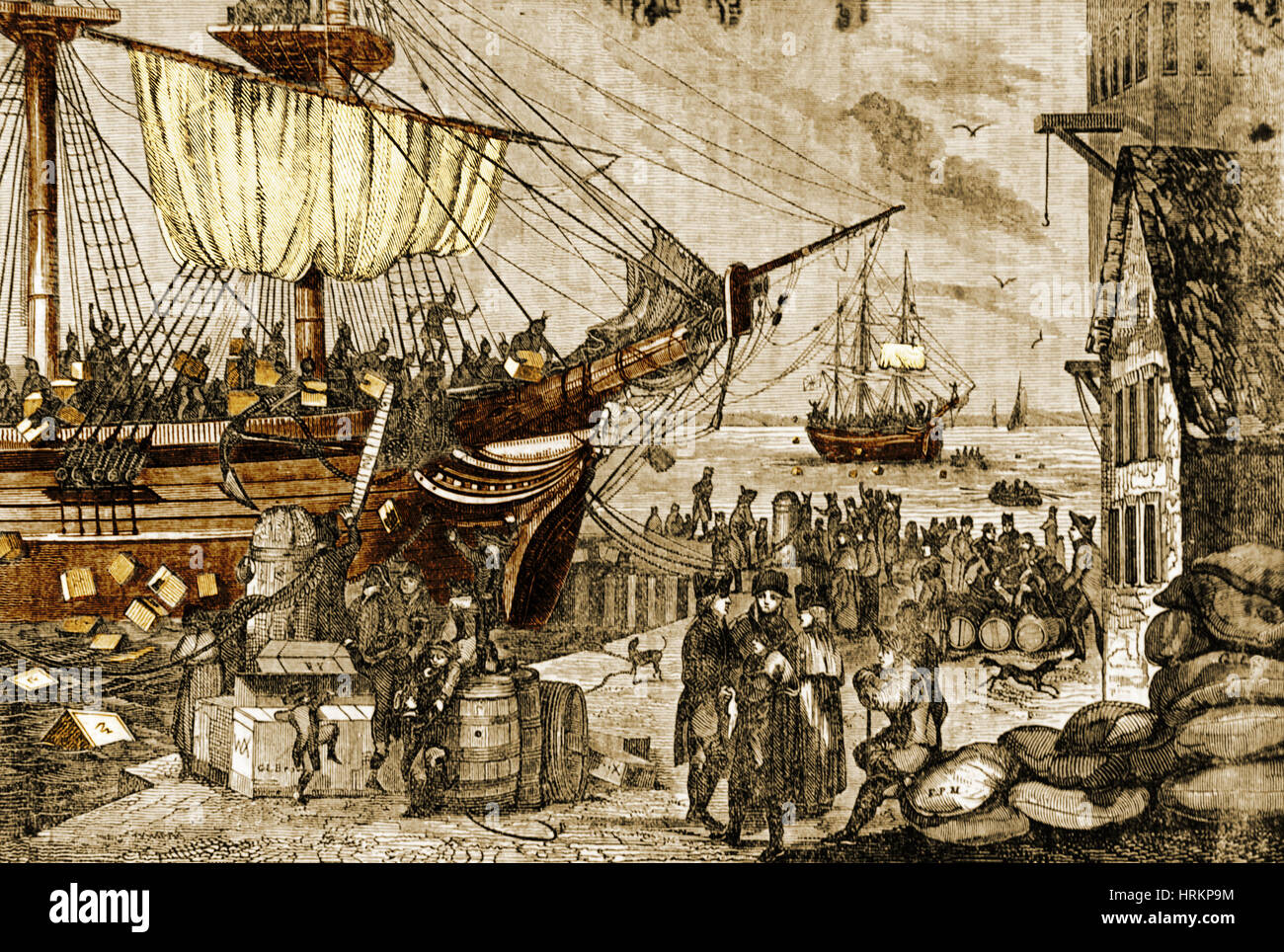 Boston Tea Party, 1773 Stock Photohttps://www.alamy.com/image-license-details/?v=1https://www.alamy.com/stock-photo-boston-tea-party-1773-135044272.html
Boston Tea Party, 1773 Stock Photohttps://www.alamy.com/image-license-details/?v=1https://www.alamy.com/stock-photo-boston-tea-party-1773-135044272.htmlRMHRKP9M–Boston Tea Party, 1773
 Photographs in Calcutta, India by Captain William George Stretton from 1875-1880. Stock Photohttps://www.alamy.com/image-license-details/?v=1https://www.alamy.com/photographs-in-calcutta-india-by-captain-william-george-stretton-from-1875-1880-image556177041.html
Photographs in Calcutta, India by Captain William George Stretton from 1875-1880. Stock Photohttps://www.alamy.com/image-license-details/?v=1https://www.alamy.com/photographs-in-calcutta-india-by-captain-william-george-stretton-from-1875-1880-image556177041.htmlRM2R8T1DN–Photographs in Calcutta, India by Captain William George Stretton from 1875-1880.
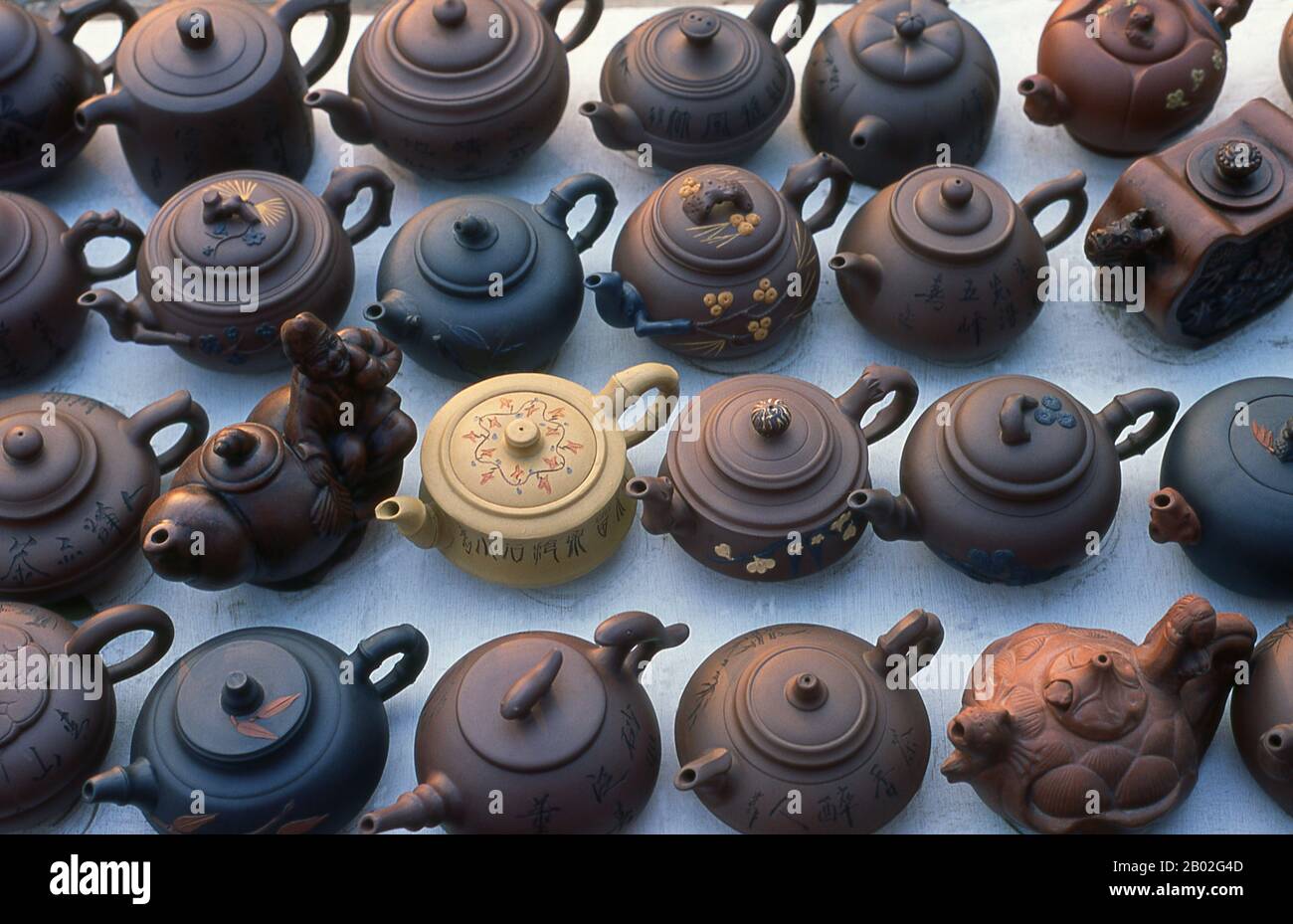 According to oral tradition, tea has been grown in China for more than four millennia. The earliest written accounts of tea making, however, date from around 350 CE, when it first became a drink at the imperial court. Around 800 CE tea seeds were taken to Japan, where regular cultivation was soon established. Just over five centuries later, in 1517, tea was first shipped to Europe by the Portuguese soon after they began their trade with China. In 1667 the Honourable East India Company ordered the first British shipment of tea from China, requesting of their agents ‘one hundred pounds weight o Stock Photohttps://www.alamy.com/image-license-details/?v=1https://www.alamy.com/according-to-oral-tradition-tea-has-been-grown-in-china-for-more-than-four-millennia-the-earliest-written-accounts-of-tea-making-however-date-from-around-350-ce-when-it-first-became-a-drink-at-the-imperial-court-around-800-ce-tea-seeds-were-taken-to-japan-where-regular-cultivation-was-soon-established-just-over-five-centuries-later-in-1517-tea-was-first-shipped-to-europe-by-the-portuguese-soon-after-they-began-their-trade-with-china-in-1667-the-honourable-east-india-company-ordered-the-first-british-shipment-of-tea-from-china-requesting-of-their-agents-one-hundred-pounds-weight-o-image344263933.html
According to oral tradition, tea has been grown in China for more than four millennia. The earliest written accounts of tea making, however, date from around 350 CE, when it first became a drink at the imperial court. Around 800 CE tea seeds were taken to Japan, where regular cultivation was soon established. Just over five centuries later, in 1517, tea was first shipped to Europe by the Portuguese soon after they began their trade with China. In 1667 the Honourable East India Company ordered the first British shipment of tea from China, requesting of their agents ‘one hundred pounds weight o Stock Photohttps://www.alamy.com/image-license-details/?v=1https://www.alamy.com/according-to-oral-tradition-tea-has-been-grown-in-china-for-more-than-four-millennia-the-earliest-written-accounts-of-tea-making-however-date-from-around-350-ce-when-it-first-became-a-drink-at-the-imperial-court-around-800-ce-tea-seeds-were-taken-to-japan-where-regular-cultivation-was-soon-established-just-over-five-centuries-later-in-1517-tea-was-first-shipped-to-europe-by-the-portuguese-soon-after-they-began-their-trade-with-china-in-1667-the-honourable-east-india-company-ordered-the-first-british-shipment-of-tea-from-china-requesting-of-their-agents-one-hundred-pounds-weight-o-image344263933.htmlRM2B02G4D–According to oral tradition, tea has been grown in China for more than four millennia. The earliest written accounts of tea making, however, date from around 350 CE, when it first became a drink at the imperial court. Around 800 CE tea seeds were taken to Japan, where regular cultivation was soon established. Just over five centuries later, in 1517, tea was first shipped to Europe by the Portuguese soon after they began their trade with China. In 1667 the Honourable East India Company ordered the first British shipment of tea from China, requesting of their agents ‘one hundred pounds weight o
 Taiwan: A display of tea in the Chutung (Zhudong) Sunday Market, Hsinchu County. According to oral tradition, tea has been grown in China for more than four millennia. The earliest written accounts of tea making, however, date from around 350 CE, when it first became a drink at the imperial court. Around 800 CE tea seeds were taken to Japan, where regular cultivation was soon established. Just over five centuries later, in 1517, tea was first shipped to Europe by the Portuguese soon after they began their trade with China. In 1667 the East India Company ordered the first British shipment. Stock Photohttps://www.alamy.com/image-license-details/?v=1https://www.alamy.com/taiwan-a-display-of-tea-in-the-chutung-zhudong-sunday-market-hsinchu-county-according-to-oral-tradition-tea-has-been-grown-in-china-for-more-than-four-millennia-the-earliest-written-accounts-of-tea-making-however-date-from-around-350-ce-when-it-first-became-a-drink-at-the-imperial-court-around-800-ce-tea-seeds-were-taken-to-japan-where-regular-cultivation-was-soon-established-just-over-five-centuries-later-in-1517-tea-was-first-shipped-to-europe-by-the-portuguese-soon-after-they-began-their-trade-with-china-in-1667-the-east-india-company-ordered-the-first-british-shipment-image344251109.html
Taiwan: A display of tea in the Chutung (Zhudong) Sunday Market, Hsinchu County. According to oral tradition, tea has been grown in China for more than four millennia. The earliest written accounts of tea making, however, date from around 350 CE, when it first became a drink at the imperial court. Around 800 CE tea seeds were taken to Japan, where regular cultivation was soon established. Just over five centuries later, in 1517, tea was first shipped to Europe by the Portuguese soon after they began their trade with China. In 1667 the East India Company ordered the first British shipment. Stock Photohttps://www.alamy.com/image-license-details/?v=1https://www.alamy.com/taiwan-a-display-of-tea-in-the-chutung-zhudong-sunday-market-hsinchu-county-according-to-oral-tradition-tea-has-been-grown-in-china-for-more-than-four-millennia-the-earliest-written-accounts-of-tea-making-however-date-from-around-350-ce-when-it-first-became-a-drink-at-the-imperial-court-around-800-ce-tea-seeds-were-taken-to-japan-where-regular-cultivation-was-soon-established-just-over-five-centuries-later-in-1517-tea-was-first-shipped-to-europe-by-the-portuguese-soon-after-they-began-their-trade-with-china-in-1667-the-east-india-company-ordered-the-first-british-shipment-image344251109.htmlRM2B01YPD–Taiwan: A display of tea in the Chutung (Zhudong) Sunday Market, Hsinchu County. According to oral tradition, tea has been grown in China for more than four millennia. The earliest written accounts of tea making, however, date from around 350 CE, when it first became a drink at the imperial court. Around 800 CE tea seeds were taken to Japan, where regular cultivation was soon established. Just over five centuries later, in 1517, tea was first shipped to Europe by the Portuguese soon after they began their trade with China. In 1667 the East India Company ordered the first British shipment.
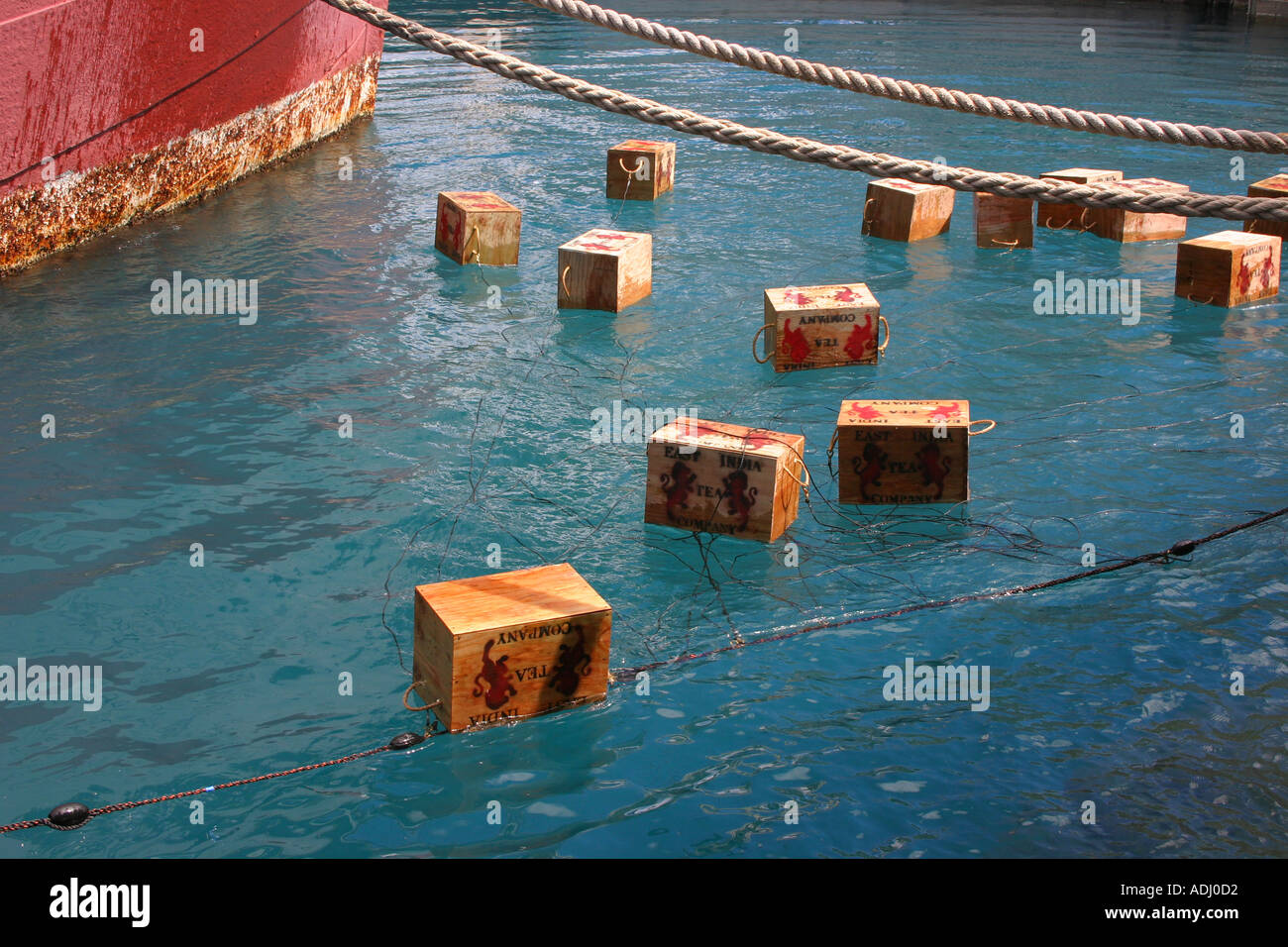 Boxes of tea floating in harbor during a Boston Tea Party reenactment Stock Photohttps://www.alamy.com/image-license-details/?v=1https://www.alamy.com/boxes-of-tea-floating-in-harbor-during-a-boston-tea-party-reenactment-image2482385.html
Boxes of tea floating in harbor during a Boston Tea Party reenactment Stock Photohttps://www.alamy.com/image-license-details/?v=1https://www.alamy.com/boxes-of-tea-floating-in-harbor-during-a-boston-tea-party-reenactment-image2482385.htmlRMADJ0D2–Boxes of tea floating in harbor during a Boston Tea Party reenactment
 Thailand: A selection of teas for sale, Charoen Krung Road, Chinatown, Bangkok. According to oral tradition, tea has been grown in China for more than four millennia. The earliest written accounts of tea making, however, date from around 350 CE, when it first became a drink at the imperial court. Around 800 CE tea seeds were taken to Japan, where regular cultivation was soon established. Just over five centuries later, in 1517, tea was first shipped to Europe by the Portuguese soon after they began their trade with China. In 1667 the East India Company ordered the first British shipment. Stock Photohttps://www.alamy.com/image-license-details/?v=1https://www.alamy.com/thailand-a-selection-of-teas-for-sale-charoen-krung-road-chinatown-bangkok-according-to-oral-tradition-tea-has-been-grown-in-china-for-more-than-four-millennia-the-earliest-written-accounts-of-tea-making-however-date-from-around-350-ce-when-it-first-became-a-drink-at-the-imperial-court-around-800-ce-tea-seeds-were-taken-to-japan-where-regular-cultivation-was-soon-established-just-over-five-centuries-later-in-1517-tea-was-first-shipped-to-europe-by-the-portuguese-soon-after-they-began-their-trade-with-china-in-1667-the-east-india-company-ordered-the-first-british-shipment-image344252129.html
Thailand: A selection of teas for sale, Charoen Krung Road, Chinatown, Bangkok. According to oral tradition, tea has been grown in China for more than four millennia. The earliest written accounts of tea making, however, date from around 350 CE, when it first became a drink at the imperial court. Around 800 CE tea seeds were taken to Japan, where regular cultivation was soon established. Just over five centuries later, in 1517, tea was first shipped to Europe by the Portuguese soon after they began their trade with China. In 1667 the East India Company ordered the first British shipment. Stock Photohttps://www.alamy.com/image-license-details/?v=1https://www.alamy.com/thailand-a-selection-of-teas-for-sale-charoen-krung-road-chinatown-bangkok-according-to-oral-tradition-tea-has-been-grown-in-china-for-more-than-four-millennia-the-earliest-written-accounts-of-tea-making-however-date-from-around-350-ce-when-it-first-became-a-drink-at-the-imperial-court-around-800-ce-tea-seeds-were-taken-to-japan-where-regular-cultivation-was-soon-established-just-over-five-centuries-later-in-1517-tea-was-first-shipped-to-europe-by-the-portuguese-soon-after-they-began-their-trade-with-china-in-1667-the-east-india-company-ordered-the-first-british-shipment-image344252129.htmlRM2B0212W–Thailand: A selection of teas for sale, Charoen Krung Road, Chinatown, Bangkok. According to oral tradition, tea has been grown in China for more than four millennia. The earliest written accounts of tea making, however, date from around 350 CE, when it first became a drink at the imperial court. Around 800 CE tea seeds were taken to Japan, where regular cultivation was soon established. Just over five centuries later, in 1517, tea was first shipped to Europe by the Portuguese soon after they began their trade with China. In 1667 the East India Company ordered the first British shipment.
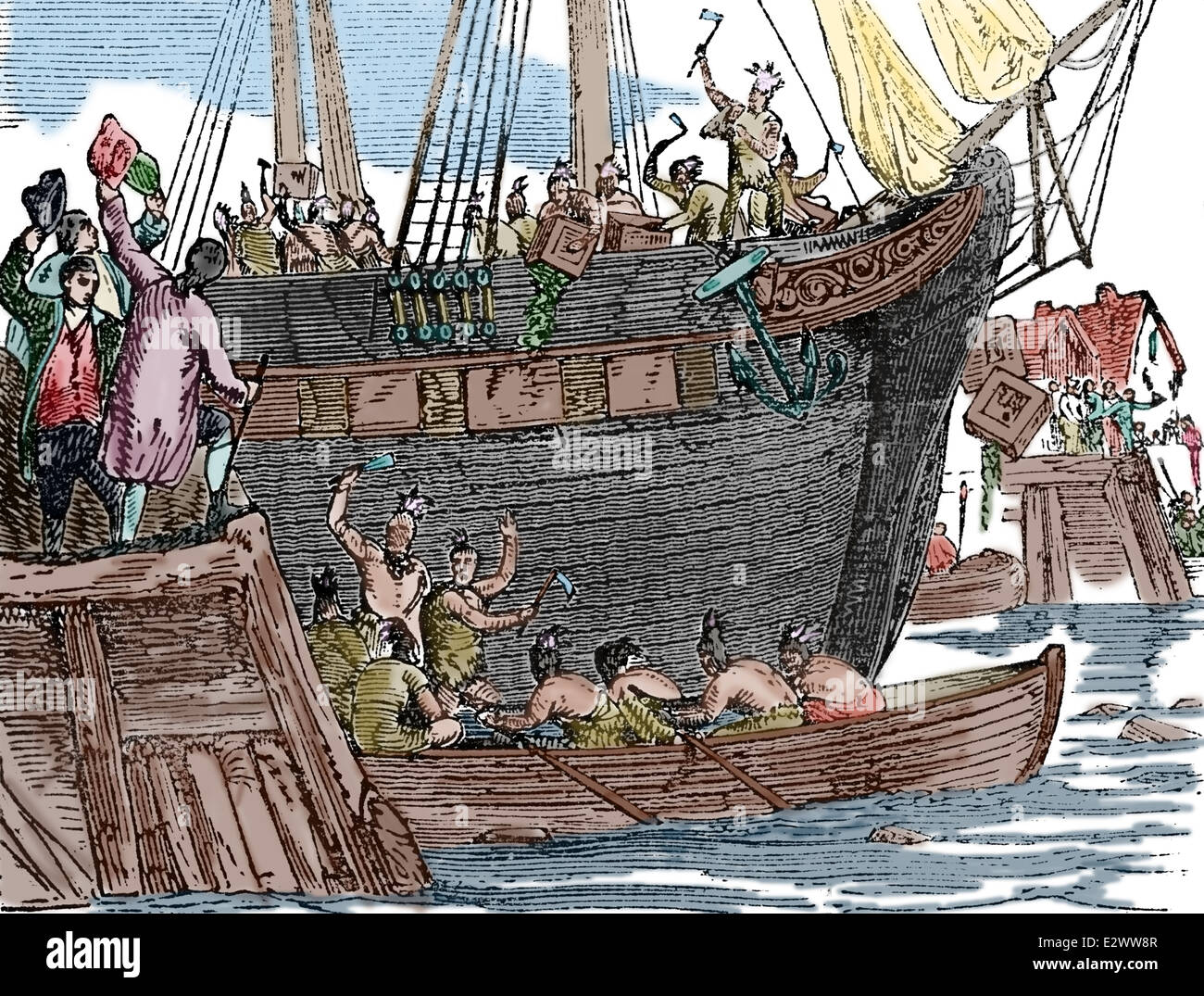 The Boston Tea Party. 16 December 1773. History of the United States for Schools, 19th century. Engraving. Later colouration. Stock Photohttps://www.alamy.com/image-license-details/?v=1https://www.alamy.com/stock-photo-the-boston-tea-party-16-december-1773-history-of-the-united-states-70639431.html
The Boston Tea Party. 16 December 1773. History of the United States for Schools, 19th century. Engraving. Later colouration. Stock Photohttps://www.alamy.com/image-license-details/?v=1https://www.alamy.com/stock-photo-the-boston-tea-party-16-december-1773-history-of-the-united-states-70639431.htmlRME2WW8R–The Boston Tea Party. 16 December 1773. History of the United States for Schools, 19th century. Engraving. Later colouration.
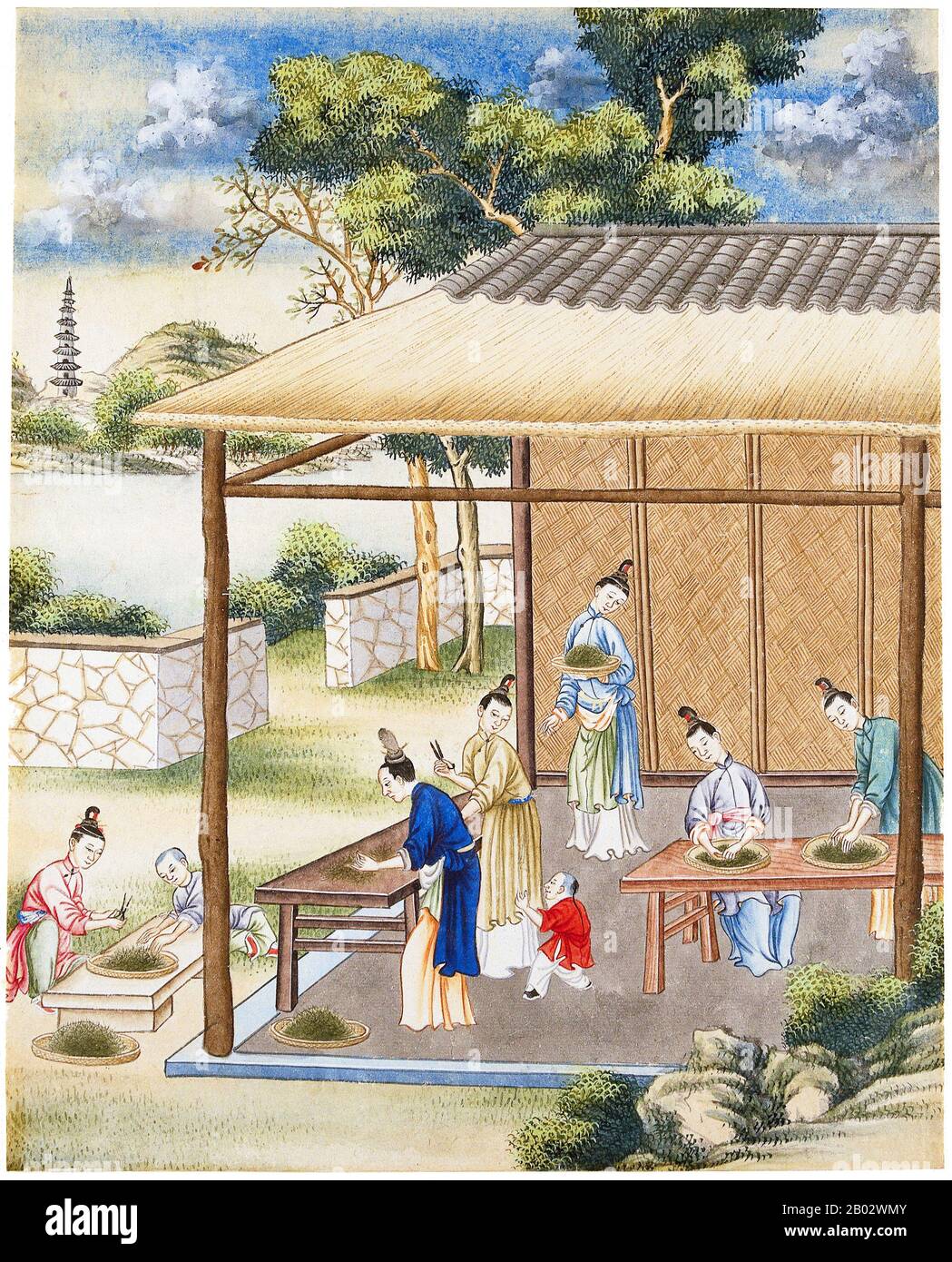 According to oral tradition, tea has been grown in China for more than four millennia. The earliest written accounts of tea making, however, date from around 350 CE, when it first became a drink at the imperial court. Around 800 CE tea seeds were taken to Japan, where regular cultivation was soon established. Just over five centuries later, in 1517, tea was first shipped to Europe by the Portuguese soon after they began their trade with China. In 1667 the Honourable East India Company ordered the first British shipment of tea from China, requesting of their agents ‘one hundred pounds weight o Stock Photohttps://www.alamy.com/image-license-details/?v=1https://www.alamy.com/according-to-oral-tradition-tea-has-been-grown-in-china-for-more-than-four-millennia-the-earliest-written-accounts-of-tea-making-however-date-from-around-350-ce-when-it-first-became-a-drink-at-the-imperial-court-around-800-ce-tea-seeds-were-taken-to-japan-where-regular-cultivation-was-soon-established-just-over-five-centuries-later-in-1517-tea-was-first-shipped-to-europe-by-the-portuguese-soon-after-they-began-their-trade-with-china-in-1667-the-honourable-east-india-company-ordered-the-first-british-shipment-of-tea-from-china-requesting-of-their-agents-one-hundred-pounds-weight-o-image344271451.html
According to oral tradition, tea has been grown in China for more than four millennia. The earliest written accounts of tea making, however, date from around 350 CE, when it first became a drink at the imperial court. Around 800 CE tea seeds were taken to Japan, where regular cultivation was soon established. Just over five centuries later, in 1517, tea was first shipped to Europe by the Portuguese soon after they began their trade with China. In 1667 the Honourable East India Company ordered the first British shipment of tea from China, requesting of their agents ‘one hundred pounds weight o Stock Photohttps://www.alamy.com/image-license-details/?v=1https://www.alamy.com/according-to-oral-tradition-tea-has-been-grown-in-china-for-more-than-four-millennia-the-earliest-written-accounts-of-tea-making-however-date-from-around-350-ce-when-it-first-became-a-drink-at-the-imperial-court-around-800-ce-tea-seeds-were-taken-to-japan-where-regular-cultivation-was-soon-established-just-over-five-centuries-later-in-1517-tea-was-first-shipped-to-europe-by-the-portuguese-soon-after-they-began-their-trade-with-china-in-1667-the-honourable-east-india-company-ordered-the-first-british-shipment-of-tea-from-china-requesting-of-their-agents-one-hundred-pounds-weight-o-image344271451.htmlRM2B02WMY–According to oral tradition, tea has been grown in China for more than four millennia. The earliest written accounts of tea making, however, date from around 350 CE, when it first became a drink at the imperial court. Around 800 CE tea seeds were taken to Japan, where regular cultivation was soon established. Just over five centuries later, in 1517, tea was first shipped to Europe by the Portuguese soon after they began their trade with China. In 1667 the Honourable East India Company ordered the first British shipment of tea from China, requesting of their agents ‘one hundred pounds weight o
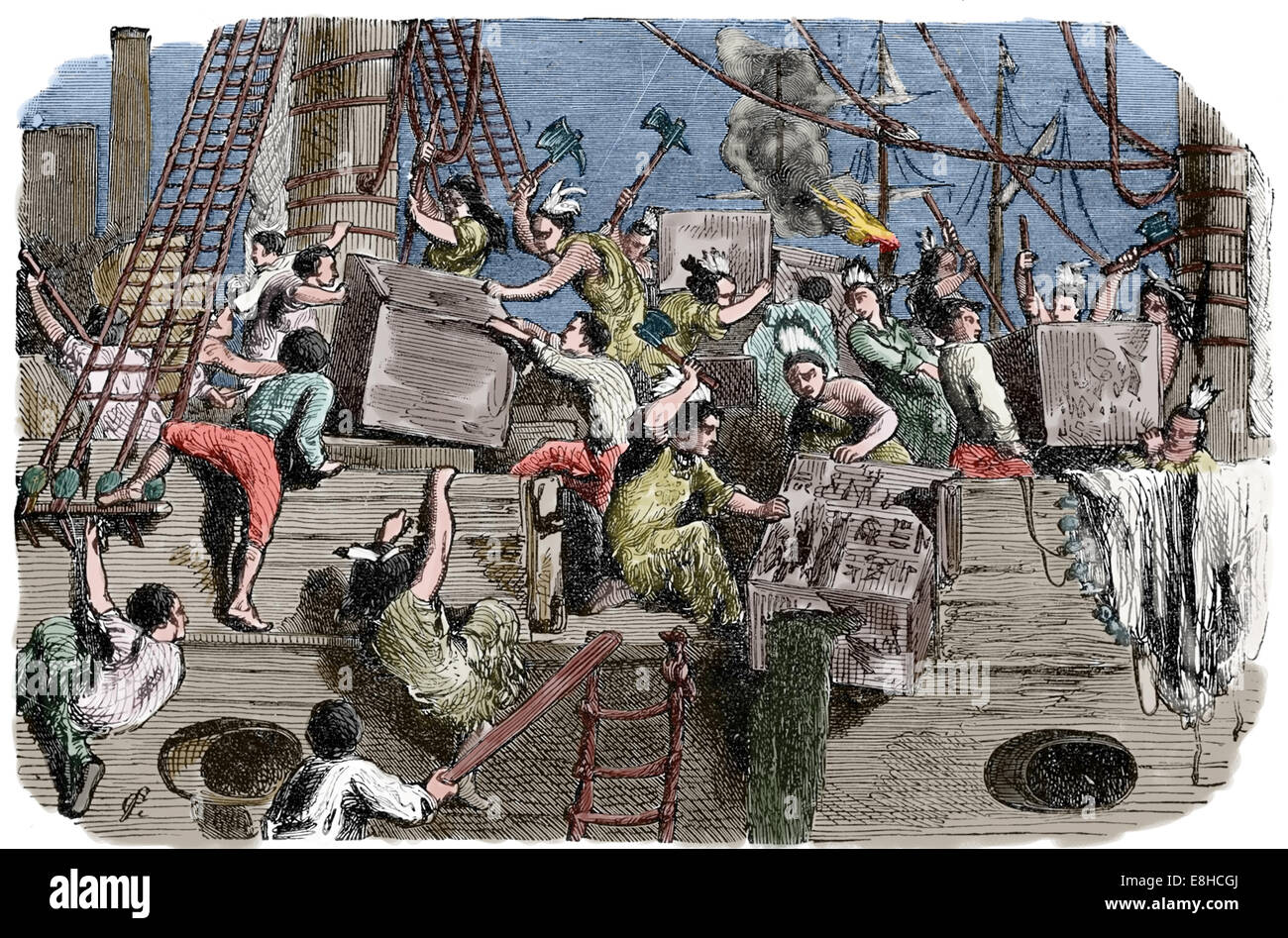 Boston Tea Party. Political protest by the Sons of Liberty in Boston. December 16, 1773. Engraving. Later colouration. Stock Photohttps://www.alamy.com/image-license-details/?v=1https://www.alamy.com/stock-photo-boston-tea-party-political-protest-by-the-sons-of-liberty-in-boston-74141778.html
Boston Tea Party. Political protest by the Sons of Liberty in Boston. December 16, 1773. Engraving. Later colouration. Stock Photohttps://www.alamy.com/image-license-details/?v=1https://www.alamy.com/stock-photo-boston-tea-party-political-protest-by-the-sons-of-liberty-in-boston-74141778.htmlRME8HCGJ–Boston Tea Party. Political protest by the Sons of Liberty in Boston. December 16, 1773. Engraving. Later colouration.
 The Cutty Sark, a Briitish Merchant Navy Ship at Greenwich National Maritime Museum in London Stock Photohttps://www.alamy.com/image-license-details/?v=1https://www.alamy.com/stock-photo-the-cutty-sark-a-briitish-merchant-navy-ship-at-greenwich-national-55759487.html
The Cutty Sark, a Briitish Merchant Navy Ship at Greenwich National Maritime Museum in London Stock Photohttps://www.alamy.com/image-license-details/?v=1https://www.alamy.com/stock-photo-the-cutty-sark-a-briitish-merchant-navy-ship-at-greenwich-national-55759487.htmlRMD6M1P7–The Cutty Sark, a Briitish Merchant Navy Ship at Greenwich National Maritime Museum in London
 GREENWICH, UK - The Cutty Sark is a restored historic British clipper sailing ship that is now open as a tourist attraction in Greenwich, London. It was built in 1869 and in active service until 1895. In its heyday as a trader vessel, it was known as the fastest ship of its time. It was notable for its participation in the tea trade between Asia and Europe. When the opening of the Suez Canal created the opportunity for shorter and faster trips made by steam ships, the Cutty Sark was used to transport wool from Australia to Britain. The historic Cutty Sark, a British clipper ship and one of the Stock Photohttps://www.alamy.com/image-license-details/?v=1https://www.alamy.com/greenwich-uk-the-cutty-sark-is-a-restored-historic-british-clipper-sailing-ship-that-is-now-open-as-a-tourist-attraction-in-greenwich-london-it-was-built-in-1869-and-in-active-service-until-1895-in-its-heyday-as-a-trader-vessel-it-was-known-as-the-fastest-ship-of-its-time-it-was-notable-for-its-participation-in-the-tea-trade-between-asia-and-europe-when-the-opening-of-the-suez-canal-created-the-opportunity-for-shorter-and-faster-trips-made-by-steam-ships-the-cutty-sark-was-used-to-transport-wool-from-australia-to-britain-the-historic-cutty-sark-a-british-clipper-ship-and-one-of-the-image233161959.html
GREENWICH, UK - The Cutty Sark is a restored historic British clipper sailing ship that is now open as a tourist attraction in Greenwich, London. It was built in 1869 and in active service until 1895. In its heyday as a trader vessel, it was known as the fastest ship of its time. It was notable for its participation in the tea trade between Asia and Europe. When the opening of the Suez Canal created the opportunity for shorter and faster trips made by steam ships, the Cutty Sark was used to transport wool from Australia to Britain. The historic Cutty Sark, a British clipper ship and one of the Stock Photohttps://www.alamy.com/image-license-details/?v=1https://www.alamy.com/greenwich-uk-the-cutty-sark-is-a-restored-historic-british-clipper-sailing-ship-that-is-now-open-as-a-tourist-attraction-in-greenwich-london-it-was-built-in-1869-and-in-active-service-until-1895-in-its-heyday-as-a-trader-vessel-it-was-known-as-the-fastest-ship-of-its-time-it-was-notable-for-its-participation-in-the-tea-trade-between-asia-and-europe-when-the-opening-of-the-suez-canal-created-the-opportunity-for-shorter-and-faster-trips-made-by-steam-ships-the-cutty-sark-was-used-to-transport-wool-from-australia-to-britain-the-historic-cutty-sark-a-british-clipper-ship-and-one-of-the-image233161959.htmlRMRF9CCR–GREENWICH, UK - The Cutty Sark is a restored historic British clipper sailing ship that is now open as a tourist attraction in Greenwich, London. It was built in 1869 and in active service until 1895. In its heyday as a trader vessel, it was known as the fastest ship of its time. It was notable for its participation in the tea trade between Asia and Europe. When the opening of the Suez Canal created the opportunity for shorter and faster trips made by steam ships, the Cutty Sark was used to transport wool from Australia to Britain. The historic Cutty Sark, a British clipper ship and one of the
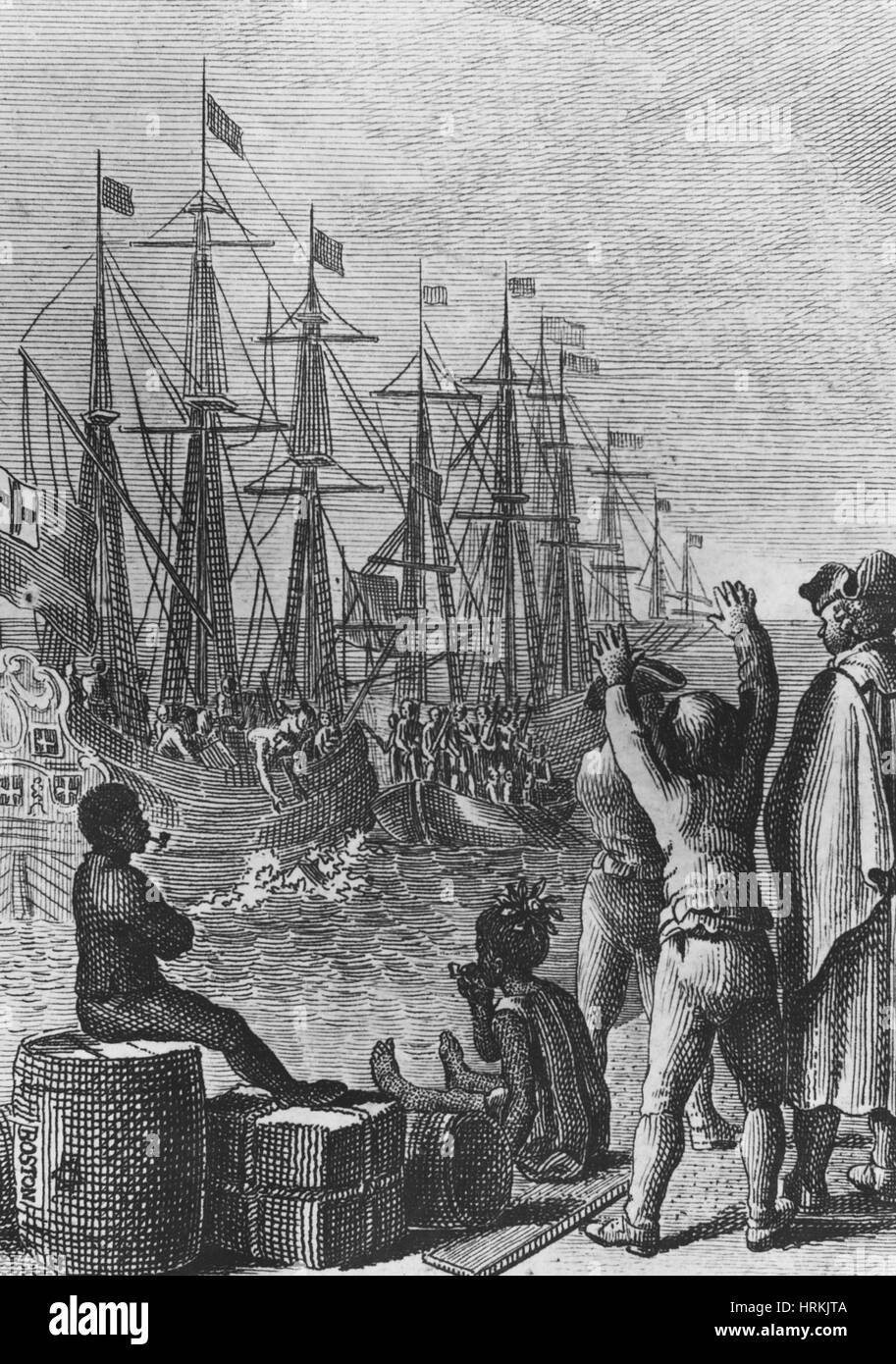 Boston Tea Party, 1773 Stock Photohttps://www.alamy.com/image-license-details/?v=1https://www.alamy.com/stock-photo-boston-tea-party-1773-135041546.html
Boston Tea Party, 1773 Stock Photohttps://www.alamy.com/image-license-details/?v=1https://www.alamy.com/stock-photo-boston-tea-party-1773-135041546.htmlRMHRKJTA–Boston Tea Party, 1773
 Photographs in Calcutta, India by Captain William George Stretton from 1875-1880. Stock Photohttps://www.alamy.com/image-license-details/?v=1https://www.alamy.com/photographs-in-calcutta-india-by-captain-william-george-stretton-from-1875-1880-image556177677.html
Photographs in Calcutta, India by Captain William George Stretton from 1875-1880. Stock Photohttps://www.alamy.com/image-license-details/?v=1https://www.alamy.com/photographs-in-calcutta-india-by-captain-william-george-stretton-from-1875-1880-image556177677.htmlRM2R8T28D–Photographs in Calcutta, India by Captain William George Stretton from 1875-1880.
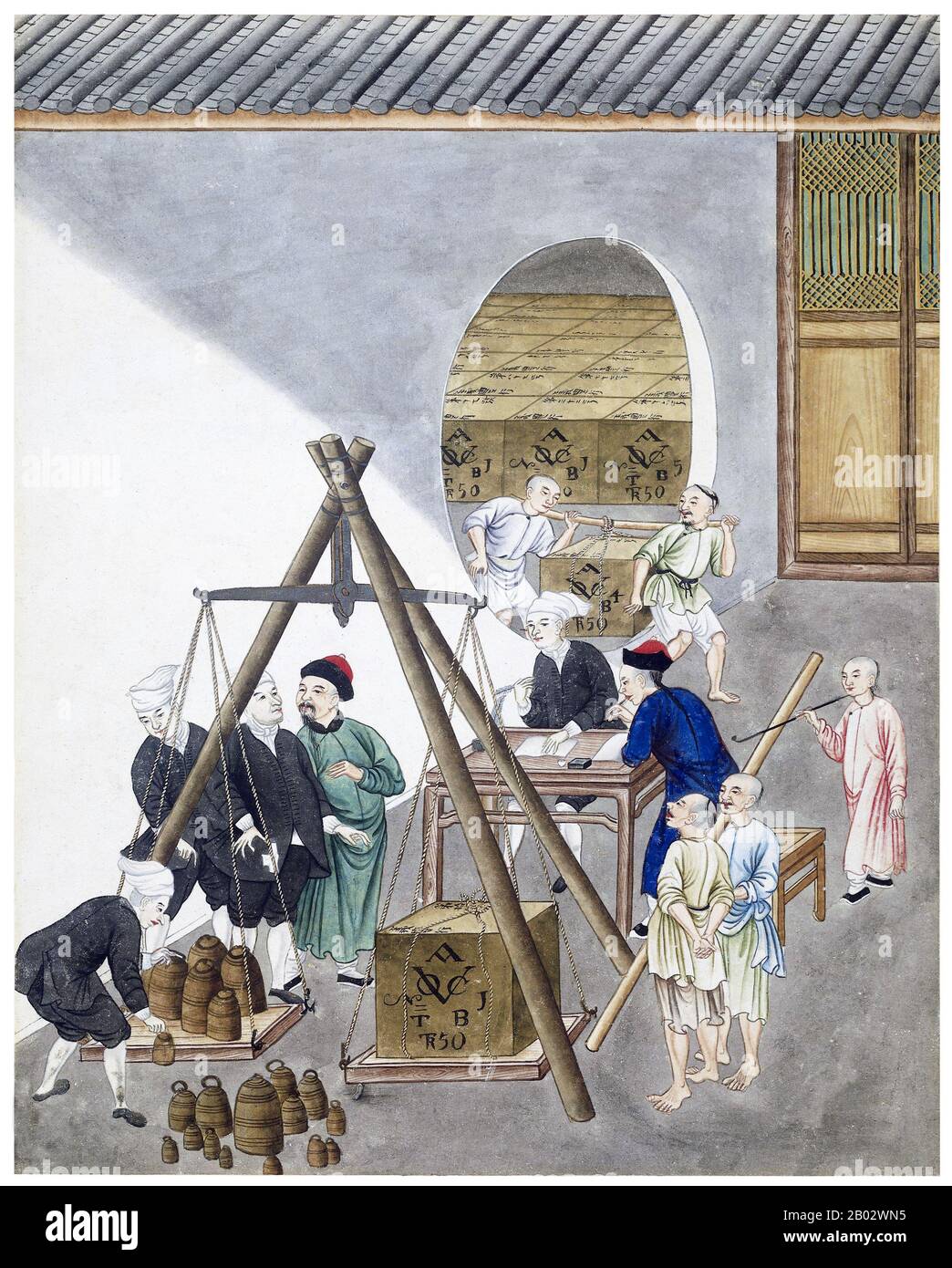 According to oral tradition, tea has been grown in China for more than four millennia. The earliest written accounts of tea making, however, date from around 350 CE, when it first became a drink at the imperial court. Around 800 CE tea seeds were taken to Japan, where regular cultivation was soon established. Just over five centuries later, in 1517, tea was first shipped to Europe by the Portuguese soon after they began their trade with China. In 1667 the Honourable East India Company ordered the first British shipment of tea from China, requesting of their agents ‘one hundred pounds weight o Stock Photohttps://www.alamy.com/image-license-details/?v=1https://www.alamy.com/according-to-oral-tradition-tea-has-been-grown-in-china-for-more-than-four-millennia-the-earliest-written-accounts-of-tea-making-however-date-from-around-350-ce-when-it-first-became-a-drink-at-the-imperial-court-around-800-ce-tea-seeds-were-taken-to-japan-where-regular-cultivation-was-soon-established-just-over-five-centuries-later-in-1517-tea-was-first-shipped-to-europe-by-the-portuguese-soon-after-they-began-their-trade-with-china-in-1667-the-honourable-east-india-company-ordered-the-first-british-shipment-of-tea-from-china-requesting-of-their-agents-one-hundred-pounds-weight-o-image344271457.html
According to oral tradition, tea has been grown in China for more than four millennia. The earliest written accounts of tea making, however, date from around 350 CE, when it first became a drink at the imperial court. Around 800 CE tea seeds were taken to Japan, where regular cultivation was soon established. Just over five centuries later, in 1517, tea was first shipped to Europe by the Portuguese soon after they began their trade with China. In 1667 the Honourable East India Company ordered the first British shipment of tea from China, requesting of their agents ‘one hundred pounds weight o Stock Photohttps://www.alamy.com/image-license-details/?v=1https://www.alamy.com/according-to-oral-tradition-tea-has-been-grown-in-china-for-more-than-four-millennia-the-earliest-written-accounts-of-tea-making-however-date-from-around-350-ce-when-it-first-became-a-drink-at-the-imperial-court-around-800-ce-tea-seeds-were-taken-to-japan-where-regular-cultivation-was-soon-established-just-over-five-centuries-later-in-1517-tea-was-first-shipped-to-europe-by-the-portuguese-soon-after-they-began-their-trade-with-china-in-1667-the-honourable-east-india-company-ordered-the-first-british-shipment-of-tea-from-china-requesting-of-their-agents-one-hundred-pounds-weight-o-image344271457.htmlRM2B02WN5–According to oral tradition, tea has been grown in China for more than four millennia. The earliest written accounts of tea making, however, date from around 350 CE, when it first became a drink at the imperial court. Around 800 CE tea seeds were taken to Japan, where regular cultivation was soon established. Just over five centuries later, in 1517, tea was first shipped to Europe by the Portuguese soon after they began their trade with China. In 1667 the Honourable East India Company ordered the first British shipment of tea from China, requesting of their agents ‘one hundred pounds weight o
 The Cutty Sark, a Briitish Merchant Navy Ship at Greenwich National Maritime Museum in London Stock Photohttps://www.alamy.com/image-license-details/?v=1https://www.alamy.com/stock-photo-the-cutty-sark-a-briitish-merchant-navy-ship-at-greenwich-national-55759453.html
The Cutty Sark, a Briitish Merchant Navy Ship at Greenwich National Maritime Museum in London Stock Photohttps://www.alamy.com/image-license-details/?v=1https://www.alamy.com/stock-photo-the-cutty-sark-a-briitish-merchant-navy-ship-at-greenwich-national-55759453.htmlRMD6M1N1–The Cutty Sark, a Briitish Merchant Navy Ship at Greenwich National Maritime Museum in London
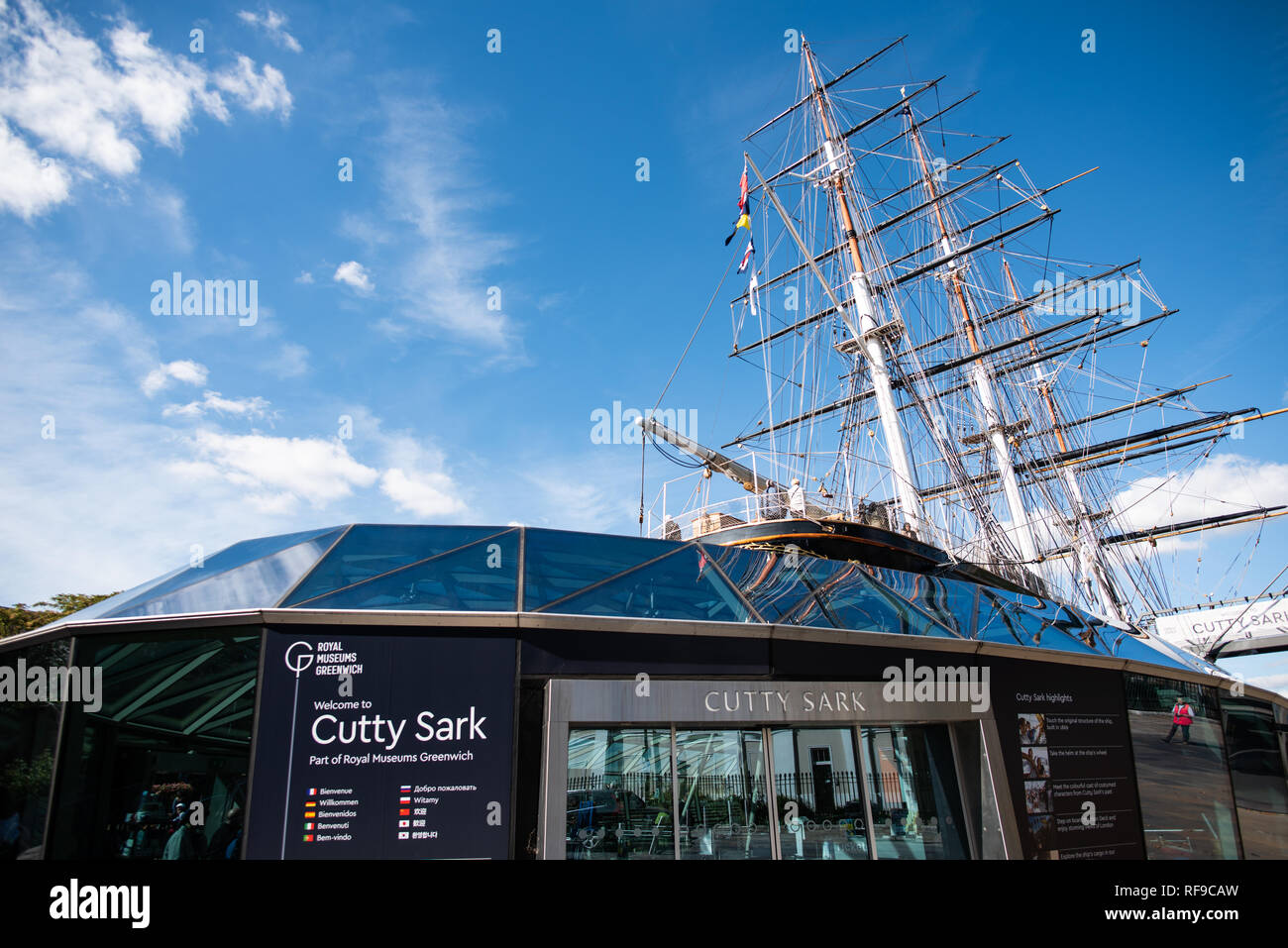 GREENWICH, UK - The Cutty Sark is a restored historic British clipper sailing ship that is now open as a tourist attraction in Greenwich, London. It was built in 1869 and in active service until 1895. In its heyday as a trader vessel, it was known as the fastest ship of its time. It was notable for its participation in the tea trade between Asia and Europe. When the opening of the Suez Canal created the opportunity for shorter and faster trips made by steam ships, the Cutty Sark was used to transport wool from Australia to Britain. The historic Cutty Sark, a British clipper ship and one of the Stock Photohttps://www.alamy.com/image-license-details/?v=1https://www.alamy.com/greenwich-uk-the-cutty-sark-is-a-restored-historic-british-clipper-sailing-ship-that-is-now-open-as-a-tourist-attraction-in-greenwich-london-it-was-built-in-1869-and-in-active-service-until-1895-in-its-heyday-as-a-trader-vessel-it-was-known-as-the-fastest-ship-of-its-time-it-was-notable-for-its-participation-in-the-tea-trade-between-asia-and-europe-when-the-opening-of-the-suez-canal-created-the-opportunity-for-shorter-and-faster-trips-made-by-steam-ships-the-cutty-sark-was-used-to-transport-wool-from-australia-to-britain-the-historic-cutty-sark-a-british-clipper-ship-and-one-of-the-image233161905.html
GREENWICH, UK - The Cutty Sark is a restored historic British clipper sailing ship that is now open as a tourist attraction in Greenwich, London. It was built in 1869 and in active service until 1895. In its heyday as a trader vessel, it was known as the fastest ship of its time. It was notable for its participation in the tea trade between Asia and Europe. When the opening of the Suez Canal created the opportunity for shorter and faster trips made by steam ships, the Cutty Sark was used to transport wool from Australia to Britain. The historic Cutty Sark, a British clipper ship and one of the Stock Photohttps://www.alamy.com/image-license-details/?v=1https://www.alamy.com/greenwich-uk-the-cutty-sark-is-a-restored-historic-british-clipper-sailing-ship-that-is-now-open-as-a-tourist-attraction-in-greenwich-london-it-was-built-in-1869-and-in-active-service-until-1895-in-its-heyday-as-a-trader-vessel-it-was-known-as-the-fastest-ship-of-its-time-it-was-notable-for-its-participation-in-the-tea-trade-between-asia-and-europe-when-the-opening-of-the-suez-canal-created-the-opportunity-for-shorter-and-faster-trips-made-by-steam-ships-the-cutty-sark-was-used-to-transport-wool-from-australia-to-britain-the-historic-cutty-sark-a-british-clipper-ship-and-one-of-the-image233161905.htmlRMRF9CAW–GREENWICH, UK - The Cutty Sark is a restored historic British clipper sailing ship that is now open as a tourist attraction in Greenwich, London. It was built in 1869 and in active service until 1895. In its heyday as a trader vessel, it was known as the fastest ship of its time. It was notable for its participation in the tea trade between Asia and Europe. When the opening of the Suez Canal created the opportunity for shorter and faster trips made by steam ships, the Cutty Sark was used to transport wool from Australia to Britain. The historic Cutty Sark, a British clipper ship and one of the
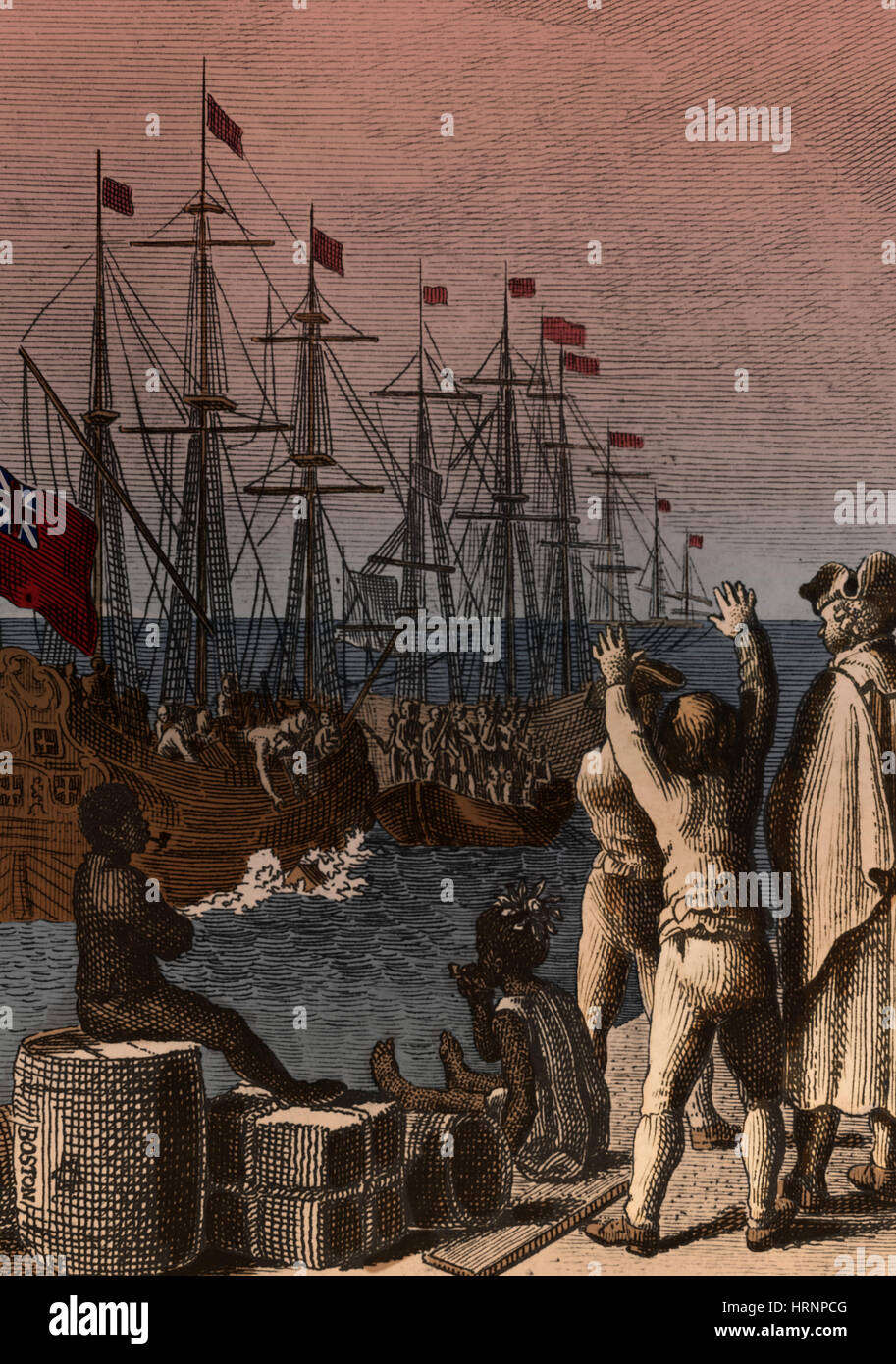 Boston Tea Party, 1773 Stock Photohttps://www.alamy.com/image-license-details/?v=1https://www.alamy.com/stock-photo-boston-tea-party-1773-135088256.html
Boston Tea Party, 1773 Stock Photohttps://www.alamy.com/image-license-details/?v=1https://www.alamy.com/stock-photo-boston-tea-party-1773-135088256.htmlRMHRNPCG–Boston Tea Party, 1773
 Photographs in Calcutta, India by Captain William George Stretton from 1875-1880. Stock Photohttps://www.alamy.com/image-license-details/?v=1https://www.alamy.com/photographs-in-calcutta-india-by-captain-william-george-stretton-from-1875-1880-image556177544.html
Photographs in Calcutta, India by Captain William George Stretton from 1875-1880. Stock Photohttps://www.alamy.com/image-license-details/?v=1https://www.alamy.com/photographs-in-calcutta-india-by-captain-william-george-stretton-from-1875-1880-image556177544.htmlRM2R8T23M–Photographs in Calcutta, India by Captain William George Stretton from 1875-1880.
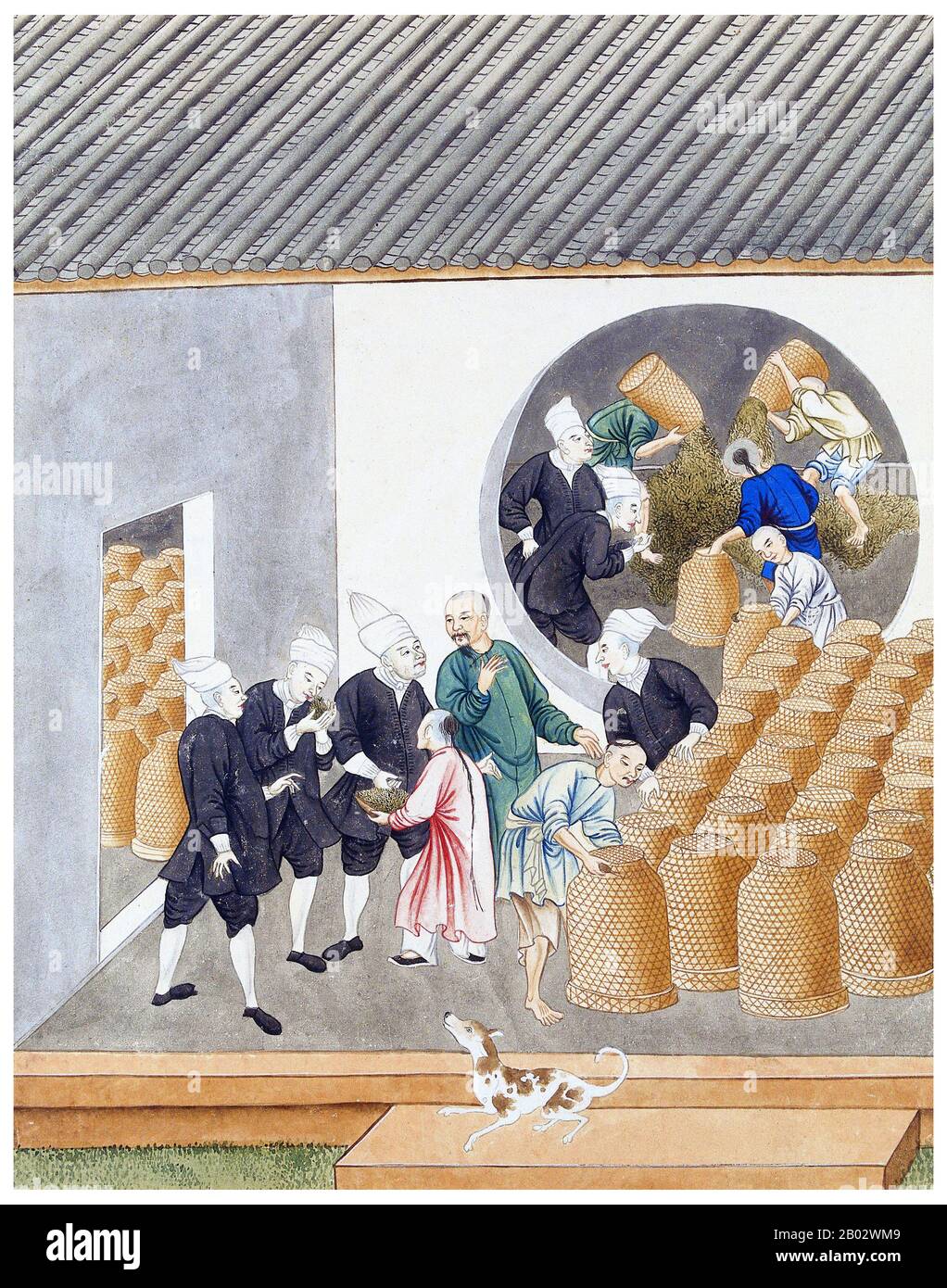 According to oral tradition, tea has been grown in China for more than four millennia. The earliest written accounts of tea making, however, date from around 350 CE, when it first became a drink at the imperial court. Around 800 CE tea seeds were taken to Japan, where regular cultivation was soon established. Just over five centuries later, in 1517, tea was first shipped to Europe by the Portuguese soon after they began their trade with China. In 1667 the Honourable East India Company ordered the first British shipment of tea from China, requesting of their agents ‘one hundred pounds weight o Stock Photohttps://www.alamy.com/image-license-details/?v=1https://www.alamy.com/according-to-oral-tradition-tea-has-been-grown-in-china-for-more-than-four-millennia-the-earliest-written-accounts-of-tea-making-however-date-from-around-350-ce-when-it-first-became-a-drink-at-the-imperial-court-around-800-ce-tea-seeds-were-taken-to-japan-where-regular-cultivation-was-soon-established-just-over-five-centuries-later-in-1517-tea-was-first-shipped-to-europe-by-the-portuguese-soon-after-they-began-their-trade-with-china-in-1667-the-honourable-east-india-company-ordered-the-first-british-shipment-of-tea-from-china-requesting-of-their-agents-one-hundred-pounds-weight-o-image344271433.html
According to oral tradition, tea has been grown in China for more than four millennia. The earliest written accounts of tea making, however, date from around 350 CE, when it first became a drink at the imperial court. Around 800 CE tea seeds were taken to Japan, where regular cultivation was soon established. Just over five centuries later, in 1517, tea was first shipped to Europe by the Portuguese soon after they began their trade with China. In 1667 the Honourable East India Company ordered the first British shipment of tea from China, requesting of their agents ‘one hundred pounds weight o Stock Photohttps://www.alamy.com/image-license-details/?v=1https://www.alamy.com/according-to-oral-tradition-tea-has-been-grown-in-china-for-more-than-four-millennia-the-earliest-written-accounts-of-tea-making-however-date-from-around-350-ce-when-it-first-became-a-drink-at-the-imperial-court-around-800-ce-tea-seeds-were-taken-to-japan-where-regular-cultivation-was-soon-established-just-over-five-centuries-later-in-1517-tea-was-first-shipped-to-europe-by-the-portuguese-soon-after-they-began-their-trade-with-china-in-1667-the-honourable-east-india-company-ordered-the-first-british-shipment-of-tea-from-china-requesting-of-their-agents-one-hundred-pounds-weight-o-image344271433.htmlRM2B02WM9–According to oral tradition, tea has been grown in China for more than four millennia. The earliest written accounts of tea making, however, date from around 350 CE, when it first became a drink at the imperial court. Around 800 CE tea seeds were taken to Japan, where regular cultivation was soon established. Just over five centuries later, in 1517, tea was first shipped to Europe by the Portuguese soon after they began their trade with China. In 1667 the Honourable East India Company ordered the first British shipment of tea from China, requesting of their agents ‘one hundred pounds weight o
 The Cutty Sark, a Briitish Merchant Navy Ship at Greenwich National Maritime Museum in London Stock Photohttps://www.alamy.com/image-license-details/?v=1https://www.alamy.com/stock-photo-the-cutty-sark-a-briitish-merchant-navy-ship-at-greenwich-national-55759440.html
The Cutty Sark, a Briitish Merchant Navy Ship at Greenwich National Maritime Museum in London Stock Photohttps://www.alamy.com/image-license-details/?v=1https://www.alamy.com/stock-photo-the-cutty-sark-a-briitish-merchant-navy-ship-at-greenwich-national-55759440.htmlRMD6M1MG–The Cutty Sark, a Briitish Merchant Navy Ship at Greenwich National Maritime Museum in London
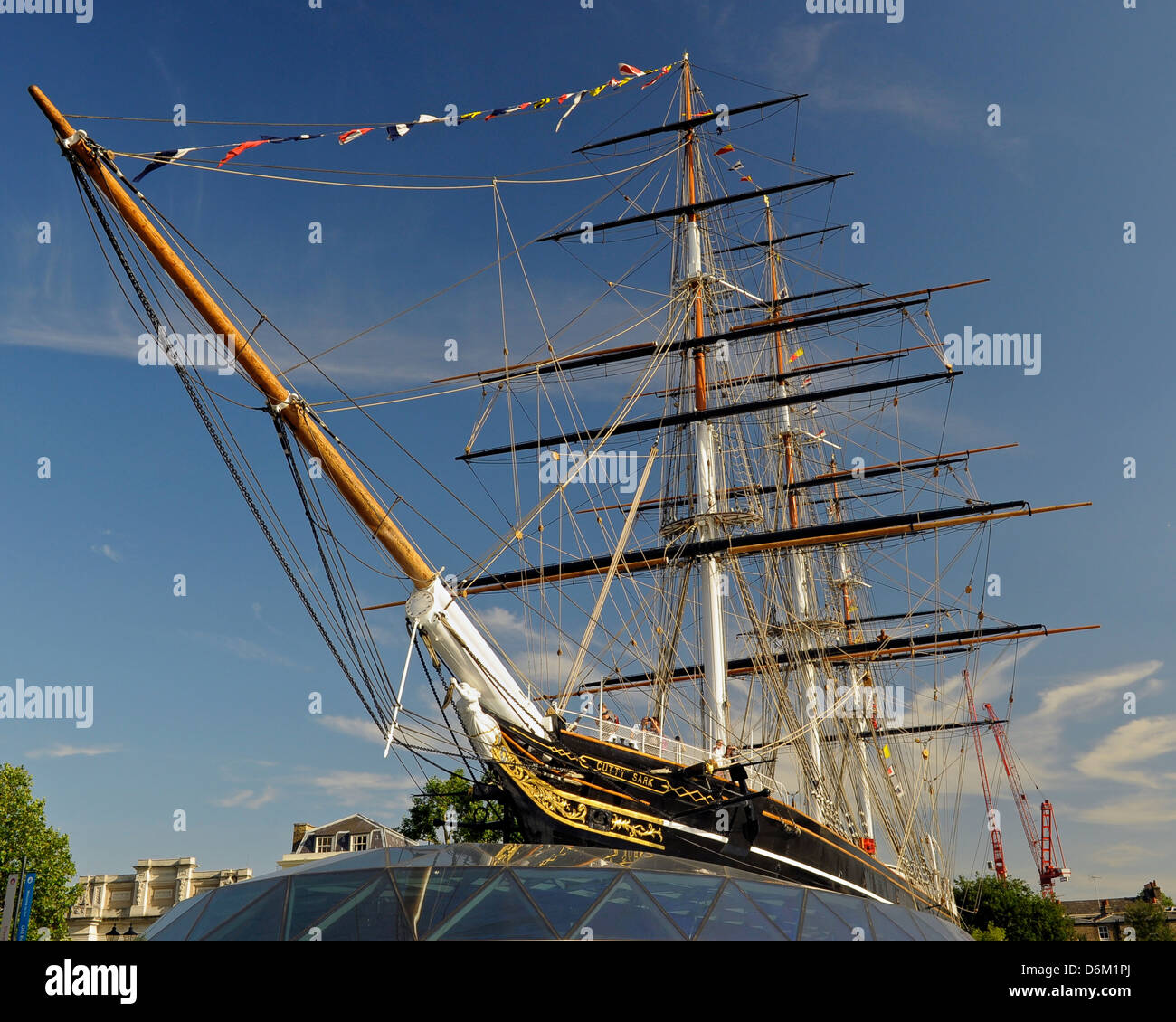 Samuel Beckett bridge on the river Liffey in the Dublin city docks. Stock Photohttps://www.alamy.com/image-license-details/?v=1https://www.alamy.com/stock-photo-samuel-beckett-bridge-on-the-river-liffey-in-the-dublin-city-docks-55759498.html
Samuel Beckett bridge on the river Liffey in the Dublin city docks. Stock Photohttps://www.alamy.com/image-license-details/?v=1https://www.alamy.com/stock-photo-samuel-beckett-bridge-on-the-river-liffey-in-the-dublin-city-docks-55759498.htmlRMD6M1PJ–Samuel Beckett bridge on the river Liffey in the Dublin city docks.
 GREENWICH, UK - The Cutty Sark is a restored historic British clipper sailing ship that is now open as a tourist attraction in Greenwich, London. It was built in 1869 and in active service until 1895. In its heyday as a trader vessel, it was known as the fastest ship of its time. It was notable for its participation in the tea trade between Asia and Europe. When the opening of the Suez Canal created the opportunity for shorter and faster trips made by steam ships, the Cutty Sark was used to transport wool from Australia to Britain. The historic Cutty Sark, a British clipper ship and one of the Stock Photohttps://www.alamy.com/image-license-details/?v=1https://www.alamy.com/greenwich-uk-the-cutty-sark-is-a-restored-historic-british-clipper-sailing-ship-that-is-now-open-as-a-tourist-attraction-in-greenwich-london-it-was-built-in-1869-and-in-active-service-until-1895-in-its-heyday-as-a-trader-vessel-it-was-known-as-the-fastest-ship-of-its-time-it-was-notable-for-its-participation-in-the-tea-trade-between-asia-and-europe-when-the-opening-of-the-suez-canal-created-the-opportunity-for-shorter-and-faster-trips-made-by-steam-ships-the-cutty-sark-was-used-to-transport-wool-from-australia-to-britain-the-historic-cutty-sark-a-british-clipper-ship-and-one-of-the-image233163859.html
GREENWICH, UK - The Cutty Sark is a restored historic British clipper sailing ship that is now open as a tourist attraction in Greenwich, London. It was built in 1869 and in active service until 1895. In its heyday as a trader vessel, it was known as the fastest ship of its time. It was notable for its participation in the tea trade between Asia and Europe. When the opening of the Suez Canal created the opportunity for shorter and faster trips made by steam ships, the Cutty Sark was used to transport wool from Australia to Britain. The historic Cutty Sark, a British clipper ship and one of the Stock Photohttps://www.alamy.com/image-license-details/?v=1https://www.alamy.com/greenwich-uk-the-cutty-sark-is-a-restored-historic-british-clipper-sailing-ship-that-is-now-open-as-a-tourist-attraction-in-greenwich-london-it-was-built-in-1869-and-in-active-service-until-1895-in-its-heyday-as-a-trader-vessel-it-was-known-as-the-fastest-ship-of-its-time-it-was-notable-for-its-participation-in-the-tea-trade-between-asia-and-europe-when-the-opening-of-the-suez-canal-created-the-opportunity-for-shorter-and-faster-trips-made-by-steam-ships-the-cutty-sark-was-used-to-transport-wool-from-australia-to-britain-the-historic-cutty-sark-a-british-clipper-ship-and-one-of-the-image233163859.htmlRMRF9ETK–GREENWICH, UK - The Cutty Sark is a restored historic British clipper sailing ship that is now open as a tourist attraction in Greenwich, London. It was built in 1869 and in active service until 1895. In its heyday as a trader vessel, it was known as the fastest ship of its time. It was notable for its participation in the tea trade between Asia and Europe. When the opening of the Suez Canal created the opportunity for shorter and faster trips made by steam ships, the Cutty Sark was used to transport wool from Australia to Britain. The historic Cutty Sark, a British clipper ship and one of the
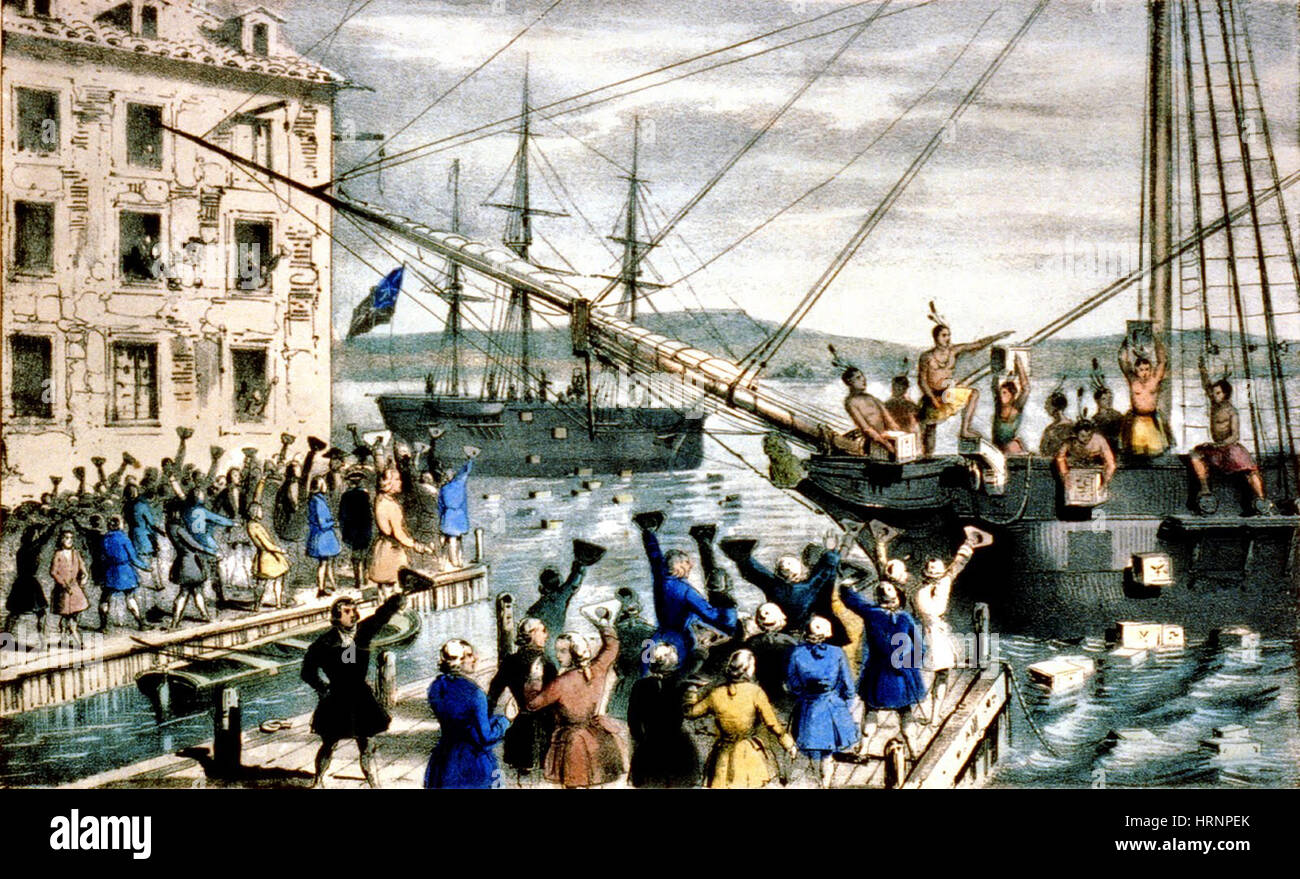 Boston Tea Party, 1773 Stock Photohttps://www.alamy.com/image-license-details/?v=1https://www.alamy.com/stock-photo-boston-tea-party-1773-135088315.html
Boston Tea Party, 1773 Stock Photohttps://www.alamy.com/image-license-details/?v=1https://www.alamy.com/stock-photo-boston-tea-party-1773-135088315.htmlRMHRNPEK–Boston Tea Party, 1773
 Photographs in Calcutta, India by Captain William George Stretton from 1875-1880. Stock Photohttps://www.alamy.com/image-license-details/?v=1https://www.alamy.com/photographs-in-calcutta-india-by-captain-william-george-stretton-from-1875-1880-image556177699.html
Photographs in Calcutta, India by Captain William George Stretton from 1875-1880. Stock Photohttps://www.alamy.com/image-license-details/?v=1https://www.alamy.com/photographs-in-calcutta-india-by-captain-william-george-stretton-from-1875-1880-image556177699.htmlRM2R8T297–Photographs in Calcutta, India by Captain William George Stretton from 1875-1880.
 According to oral tradition, tea has been grown in China for more than four millennia. The earliest written accounts of tea making, however, date from around 350 CE, when it first became a drink at the imperial court. Around 800 CE tea seeds were taken to Japan, where regular cultivation was soon established. Just over five centuries later, in 1517, tea was first shipped to Europe by the Portuguese soon after they began their trade with China. In 1667 the Honourable East India Company ordered the first British shipment of tea from China, requesting of their agents ‘one hundred pounds weight o Stock Photohttps://www.alamy.com/image-license-details/?v=1https://www.alamy.com/according-to-oral-tradition-tea-has-been-grown-in-china-for-more-than-four-millennia-the-earliest-written-accounts-of-tea-making-however-date-from-around-350-ce-when-it-first-became-a-drink-at-the-imperial-court-around-800-ce-tea-seeds-were-taken-to-japan-where-regular-cultivation-was-soon-established-just-over-five-centuries-later-in-1517-tea-was-first-shipped-to-europe-by-the-portuguese-soon-after-they-began-their-trade-with-china-in-1667-the-honourable-east-india-company-ordered-the-first-british-shipment-of-tea-from-china-requesting-of-their-agents-one-hundred-pounds-weight-o-image344271449.html
According to oral tradition, tea has been grown in China for more than four millennia. The earliest written accounts of tea making, however, date from around 350 CE, when it first became a drink at the imperial court. Around 800 CE tea seeds were taken to Japan, where regular cultivation was soon established. Just over five centuries later, in 1517, tea was first shipped to Europe by the Portuguese soon after they began their trade with China. In 1667 the Honourable East India Company ordered the first British shipment of tea from China, requesting of their agents ‘one hundred pounds weight o Stock Photohttps://www.alamy.com/image-license-details/?v=1https://www.alamy.com/according-to-oral-tradition-tea-has-been-grown-in-china-for-more-than-four-millennia-the-earliest-written-accounts-of-tea-making-however-date-from-around-350-ce-when-it-first-became-a-drink-at-the-imperial-court-around-800-ce-tea-seeds-were-taken-to-japan-where-regular-cultivation-was-soon-established-just-over-five-centuries-later-in-1517-tea-was-first-shipped-to-europe-by-the-portuguese-soon-after-they-began-their-trade-with-china-in-1667-the-honourable-east-india-company-ordered-the-first-british-shipment-of-tea-from-china-requesting-of-their-agents-one-hundred-pounds-weight-o-image344271449.htmlRM2B02WMW–According to oral tradition, tea has been grown in China for more than four millennia. The earliest written accounts of tea making, however, date from around 350 CE, when it first became a drink at the imperial court. Around 800 CE tea seeds were taken to Japan, where regular cultivation was soon established. Just over five centuries later, in 1517, tea was first shipped to Europe by the Portuguese soon after they began their trade with China. In 1667 the Honourable East India Company ordered the first British shipment of tea from China, requesting of their agents ‘one hundred pounds weight o
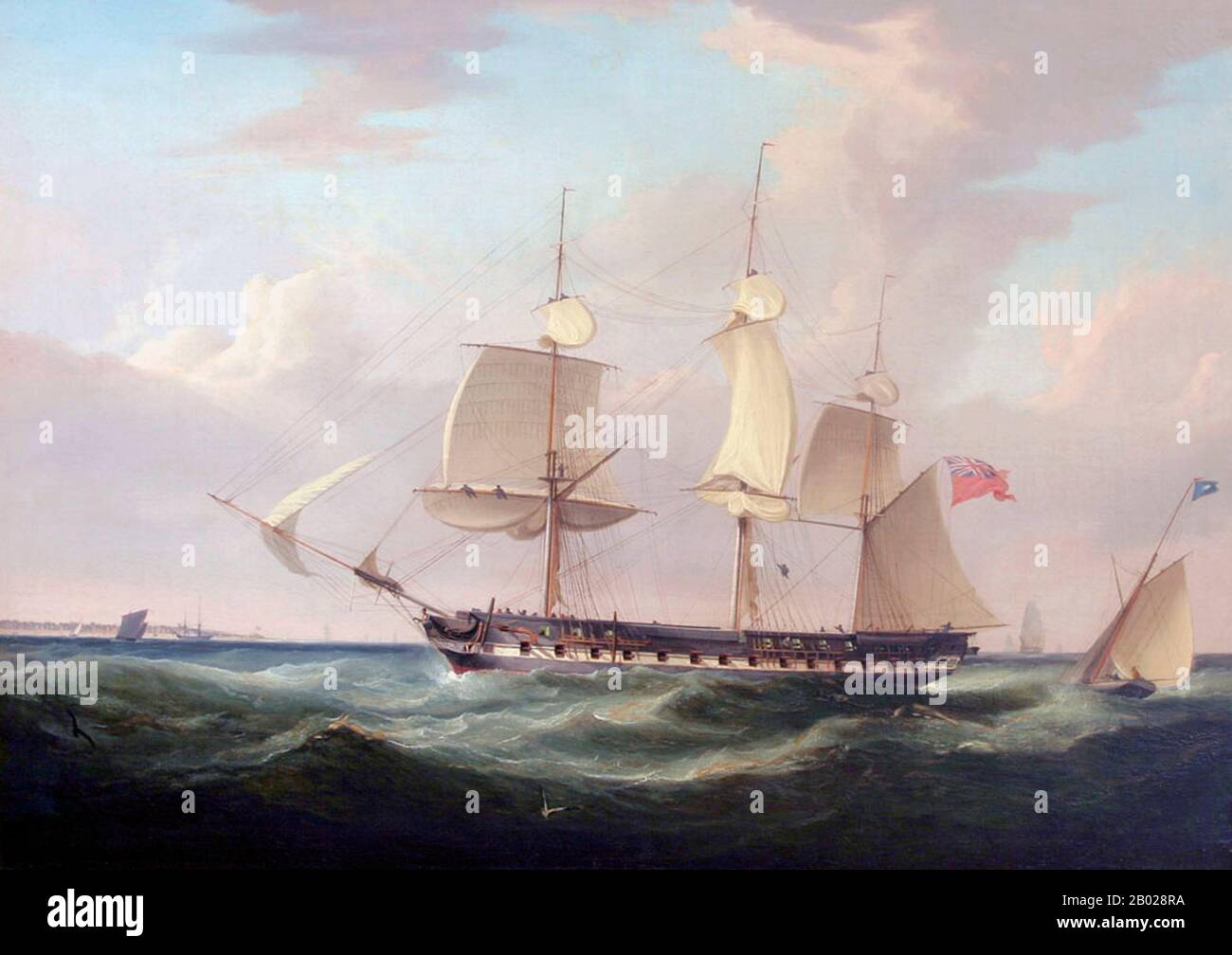 The Kent was an East Indiaman, a vessel sailing for the British East India Company, and launched in 1820. She completed two voyages to Bombay and China for the Company and was on her third voyage, to Bengal and China, when she was lost at sea in the Bay of Biscay due to a fire. Her captain for all three voyages was Henry Cobb. East Indiaman was a general name for any ship operating under charter or license to any of the East India Companies of the major European trading powers of the 17th through the 19th centuries. Thus, one can speak of a Danish, Dutch, English, French, Portuguese, or Swedi Stock Photohttps://www.alamy.com/image-license-details/?v=1https://www.alamy.com/the-kent-was-an-east-indiaman-a-vessel-sailing-for-the-british-east-india-company-and-launched-in-1820-she-completed-two-voyages-to-bombay-and-china-for-the-company-and-was-on-her-third-voyage-to-bengal-and-china-when-she-was-lost-at-sea-in-the-bay-of-biscay-due-to-a-fire-her-captain-for-all-three-voyages-was-henry-cobb-east-indiaman-was-a-general-name-for-any-ship-operating-under-charter-or-license-to-any-of-the-east-india-companies-of-the-major-european-trading-powers-of-the-17th-through-the-19th-centuries-thus-one-can-speak-of-a-danish-dutch-english-french-portuguese-or-swedi-image344258190.html
The Kent was an East Indiaman, a vessel sailing for the British East India Company, and launched in 1820. She completed two voyages to Bombay and China for the Company and was on her third voyage, to Bengal and China, when she was lost at sea in the Bay of Biscay due to a fire. Her captain for all three voyages was Henry Cobb. East Indiaman was a general name for any ship operating under charter or license to any of the East India Companies of the major European trading powers of the 17th through the 19th centuries. Thus, one can speak of a Danish, Dutch, English, French, Portuguese, or Swedi Stock Photohttps://www.alamy.com/image-license-details/?v=1https://www.alamy.com/the-kent-was-an-east-indiaman-a-vessel-sailing-for-the-british-east-india-company-and-launched-in-1820-she-completed-two-voyages-to-bombay-and-china-for-the-company-and-was-on-her-third-voyage-to-bengal-and-china-when-she-was-lost-at-sea-in-the-bay-of-biscay-due-to-a-fire-her-captain-for-all-three-voyages-was-henry-cobb-east-indiaman-was-a-general-name-for-any-ship-operating-under-charter-or-license-to-any-of-the-east-india-companies-of-the-major-european-trading-powers-of-the-17th-through-the-19th-centuries-thus-one-can-speak-of-a-danish-dutch-english-french-portuguese-or-swedi-image344258190.htmlRM2B028RA–The Kent was an East Indiaman, a vessel sailing for the British East India Company, and launched in 1820. She completed two voyages to Bombay and China for the Company and was on her third voyage, to Bengal and China, when she was lost at sea in the Bay of Biscay due to a fire. Her captain for all three voyages was Henry Cobb. East Indiaman was a general name for any ship operating under charter or license to any of the East India Companies of the major European trading powers of the 17th through the 19th centuries. Thus, one can speak of a Danish, Dutch, English, French, Portuguese, or Swedi
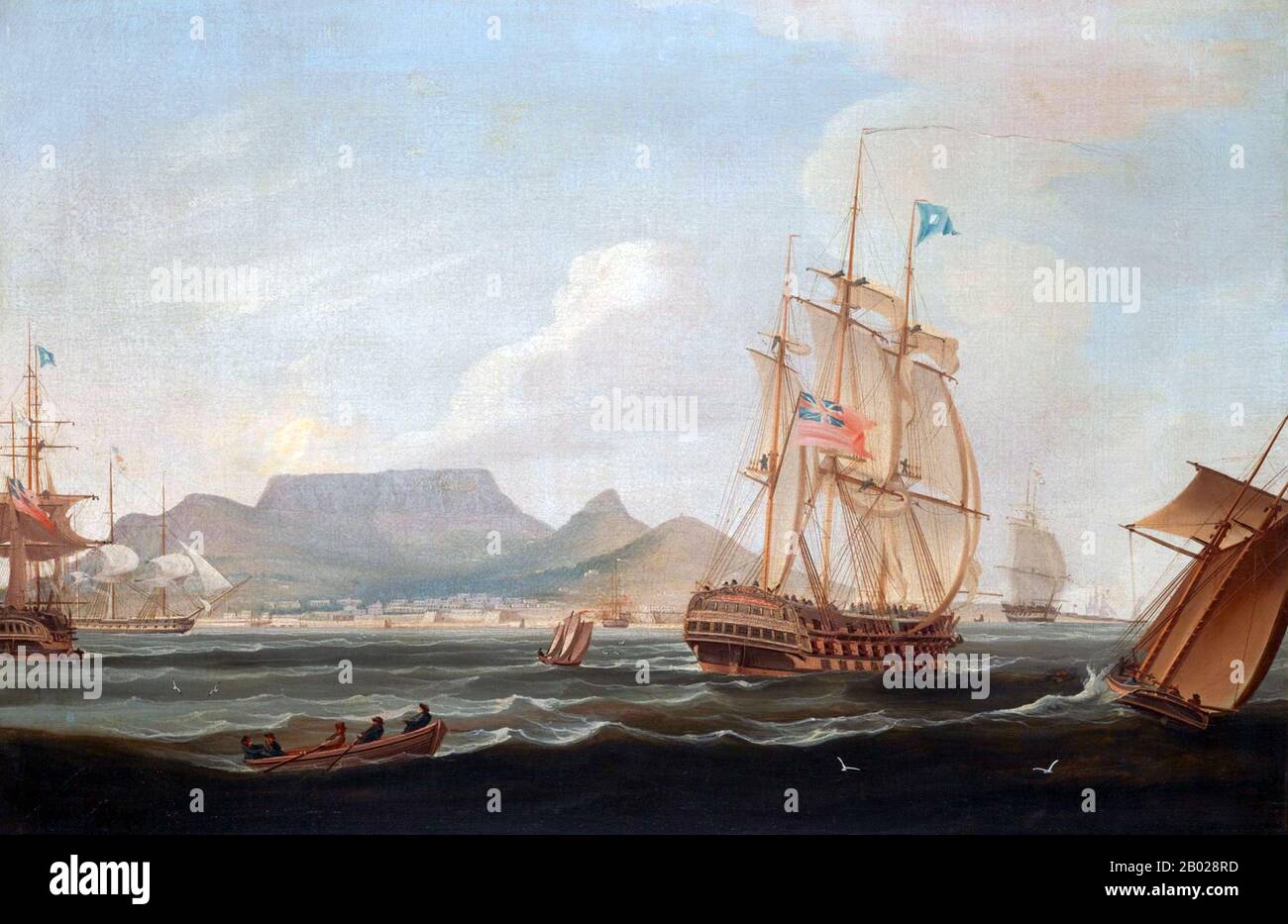 East Indiaman was a general name for any ship operating under charter or license to any of the East India Companies of the major European trading powers of the 17th through the 19th centuries. Thus, one can speak of a Danish, Dutch, English, French, Portuguese, or Swedish East Indiaman. In Britain, the Honourable East India Company itself did not generally own merchant ships, but held a monopoly granted to it by Queen Elizabeth I of England for all English trade between the Cape of Good Hope and Cape Horn, which was progressively restricted during the late 18th and early 19th centuries. Engl Stock Photohttps://www.alamy.com/image-license-details/?v=1https://www.alamy.com/east-indiaman-was-a-general-name-for-any-ship-operating-under-charter-or-license-to-any-of-the-east-india-companies-of-the-major-european-trading-powers-of-the-17th-through-the-19th-centuries-thus-one-can-speak-of-a-danish-dutch-english-french-portuguese-or-swedish-east-indiaman-in-britain-the-honourable-east-india-company-itself-did-not-generally-own-merchant-ships-but-held-a-monopoly-granted-to-it-by-queen-elizabeth-i-of-england-for-all-english-trade-between-the-cape-of-good-hope-and-cape-horn-which-was-progressively-restricted-during-the-late-18th-and-early-19th-centuries-engl-image344258193.html
East Indiaman was a general name for any ship operating under charter or license to any of the East India Companies of the major European trading powers of the 17th through the 19th centuries. Thus, one can speak of a Danish, Dutch, English, French, Portuguese, or Swedish East Indiaman. In Britain, the Honourable East India Company itself did not generally own merchant ships, but held a monopoly granted to it by Queen Elizabeth I of England for all English trade between the Cape of Good Hope and Cape Horn, which was progressively restricted during the late 18th and early 19th centuries. Engl Stock Photohttps://www.alamy.com/image-license-details/?v=1https://www.alamy.com/east-indiaman-was-a-general-name-for-any-ship-operating-under-charter-or-license-to-any-of-the-east-india-companies-of-the-major-european-trading-powers-of-the-17th-through-the-19th-centuries-thus-one-can-speak-of-a-danish-dutch-english-french-portuguese-or-swedish-east-indiaman-in-britain-the-honourable-east-india-company-itself-did-not-generally-own-merchant-ships-but-held-a-monopoly-granted-to-it-by-queen-elizabeth-i-of-england-for-all-english-trade-between-the-cape-of-good-hope-and-cape-horn-which-was-progressively-restricted-during-the-late-18th-and-early-19th-centuries-engl-image344258193.htmlRM2B028RD–East Indiaman was a general name for any ship operating under charter or license to any of the East India Companies of the major European trading powers of the 17th through the 19th centuries. Thus, one can speak of a Danish, Dutch, English, French, Portuguese, or Swedish East Indiaman. In Britain, the Honourable East India Company itself did not generally own merchant ships, but held a monopoly granted to it by Queen Elizabeth I of England for all English trade between the Cape of Good Hope and Cape Horn, which was progressively restricted during the late 18th and early 19th centuries. Engl
 GREENWICH, UK - The Cutty Sark is a restored historic British clipper sailing ship that is now open as a tourist attraction in Greenwich, London. It was built in 1869 and in active service until 1895. In its heyday as a trader vessel, it was known as the fastest ship of its time. It was notable for its participation in the tea trade between Asia and Europe. When the opening of the Suez Canal created the opportunity for shorter and faster trips made by steam ships, the Cutty Sark was used to transport wool from Australia to Britain. The historic Cutty Sark, a British clipper ship and one of the Stock Photohttps://www.alamy.com/image-license-details/?v=1https://www.alamy.com/greenwich-uk-the-cutty-sark-is-a-restored-historic-british-clipper-sailing-ship-that-is-now-open-as-a-tourist-attraction-in-greenwich-london-it-was-built-in-1869-and-in-active-service-until-1895-in-its-heyday-as-a-trader-vessel-it-was-known-as-the-fastest-ship-of-its-time-it-was-notable-for-its-participation-in-the-tea-trade-between-asia-and-europe-when-the-opening-of-the-suez-canal-created-the-opportunity-for-shorter-and-faster-trips-made-by-steam-ships-the-cutty-sark-was-used-to-transport-wool-from-australia-to-britain-the-historic-cutty-sark-a-british-clipper-ship-and-one-of-the-image233163845.html
GREENWICH, UK - The Cutty Sark is a restored historic British clipper sailing ship that is now open as a tourist attraction in Greenwich, London. It was built in 1869 and in active service until 1895. In its heyday as a trader vessel, it was known as the fastest ship of its time. It was notable for its participation in the tea trade between Asia and Europe. When the opening of the Suez Canal created the opportunity for shorter and faster trips made by steam ships, the Cutty Sark was used to transport wool from Australia to Britain. The historic Cutty Sark, a British clipper ship and one of the Stock Photohttps://www.alamy.com/image-license-details/?v=1https://www.alamy.com/greenwich-uk-the-cutty-sark-is-a-restored-historic-british-clipper-sailing-ship-that-is-now-open-as-a-tourist-attraction-in-greenwich-london-it-was-built-in-1869-and-in-active-service-until-1895-in-its-heyday-as-a-trader-vessel-it-was-known-as-the-fastest-ship-of-its-time-it-was-notable-for-its-participation-in-the-tea-trade-between-asia-and-europe-when-the-opening-of-the-suez-canal-created-the-opportunity-for-shorter-and-faster-trips-made-by-steam-ships-the-cutty-sark-was-used-to-transport-wool-from-australia-to-britain-the-historic-cutty-sark-a-british-clipper-ship-and-one-of-the-image233163845.htmlRMRF9ET5–GREENWICH, UK - The Cutty Sark is a restored historic British clipper sailing ship that is now open as a tourist attraction in Greenwich, London. It was built in 1869 and in active service until 1895. In its heyday as a trader vessel, it was known as the fastest ship of its time. It was notable for its participation in the tea trade between Asia and Europe. When the opening of the Suez Canal created the opportunity for shorter and faster trips made by steam ships, the Cutty Sark was used to transport wool from Australia to Britain. The historic Cutty Sark, a British clipper ship and one of the
 Photographs in Calcutta, India by Captain William George Stretton from 1875-1880. Stock Photohttps://www.alamy.com/image-license-details/?v=1https://www.alamy.com/photographs-in-calcutta-india-by-captain-william-george-stretton-from-1875-1880-image556177380.html
Photographs in Calcutta, India by Captain William George Stretton from 1875-1880. Stock Photohttps://www.alamy.com/image-license-details/?v=1https://www.alamy.com/photographs-in-calcutta-india-by-captain-william-george-stretton-from-1875-1880-image556177380.htmlRM2R8T1WT–Photographs in Calcutta, India by Captain William George Stretton from 1875-1880.
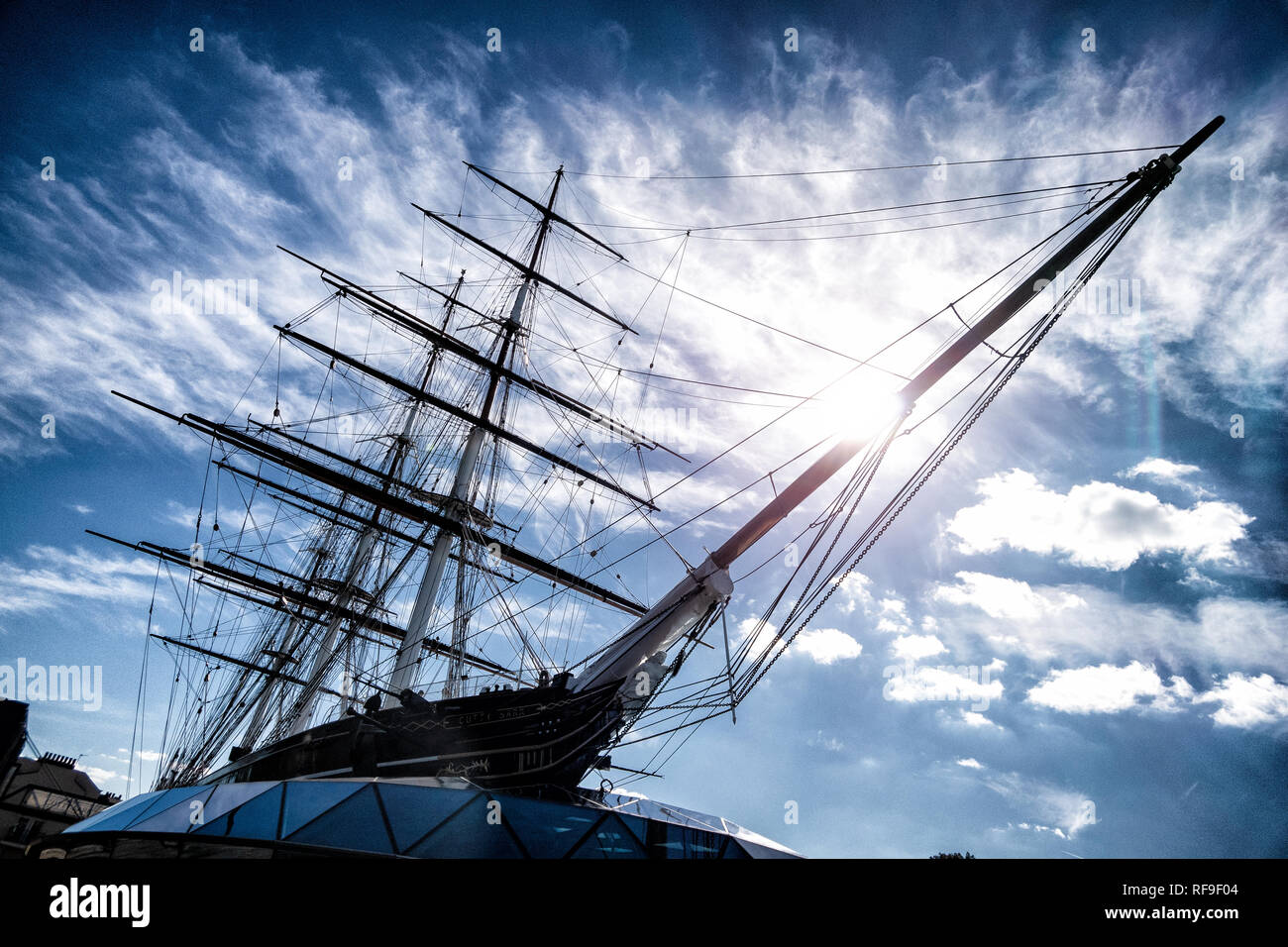 GREENWICH, UK - The Cutty Sark is a restored historic British clipper sailing ship that is now open as a tourist attraction in Greenwich, London. It was built in 1869 and in active service until 1895. In its heyday as a trader vessel, it was known as the fastest ship of its time. It was notable for its participation in the tea trade between Asia and Europe. When the opening of the Suez Canal created the opportunity for shorter and faster trips made by steam ships, the Cutty Sark was used to transport wool from Australia to Britain. The historic Cutty Sark, a British clipper ship and one of the Stock Photohttps://www.alamy.com/image-license-details/?v=1https://www.alamy.com/greenwich-uk-the-cutty-sark-is-a-restored-historic-british-clipper-sailing-ship-that-is-now-open-as-a-tourist-attraction-in-greenwich-london-it-was-built-in-1869-and-in-active-service-until-1895-in-its-heyday-as-a-trader-vessel-it-was-known-as-the-fastest-ship-of-its-time-it-was-notable-for-its-participation-in-the-tea-trade-between-asia-and-europe-when-the-opening-of-the-suez-canal-created-the-opportunity-for-shorter-and-faster-trips-made-by-steam-ships-the-cutty-sark-was-used-to-transport-wool-from-australia-to-britain-the-historic-cutty-sark-a-british-clipper-ship-and-one-of-the-image233163956.html
GREENWICH, UK - The Cutty Sark is a restored historic British clipper sailing ship that is now open as a tourist attraction in Greenwich, London. It was built in 1869 and in active service until 1895. In its heyday as a trader vessel, it was known as the fastest ship of its time. It was notable for its participation in the tea trade between Asia and Europe. When the opening of the Suez Canal created the opportunity for shorter and faster trips made by steam ships, the Cutty Sark was used to transport wool from Australia to Britain. The historic Cutty Sark, a British clipper ship and one of the Stock Photohttps://www.alamy.com/image-license-details/?v=1https://www.alamy.com/greenwich-uk-the-cutty-sark-is-a-restored-historic-british-clipper-sailing-ship-that-is-now-open-as-a-tourist-attraction-in-greenwich-london-it-was-built-in-1869-and-in-active-service-until-1895-in-its-heyday-as-a-trader-vessel-it-was-known-as-the-fastest-ship-of-its-time-it-was-notable-for-its-participation-in-the-tea-trade-between-asia-and-europe-when-the-opening-of-the-suez-canal-created-the-opportunity-for-shorter-and-faster-trips-made-by-steam-ships-the-cutty-sark-was-used-to-transport-wool-from-australia-to-britain-the-historic-cutty-sark-a-british-clipper-ship-and-one-of-the-image233163956.htmlRMRF9F04–GREENWICH, UK - The Cutty Sark is a restored historic British clipper sailing ship that is now open as a tourist attraction in Greenwich, London. It was built in 1869 and in active service until 1895. In its heyday as a trader vessel, it was known as the fastest ship of its time. It was notable for its participation in the tea trade between Asia and Europe. When the opening of the Suez Canal created the opportunity for shorter and faster trips made by steam ships, the Cutty Sark was used to transport wool from Australia to Britain. The historic Cutty Sark, a British clipper ship and one of the
 Photographs in Calcutta, India by Captain William George Stretton from 1875-1880. Stock Photohttps://www.alamy.com/image-license-details/?v=1https://www.alamy.com/photographs-in-calcutta-india-by-captain-william-george-stretton-from-1875-1880-image556177556.html
Photographs in Calcutta, India by Captain William George Stretton from 1875-1880. Stock Photohttps://www.alamy.com/image-license-details/?v=1https://www.alamy.com/photographs-in-calcutta-india-by-captain-william-george-stretton-from-1875-1880-image556177556.htmlRM2R8T244–Photographs in Calcutta, India by Captain William George Stretton from 1875-1880.
 GREENWICH, UK - The Cutty Sark is a restored historic British clipper sailing ship that is now open as a tourist attraction in Greenwich, London. It was built in 1869 and in active service until 1895. In its heyday as a trader vessel, it was known as the fastest ship of its time. It was notable for its participation in the tea trade between Asia and Europe. When the opening of the Suez Canal created the opportunity for shorter and faster trips made by steam ships, the Cutty Sark was used to transport wool from Australia to Britain. The historic Cutty Sark, a British clipper ship and one of the Stock Photohttps://www.alamy.com/image-license-details/?v=1https://www.alamy.com/greenwich-uk-the-cutty-sark-is-a-restored-historic-british-clipper-sailing-ship-that-is-now-open-as-a-tourist-attraction-in-greenwich-london-it-was-built-in-1869-and-in-active-service-until-1895-in-its-heyday-as-a-trader-vessel-it-was-known-as-the-fastest-ship-of-its-time-it-was-notable-for-its-participation-in-the-tea-trade-between-asia-and-europe-when-the-opening-of-the-suez-canal-created-the-opportunity-for-shorter-and-faster-trips-made-by-steam-ships-the-cutty-sark-was-used-to-transport-wool-from-australia-to-britain-the-historic-cutty-sark-a-british-clipper-ship-and-one-of-the-image233163807.html
GREENWICH, UK - The Cutty Sark is a restored historic British clipper sailing ship that is now open as a tourist attraction in Greenwich, London. It was built in 1869 and in active service until 1895. In its heyday as a trader vessel, it was known as the fastest ship of its time. It was notable for its participation in the tea trade between Asia and Europe. When the opening of the Suez Canal created the opportunity for shorter and faster trips made by steam ships, the Cutty Sark was used to transport wool from Australia to Britain. The historic Cutty Sark, a British clipper ship and one of the Stock Photohttps://www.alamy.com/image-license-details/?v=1https://www.alamy.com/greenwich-uk-the-cutty-sark-is-a-restored-historic-british-clipper-sailing-ship-that-is-now-open-as-a-tourist-attraction-in-greenwich-london-it-was-built-in-1869-and-in-active-service-until-1895-in-its-heyday-as-a-trader-vessel-it-was-known-as-the-fastest-ship-of-its-time-it-was-notable-for-its-participation-in-the-tea-trade-between-asia-and-europe-when-the-opening-of-the-suez-canal-created-the-opportunity-for-shorter-and-faster-trips-made-by-steam-ships-the-cutty-sark-was-used-to-transport-wool-from-australia-to-britain-the-historic-cutty-sark-a-british-clipper-ship-and-one-of-the-image233163807.htmlRMRF9EPR–GREENWICH, UK - The Cutty Sark is a restored historic British clipper sailing ship that is now open as a tourist attraction in Greenwich, London. It was built in 1869 and in active service until 1895. In its heyday as a trader vessel, it was known as the fastest ship of its time. It was notable for its participation in the tea trade between Asia and Europe. When the opening of the Suez Canal created the opportunity for shorter and faster trips made by steam ships, the Cutty Sark was used to transport wool from Australia to Britain. The historic Cutty Sark, a British clipper ship and one of the